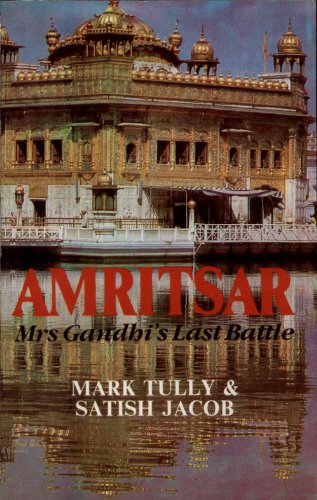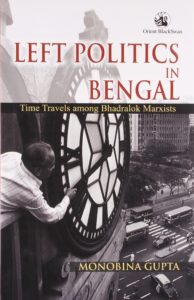ARCHIVE
The BJP entered the political fray in 1980 and in just a decade – by the 1990s – had emerged as a national party which could displace the Congress. How did it manage this extraordinary feat?
This chapter from Pralay Kanungo’s RSS’s Tryst with Politics: From Hedgewar to Sudarshan, looks at the key decades between 1973 – 1993, wherein the RSS and its affiliates became a force to reckon with on the national level, due to the organisational prowess and political astuteness of its sarsanghchalak: Balasaheb Deoras.
Madhukar Dattatreya Deoras, popularly known as ‘Balasaheb,’ was the Rashtriya Swayamsevak Sangh’s third sarsanghchalak (i.e. head). He followed in the footsteps of KB Hedgewar and MS Golwalkar, but is not as known and spoken about as his predecessors, despite his long tenure of twenty years. The lack of work on Deoras is a particularly noticeable gap in scholarship on Hindu nationalism and the spread of the ideology of Hindutva, because he played a major role in bringing the RSS into the mainstream.
A crucial work filling this lacunae is Prof. Pralay Kanungo’s in-depth analysis of Deoras’ reign, from his book RSS’s Tryst with Politics: From Hedgewar to Sudarshan. In an extremely lucid and clear analysis, he traverses many phases in the organisation’s recent history – the alliance with Jayaprakash Narayan, the ban during the Emergency, the Janata Party experiment, the establishment of the BJP and, arguably the most important, the Ram Janmabhoomi movement.
The RSS was founded in 1925 by KB Hedgewar in Nagpur. Since its inception, it maintains that it is merely a “cultural organisation”. Kanungo, through the course of his work, emphasises that this claim does not stand up against scrutiny: “The evolution of the RSS, its organisational structure and functions, the ideology of the Hindu Rashtra and its homogenising agenda unveil its political mission.” However, Kanungo observes that, despite its political orientation, it is true that the RSS has, for a long portion of its history, kept away from active politics. It has a large network of affiliates, such as the Akhil Bharatiya Vidyarthi Parishad (ABVP) and the Bharatiya Janata Party (BJP), who participate in its stead.
Kanungo traces this back to a time prior to the BJP’s establishment in 1980, when the political affiliate of the RSS was the Bharatiya Jana Sangh (BJS). The latter came into being in 1951 and contested elections right from its inception. However, until the late 1960s, it was unable to garner any significant support from the Indian populace. This can be partially attributed to the Congress’ hegemonic position as the single largest and most popular party during this period.
The tide began to change around the time Deoras assumed the reigns of the RSS. Jawaharlal Nehru – and subsequently, Lal Bahadur Shastri – had passed away and created a vacuum which the leadership hoped to fill with the as-yet unproven Indira Gandhi. Kanungo writes that the “Congress system seemed to have exhausted its potential and was losing its political hegemony by the early 1970s”. At the same time, despite attempts by erstwhile Congress leaders as well as other parties, there seemed to be no political force in the country which could pose as an alternative to Mrs. Gandhi.
Deoras, reading the writing on the wall, “thought it ideal for the RSS to enter the political fray with its alternative national agenda”. Though he only became the chief of the Sangh in 1973, Deoras was by no means a new face. He had been a part of the organisation since the age of twelve and had established himself as a favourite of both Hedgewar and Golwalkar. As Kanungo puts it, “Deoras was thus rightly described as a true child of the organisation.”
Considered “a man of organisation and pragmatic orientation”, one of the first actions Deoras undertook after assuming his position was to bring about changes in the organisational set-up of the RSS so as to make it more “capable of political action”. Further, he also began setting up other important affiliates besides the Bharatiya Jana Sangh as he understood that, despite an increase in its seats, the BJS’s performance had not been up to the mark. Under his aegis, the ABVP and the Bharatiya Mazdoor Sangh (BMS) expanded their bases amongst students and workers respectively.
This policy paid a huge dividend in the 1970s. In keeping with his pragmatic approach, Deoras did not shy away from making political compromises if and when these were required. Thus not only was the RSS, through its affiliates, able to capitalise on the anti-Indira sentiment in the early 1970s, it was also able to garner the support of the staunch Gandhian Jayaprakash Narayan, who led the nation-wide agitation against the Congress Prime Minister.
JP’s support was instrumental in bringing the RSS into mainstream public view, and that too in a positive light. The organisation had not been fully accepted by all sections of Indian society and it had been unable to shrug off the “the old stigma of ‘Mahatma Gandhi’s murderer’”. It was only with Narayan’s support that this charge could be “considerably blunted”.
The movement was clearly strong enough to threaten Mrs. Gandhi and, soon after in 1975, she declared an Emergency which lasted till 1977. In these two years, the RSS was banned and many of its leaders, including Deoras, arrested. When the Emergency was lifted, all major Opposition parties came together under the banner of the ‘Janata Party’. The coalition had members from all ends of the political spectrum: from the Communists to the Jana Sangh.
In order to establish stability within the Janata Party, the RSS adopted a “politics of accommodation and ideological flexibility”. When other Janata Party constituents began to question its communal orientation, the organisation “announced the opening of its doors to non-Hindus”. However, the coalition could not sustain. It collapsed due to internal friction and Chaudhary Charan Singh became the next Prime Minister in 1979.
The Sangh had never before possessed such an influence on government and this brief stint gave it “the opportunity to acquire an all-India status”. Kanungo writes: “The RSS got a lot of publicity, its organisation and affiliates became known throughout the country and its leadership acquired a national stature and respect.” However, there was another point of view within the organisation, backed by traditionalists who were “disillusioned with the evil effects of power politics” and this gave birth to a dilemma for the Sangh to resolve urgently.
Perhaps in response to this very dilemma, the BJP was formed in a convention held by the Jana Sangh group of the Janata Party, on the 5th of April, 1980. The new party “tried for a synthesis of ideology and realpolitik”: it retained and continued certain traditions, particularly symbols, of the Janata Party while “in terms of the leadership structure and recruitment patterns, the BJP continued with its Jana Sangh and RSS heritage”. The new party “appointed RSS men in key position” while at the same time “co-opting a few leaders from a non-RSS and non-Jana Sangh background”. In terms of ideology, it retained Deendayal Upadhyay’s ‘Integral Humanism’ while adopting ‘Gandhian Socialism’ in its statement of first principles.
Simultaneously, Deoras continued to expand the reach of the RSS and its affiliates. He was a proponent of Golwalkar’s Hindu Rashtra; for him, too, the “problem of Hindustan” was not the “Muslim” or the “Christian”, but the “disunity among the Hindus”. And so, his tenure saw the revival of the Vishwa Hindu Parishad (VHP), which had been “lying low” for decades.
The trigger for this was the mass conversion of 1500 Dalits to Islam in Tamil Nadu. In response, the VHP raised the call of “Hinduism in Danger!” and called on all Hindus to unite against this threat. It went on to organise massive events and evolved a potent political mode: “tirth yatras“. Ostensibly only religious events, these pilgrimages became vehicles of mobilization for the RSS and “religious symbols” and “ritual paraphernalia” were used to “create a community consciousness among Hindus”. The evolution of the yatra as a political tool, however, must also be seen in the context of Indira Gandhi’s usage of Hindu rhetoric and ritual for political messaging, a strategic shift in Congress messaging in the early eighties, that was leading it to electoral victory in erstwhile BJP strongholds. Eventually, after the BJP’s electoral rout in 1984, with most of its “upper-caste support” going to Rajiv Gandhi’s Congress, the Bharatiya Janata Party reverted to its “ultra-Hindu posture”. Kanungo writes: “Deendayal’s ‘Integral Humanism’ replaced ‘Gandhian Socialism’ as the basic philosophy of the party in October 1985.”
This politics of mobilisation culminated in the Ram Janmabhoomi movement. Seeing the effectiveness of the yatras, Deoras was on the look-out for a “powerful and popular Hindu symbol” and he found his answer in “Lord Ram”. As early as 1984, the VHP had announced its intention of “liberating” the birthplace of Rama at Ayodhya.
In a few years, this nascent movement got a great opportunity when the Babri Masjid was thrown open on 1st February 1986. Simultaneously, the Shah Bano case and the subsequent Muslim Women’s Bill gave the Sangh Parivar a great opportunity to sharpen its anti-Muslim rhetoric. With these twin tools and a well-oiled, rapidly growing organisation, Deoras went on the offensive.
In the last years of the 1980s and early 1990s, the Ram Janmabhoomi movement swept through the nation. The mobilisation, along with multiple rath yatras, brought the BJP great electoral dividends in the 1991 General Elections— it was now a national party in all senses of the term. It also came into power in multiple states, including Uttar Pradesh. With a BJP Chief Minister active in the state, the RSS and its affiliates stepped up the movement and the Babri Masjid was demolished in 1992. Kanungo writes: “On 16 December 1992, 300,000 kar sevaks assembled at Ayodhya and thronged the domes of the Babri Masjid. Within five hours the mosque was razed to the ground and a new make-shift Ram temple was constructed amid the rubble of the disputed structure. It was a smooth operation. The Sangh Parivar celebrated the event as a historic victory.”
A measure of the RSS’s influence at this stage is indicated by the toothlessness of the Narasimha Rao-led Congress government at the Centre, despite the massive communal violence that the Sangh Parivar’s actions led to.
“Unlike the previous bans of the RSS in 1948 and 1975,” writes Kanungo. “This time the government adopted a conciliatory rather than a firm attitude towards the RSS. Only a relatively small number of people were taken into custody under the Unlawful Activities (Prevention) Act. Key cadres had gone into hiding. Even this crackdown was soon relaxed and the seven leaders were freed on 10 January 1993. The government’s policy was further constrained by certain judicial decisions. The Madhya Pradesh High Court ordered in the end of December that the RSS offices in Jabalpur and Indore be opened. On 22 April 1993, it overturned the imposition of President’s rule in the state and ordered the restoration of the legislative assembly in Madhya Pradesh.”
Kanungo writes of the immediate aftermath of the demolition:
“The Ayodhya demolition was carefully planned by the Sangh Parivar and was facilitated by the UP government headed by Kalyan Singh. According to the ‘Citizens’ Tribunal on Ayodhya’ the demolition was pre-planned and finalized at a meeting held on 5 December 1992 and attended by HV Sesdhadri, KS Sudarshan, LK Advani, MM Joshi, Vijaya Raje Scindia, Ashok Singhal, Vinay Katiyar, Uma Bharti, Sadhvi Ritambhara, Acharya Dharmendra, Pramod Mahajan, BL Sharma and Champat Roy, apart from Moreshwar Save of the Shiv Sena. However, the RSS does not admit so. Seshadri argued that the demolition was not a part of the plan on that day and they could not gauge the intensity of the feelings of the kar sevaks. Unexpectedly they broke the human chain of the swayamsevaks guarding the place. Deoras attributed the demolition to outside elements. BJP’s White Paper on Ayodhya claims that the demolition was ‘an uncontrolled and, in fact uncontrollable upsurge of spontaneous nature.’”
The stage was therefore set for the BJP – and by extension the RSS – to assume a major role in politics as the primary alternative to the Congress. The journey was not linear, however. The party suffered a set-back in the UP, MP and Himachal Pradesh assembly elections of 1993. “These elections,” Kanungo writes. “Were widely regarded as a referendum on the demolition.”
However, the party’s fortunes would turn soon. Though Deoras stepped down as sarsanghchalak in 1994, owing to ill-health, and passed away on 17th June 1996, he was able to see the fruits of his labour when BJP leader Atal Behari Vajpayee became the Prime Minister of India one month before his death. “The Ram Janmabhoomi movement and the Rath Yatra reversed the political future of the BJP, from a marginal political party to the national alternative,” writes Kanungo. “The RSS, its ideological mentor and organisational master, no longer remained peripheral; it had now come to occupy the centrestage of Indian politics as an indispensable player.”
(Quotes, where unattributed, are from Pralay Kanungo’s RSS’s Tryst with Politics: From Hedgewar to Sudarshan)
QUEST FOR POLITICAL POWER: BALASAHEB DEORAS
The evolution of the RSS, its organisational structure and functions, the ideology of the Hindu Rashtra and its homogenising agenda unveil its political mission despite the insistence that it is merely a cultural organisation. This chapter seeks to contest this ‘cultural claim’ further by explaining the emergence of the RSS as an important political actor on the Indian political scene, particularly under the leadership of Balasaheb Deoras. Responding to the changing dynamics of Indian politics the RSS has changed the course of its political journey –– from moderate, pragmatic, and accommodative to militant, rigid and intolerant. It also examines how the RSS promoted its political mobilisation during the Ram Janmabhoomi agitation through an innovative use of Hindu cultural and religious symbols, thereby wrapping its political agence in a cultural cover.
Deoras: A Child of the Organisation
Three sealed letters of Golwalkar addressing ‘To all Swayamsevak Brothers’ were opened soon after his death in 1973. As per his wish expressed in the first letter, Balasaheb Deoras became the next sarsanghchalak. Golwalkar thus followed the same tradition set by Hedgewar. Unlike Golwalkar, who was a late entrant to the RSS, Balasaheb came under the influence of Hedgewar at the age of twelve and soon became one of his favourite swayamsevaks. Having thus entered the RSS that had been formed only two years earlier, Balasaheb grew with it and in it. He was adventurous and displayed leadership qualities since childhood. In 1939, Balasaheb became a full-time RSS pracharak in Nagpur. Then he was sent on an assignment to Calcutta for a year. After his return, he became the city secretary of Nagpur. This was a strategic position as Nagpur was the key to organisational control. In 1942, Balasaheb trained a big batch of RSS workers of Nagpur and dispatched them to different provinces. When Bhayaji Dani was sarkaryavah, Balasaheb acted as sar-sarkaryavah for many years. In 1965, Balasaheb was appointed sarkaryavah and continued in that office till 1973. Doeras was thus rightly described as a true child of the organisation. He was more of a ‘machine operator’ who had been controlling the RSS ever since the days of Hedgewar.
![MS Golwalkar, the second sarsanghchalak of the RSS. [Photo Credit: rss.org]](http://indianhistorycollective.com/wp-content/uploads/2021/06/Golwalkar.jpeg)
MS Golwalkar, the second sarsanghchalak of the RSS. [Photo Credit: rss.org]
Practical and Pragmatic
Balasaheb himself admitted that he was a student of philosophy, he lacked interest in pursuing the systems of thought. Like Hedgewar, he was known for his pragmatism, prompting Golwalkar to announce before a group of swayamsevaks as early as 1944: “If you you want to know Dr. Hedgewar, look at this young man!” He has been described as a person ‘without inhibitions’, ‘practical and pragmatic’ and ‘without any taboos regarding rites and rituals, or the practice of religiosity.’ Besides his pragmatism, he had ‘a sharp critical understanding and ability to analyse situations and suggest solutions.’ Thus the RSS clarified that his pragmaticism did not shun ideology and Hindutva was no less important to Deoras.
Three sealed letters of Golwalkar addressing ‘To all Swayamsevak Brothers’ were opened soon after his death in 1973. As per his wish expressed in the first letter, Balasaheb Deoras became the next sarsanghchalak. Golwalkar thus followed the same tradition set by Hedgewar. Unlike Golwalkar, who was a late entrant to the RSS, Balasaheb came under the influence of Hedgewar at the age of twelve and soon became one of his favourite swayamsevaks.
Organizational Reorientation: Evolving an Innovative Mechanism
As a man of organisation and pragmatic orientation, Deoras brought about changes in the organisational set-up to make it capable of political action. First, the old hierarchical structure was brought in line with the electoral constituency division. Each RSS district would now cover one or two parliamentary constituencies; below that came the assembly and municipal constituency divisions. The purpose was to build up a well-oiled election machinery. The shakhas were assigned a much wider role; they became the basic centres not only for elections to legislatures but also for managing elections of various trade unions, student unions and other socio-cultural organisations of the Sangh Parivar working within their respective areas. Secondly, the area of work between the RSS and its affiliates were properly divided; while the latter would concentrate on propaganda, the ground organisation would be controlled and manned by the former. Thirdly, married men were encouraged to take up full-time work. And to tackle the financial burden, an elaborate plan was prepared to secure control over educational and other institutions where the full-time workers could be given employment without any cost to RSS as such. Finally, changes were brought in the system of fund collection. In the past the collection through Guru Dakshina was kept secret. This was replaced by a new system whereby the head of a shakha would come to know what contribution has been made by whom. As a result it was found out that the amount of collection was more in the Jana Sangh-ruled areas.
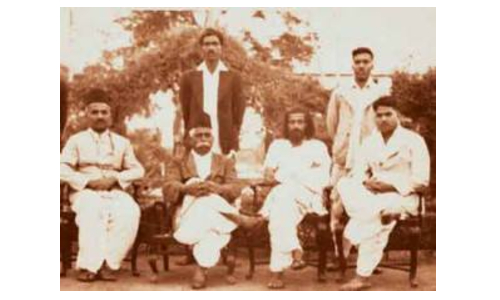
The Early RSS Team. Sitting (L-R): Appaji Joshi, Dr KB Hedgewar, MS Golwalkar
and Buban Rao Pandit. Standing (L-R) Vithal Rao Patki and Balasaheb Deoras.
Soon after his takeover, Deoras reiterated his commitment to Golwalkar’s Hindu Rashtra. For him, too, the problem of Hindustan is not the Muslim or the Christian, but the disunity among the Hindus. Therefore, the aim of the Hindu sangathan should never be undermined: ‘We are convinced that when the Hindu becomes strong and united, the whole country will become strong and united.’ Despite the confirmation of ideological continuity, Deoras made a break with Golwalkar’s hesitation towards politics. Unlike Golwalkar, he had ‘no inclination towards the spiritual.’ In contrast to Golwalkar’s idealism and quietism, Deoras displayed a flair for pragmatism and activism. But it was not just his personal flat for politics that impelled him to carve out an active political role for the RSS. Rather certain objective conditions in the country facilitated the direct political intervention of the RSS.
Seeking an Alternative National Ideology and Politics
The Indian political scene was quite volatile when Deoras took over the RSS. The Congress system seemed to have exhausted its potential and was losing its political hegemony by the early 1970s. Many senior and well-known leaders (the syndicate) had deserted the Congress party but were neither able to challenge Indira Gandhi effectively nor provide an alternative socio-economic model of development. On the other hand Indira Gandhi’s Garibi Hatao campaign was turning out to be more popular than substantive. Meanwhile, in 1964, there occurred a split in the communist party of India; both the Communist Parties, the CPI and CPI (M), were mainly confined to their regional bases. The Naxalite movement, which emerged subsequently by challenging the CPI(M), had also splintered into a dozen of groups.
The Indian political scene was quite volatile when Deoras took over the RSS. The Congress system seemed to have exhausted its potential and was losing its political hegemony by the early 1970s. Many senior and well-known leaders (the syndicate) had deserted the Congress party but were neither able to challenge Indira Gandhi effectively nor provide an alternative socio-economic model of development.
Further, post-independent India had passed through some unique experiences. A sovereign polity had already emerged on the foundation of universal franchise. Centralised rule had consolidated the national market. The communications network expanded with the use of radio and television. There was also a substantial increase in literacy rates. These developments had brought the Indian masses from diverse regions and social backgrounds into direct contact and inter-dependence. All these factors had created an objective situation for the re-casting of an all-encompassing pan-Indian identity. In the absence of any anti-imperialist struggle, anti-colonialism had lost all attraction as a binding force. An alternative national definition was needed in such a changed socio-economic-political scenario. But neither the Congress nor the Left were capable of providing such a definition.
Deoras was quick to grasp this fluidity and uncertainty in the national political scene and thought it ideal for the RSS to enter the political fray with its alternative national agenda. He thus announced that ‘the extreme opinion that the swayamsevak of the Sangh should have nothing to do with the world around him is patently wrong’ and gave a call to swayamsevaks ‘to participate in every field of national life for reformation according to RSS thinking.’ It was a daring adventure of Deoras to bring the RSS into open politics, a strategic shift from the cautious approach taken by Golwalkar.
A New Political Strategy: Rejuvenating the Affiliates
This decision of the forest to enter the political arena was also partly attributed to the growing strength of the RSS over the last thirty three years of Golwalkar’s long reign; it has undergone a phenomenal expansion having shakhas in almost every part of the country. Besides the parent organisation, the other family members were shaping up quite well particularly the BJS, the ABVP and the BMS. The political front, the BJS, had traveled a long way since its first session at Kanpur in 1952. The 1973 Kanpur session of the party showed the strength the party had acquired in the last two decades. Its labour affiliate, the BMS, had emerged as one of the strongest labour organisations in the country. Its student affiliate the ABVP had set up about 600 branches having 1,65,000 members and 24 full-time workers.
Therefore, Deoras was confident that the RSS, with its wider family network, could take up a new challenging role. Accordingly, he adopted a new strategy that reflected his political astuteness. Deoras rightly understood that despite the expansion of the BJS, its performance in the parliamentary election of 1971 and subsequent assembly elections in 1972 was quite dismal. Hence, instead of relying totally on this affiliate, the RSS should look forward to other affiliates. Thus Deoras concentrated on the two most promising affiliates, the ABVP and BMS, working among students and labour respectively. He foresaw that both these affiliates along with the BJS would play a leading role in the political struggle in the future.
Gujarat provided the first opportunity to Deoras to test the viability of his new strategy. The Congress party had begun to lose its political base there. After the 1969 split in the party, Indira Gandhi adopted a personalized and populist style to establish her party in the province. The state government announced reservations for lower castes, which was opposed by massive agitations. Thus Gujarat became the site for competitive populism resulting in riotous street politics.
Accordingly, he adopted a new strategy that reflected his political astuteness. Deoras rightly understood that despite the expansion of the BJS, its performance in the parliamentary election of 1971 and subsequent assembly elections in 1972 was quite dismal. Hence, instead of relying totally on this affiliate, the RSS should look forward to other affiliates. Thus Deoras concentrated on the two most promising affiliates, the ABVP and BMS, working among students and labour respectively.
RSS galvanized ABVP to spearhead the struggle, under the banner of Nav Nirman Samiti, against the allegedly corrupt government of Chimanbhai Patel. The movement succeeded by overthrowing the government. The ABVP proved its political potential. The RSS gained confidence at this success and thought of carrying out such struggles against the corrupt inefficient Congress government in other states. Thus using mass street mobilizations to topple governments became a standard practice. The next stage was set in Bihar.
Aligning with Jayaprakash Narayan against Indira Gandhi
Meanwhile Indira Gandhi’s authoritarian style of functioning was getting pronounced day by day. The RSS was quick to understand the nature of her functioning and started opposing it. For example, the RSS took strong objection to the question of supercession of senior judges of the Supreme Court in the appointment of the Chief Justice. An editorial of the Organiser warned that ‘the politically conscious elements of Indian society will have to exert themselves to keep the press free, the judiciary independent and the legislatures responsive – if India is not to drift into the nightmare of a corrupt dictatorship.’ Referring to the appeal of the Congress leader Shashi Bhushan for a ‘limited dictatorship,’ L.K. Advani cautioned: ‘it seems the Congress-I is seriously toying with the idea of scuttling democracy, and supplanting it with a totalitarian or quasi-totalitarian set-up.’ Thus, the RSS started taking a strong position against the authoritarian tendency of Indira Gandhi.
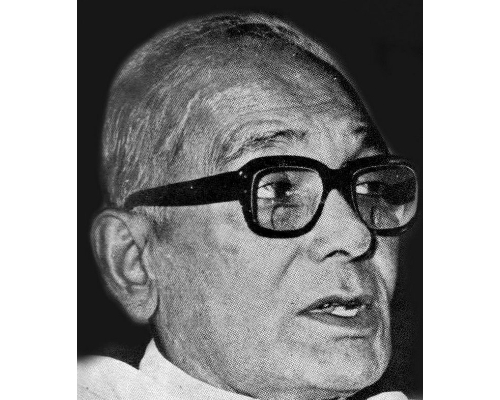
Jayaprakash Narayan’s support played a significant role in bringing the RSS into the mainstream
Jayaprakash Narayan launched a protest movement against the corrupt Congress government of Bihar. The ABVP became a part of the Chhatra Sangharsh Samiti (CSS) and joined the JP movement. In late 1974, the movement changed its character by moving beyond Bihar and targeting Indira Gandhi. JP’s concept of ‘total revolution’ was endorsed by the RSS. The ABPS of the RSS took the unusual step of supporting Narayan’s ‘total revolution,’ though it maintained its tradition of keeping a loop from political activities. In a rally at Delhi Balasaheb Deoras called JP a ‘saint’ who had ‘come to rescue society in dark and critical times.
Jayaprakash Narayan launched a protest movement against the corrupt Congress government of Bihar. The ABVP became a part of the Chhatra Sangharsh Samiti (CSS) and joined the JP movement. In late 1974, the movement changed its character by moving beyond Bihar and targeting Indira Gandhi. JP’s concept of ‘total revolution’ was endorsed by the RSS.
Jayaprakash reciprocated the compliment by publicly praising the Sangh Parivar. He attended the 20th All-India session of the Jana Sangh and declared, ‘If Jana Sangh is fascist, then I, too, am a fascist.’ He further complimented the RSS for its efforts to reduce economic inequality and corruption. Both JP and the RSS needed each other. While JP had the leadership, the RSS had committed cadre. Any struggle against Indira Gandhi demanded a close cooperation between the two. JP’s approbation certainly enhanced the public stature of the RSS. The old stigma of ‘Mahatma Gandhi’s murderer’ was considerably blunted with the certificate from a former close associate of Mahatma Gandhi.
RSS and Anti-Emergency Struggle
On 5 June 1975, the Allahabad High court declared Indira Gandhi’s election to the parliament invalid due to violations of election law. The opposition parties demanded her resignation. They formed the Lok Sangharsh Samiti (LSS) to coordinate the activities of the JP movement. Nana Deshmukh, a former RSS pracharak, and the organising secretary of the BJS, became its general secretary. On 25 June 1975 JP gave a call to the defence forces not to carry out the ‘illegal order.’ The next morning a state of Emergency was declared and the political opponents of Indira Gandhi including Balasaheb Deoras were arrested. The RSS was banned on 5th July 1975 under Defence of India Rules, 1971, and a large number of RSS members were arrested.
The initial response of the RSS was cautious. Madhavrao Mulay, the general secretary, declared the organisation has been dissolved. However, the RSS kept alive an effective skeleton organisation, although in shakhas, training camp, parades and other activities were stopped. Soon some leading pracharaks, after consulting imprisoned Balasaheb Deoras, met at Bombay in late July to chart out the action plan for their banned organisation. They decided that the RSS would work closely with the LSS, thus breaking the RSS tradition of keeping the organisation aloof from political movements. The coordinating work of the RSS with the RSS would be carried out by the four zonal pracharaks: Yadavrao Joshi (south), Rajendra Singh (north), Moropant Pingale (west), and Bhao Rao (east). In addition, while Rambahu Godbole was entrusted with the task of contacting the opposition party leaders, Eknath Ranade was to liaison with the government. Incidentally, Ranade was assigned the same job during the previous ban of 1948-9. This meeting also charted the following course of action for the band organisation: (a) to keep up the moral of the swayamsevaks by arranging some form of congregations; (b) to establish an underground press; (c) prepare for the nationwide satyagraha, establishing contact with significant non-political figures and with prominent representatives of the minority communities; and (d) solicit overseas Indian support for the RSS in the underground activities of the LSS. However, many critics believe that the RSS was keen on a compromise rather than fight Indira Gandhi.
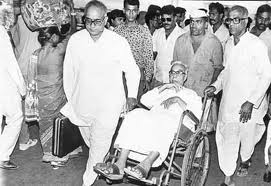
Balasaheb Deoras (on wheelchair) was also jailed during the Emergency
Despite these versions, other evidence suggests that the RSS played a key role in the struggle against Emergency. Its cadre was the backbone of the LSS which spearheaded the JP movement. After the arrest of JP, Nana Deshmukh assumed the responsibility of leading the LSS. When Deshmukh was arrested, D.B. Thangadi, the general secretary of the BMS, took charge. Thus the RSS contributed its cadre and leaders to the LSS of the anti-Emergency struggle. Thousands of its members were arrested while offering satyagraha against the authoritarian regime of Indira Gandhi.
Despite these versions, other evidence suggests that the RSS played a key role in the struggle against Emergency. Its cadre was the backbone of the LSS which spearheaded the JP movement. After the arrest of JP, Nana Deshmukh assumed the responsibility of leading the LSS. When Deshmukh was arrested, D.B. Thangadi, the general secretary of the BMS, took charge. Thus the RSS contributed its cadre and leaders to the LSS of the anti-Emergency struggle.
However, it is not to argue that it was only the RSS and its affiliates that participated in the struggle. All opposition parties like the Samyukta Socialist party (SSP), the Bharat Lok Sal (BLS) the Congress (Organisation), the CPI (Marxist), and Naxalites opposed the Emergency. Even many students, teachers, lawyers, doctors, actors, writers, peasants, workers and other professionals, who did not have any party-affiliation, sacrificed their career to join the struggle against dictatorship and authoritarianism. Thus, it was a concerted effort of all individuals, groups and political parties who wanted the restoration of democracy in India. Therefore, the credit goes to the Indian people who participated and sympathized with the struggle.
Post Emergency Era: Politics of Accommodation and Ideological Flexibility
The Emergency experience greatly exposed the cadres and the leaders of the RSS to the political environment of the country and made them ambitious. They felt proud of having participated in the ‘second freedom struggle.’ This baptization was badly needed for any political claim in the future as the RSS avoided the fight against colonialism during the freedom struggle. This participation gave them a unique opportunity to feel the political pulse of the people. It also widened the limited political outlook of the Jana Sangh experiment. Their interaction with different political parties, groups and individuals prove to be immensely beneficial.
All these new experiences compelled the RSS leaders to ponder whether they should continue to stick to the old and logical framework of the Hindu Rashtra or should they redefine it in the light of the changed political dynamics. Deoras rightly realised that to remain in the mainstream of national politics, the RSS should opt for a politics of accommodation. Therefore, as the realpolitik demanded, there should be no hesitation to redefine its exclusivist ideological moorings and seek a politics of pragmatism and accommodation. This changing attitude of the RSS leadership helped the formation of the Janata alliance of the opposition parties when general elections were announced. The RSS cadre campaigned vigorously against Indira Gandhi. The Janata alliance won the elections. After the victory the ban on the RSS was lifted on 4 July 1977.
RSS during Janata Period
The Janata alliance became Janata Party on 1 May 1977. The RSS approved the merger of the BJS in this new party which formed the first non-Congress government in New Delhi. Three of its swayamsevaks from the Jana Sangh group, A.B. Vajpayee, L.K. Advani and Brij Lal Verma, got cabinet berths in the Morarji government. After the June assembly elections, the Jana Sangh members became chief ministers in three States, Himachal Pradesh, Madhya Pradesh and Rajasthan and in the Union Territory of Delhi; and shared power in UP, Bihar Haryana and Orissa. Again most of them were RSS swayamsevaks.
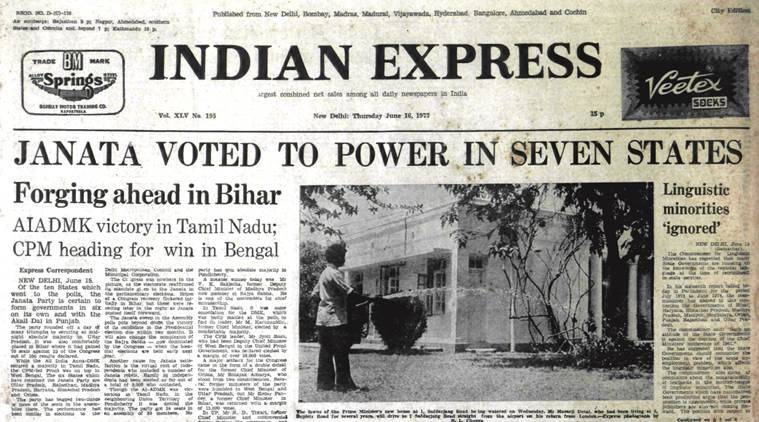
The Janata Party had many phenomenal victories in the 1977 elections
The other constituents of the Janata Party, particularly the erstwhile socialists, were quick to grasp the growing influence of the RSS. They feared, on the basis of its large disciplined cadres and its influence of the erstwhile Jana Sangh members, the RSS would soon become too powerful and eclipse other constituents of the Janata Party. Therefore the devised a strategy to keep the RSS under control. It was suggested that the RSS should merge with the youth wing of the Janata Party to form a united volunteer organisation. This was rejected by the RSS.
The Janata alliance became Janata Party on 1 May 1977. The RSS approved the merger of the BJS in this new party which formed the first non-Congress government in New Delhi. Three of its swayamsevaks from the Jana Sangh group, A.B. Vajpayee, L.K. Advani and Brij Lal Verma, got cabinet berths in the Morarji government.
Deoras did not accept the proposal, which he thought, would certainly adversely affect the long-term objectives of his organisation. This would not only invite intense political attack from detractors, but would also bring decadent political culture to the RSS. Therefore, the RSS, as an organisation, should never become a part of the government. Even the BMS and the ABVP were not allowed to merge the identities with respective labour and student counterparts of the Janata Party. Besides ,being strongly entrenched in the Janata government and with political affiliates taking care of the RSS interests, Deoras not feel any real need for such a merger.
Thus Deoras cleverly avoided the politics of competition and bickering. He rather preferred to concentrate in and spend his energy on other areas where there was hardly any competition and the RSS could expand its support base more quickly and effectively. Accordingly, the RSS sought mutual cooperation with the Janata government in the areas of adult education, social welfare, youth affairs etc. Government patronage, the RSS reasoned, would ensure the flow of resources for these welfare activities.
There was another dimension: the RSS and its affiliates had been growing at a fast pace and the financial burden was becoming heavier for the maintenance of its growing number of whole-timers and another karykartas. Their involvement in the RSS projects would provide them engagement as well as financial assistance. With this strategy, the RSS expanded its sphere of influence in the government as well as non-government sectors and grew rapidly during the Janata regime.
Controversy on ‘Dual Membership’ and admitting non-Hindus
This rapid growth of the RSS alarmed other Janata constituents. They became apprehensive that the erstwhile BJS, backed by the strong and disciplined RSS cadre, would soon control the organisational apparatus of the party. Therefore, they raised the question of dual membership and demanded the members of the old BJS should sever their links with the RSS as the party constitution denied membership to any anybody belonging to any other political party, communal or other, which has a separate membership, constitution and programme. They pleaded that any association of the members of the Janata party with the RSS, a ‘Hindu communal organisation’ would undermine the secular credentials of the party. The Jana Sangh faction countered that the RSS was a cultural organisation and there was no restriction to be associated with it.
Surprisingly, the RSS phenomenon did not come up either during the parliament elections or the time of the merger of the Jana Sangh with the Janata Party. They were raised only when the struggle for power became intense between the constituents of the party. This issue of ‘dual membership’ was used to both gain leverage against the Jana Sangh group and to damage their capacity to mobilize additional support within the Janata party.
Thus Deoras cleverly avoided the politics of competition and bickering. He rather preferred to concentrate in and spend his energy on other areas where there was hardly any competition and the RSS could expand its support base more quickly and effectively. Accordingly, the RSS sought mutual cooperation with the Janata government in the areas of adult education, social welfare, youth affairs etc. Government patronage, the RSS reasoned, would ensure the flow of resources for these welfare activities.
To tackle the issue of dual membership, the RSS announced the opening of its doors to non-Hindus. As discussed earlier, the Emergency experience had softened its attitudes towards non-Hindus. Jayaprakash Narayan, the new political mentor of the RSS, had been emphasizing this issue for quite some time. Moreover, the Jana Sangh constituent of the Janata Party wanted its parent party to adopt an inclusive policy of admission, which would save its leaders from constant criticism and embarrassment in the Party forum. While Adopting the open door policy, the RSS did not compromise on its traditional goal of uniting the Hindu community. Its leadership was clearly reluctant to take any action which might undermine the brotherhood’s commitment to each other and to the RSS.
Demise of the Janata party and Disillusionment of the RSS
Even this gesture of the RSS could not stop the division of the party. Raj Narayan was the first to leave the party to form the Janata (Secular) Party, thereby claiming that the Janata Party was ‘unsecular.’ The next exit was of the Charan Singh group which also took a strong anti-RSS stance. Morarji Desai lost his majority and resigned 15 June 1979. The Jana Sangha faction threw its weight with Jagjivan Ram, a Harijan leader, thus attempting to shed its upper-caste image. However, the President invited Charan Singh to form the government. The caretaker government, being unable to muster support, resigned, and general elections were held in January 1980. The election gave a massive mandate to Indira Gandhi and proved to be a disaster for the Janata Party.
![Jagjivan Ram (Left) and Chaudhary Charan Singh. [Photo Credits: charansingh.org]](http://indianhistorycollective.com/wp-content/uploads/2021/06/CSandJagjivanram.jpeg)
Jagjivan Ram (Left) and Chaudhary Charan Singh. [Photo Credits: charansingh.org]
The leaders of the Janata Party analysed the causes of the electoral defeat. On the one hand, Jagjivan Ram attributed the defeat to the ‘hostile activities of the RSS,’ and also charged that a ‘secret’ understanding existed between the RSS and Indira Gandhi. On the other hand, some other leaders argued that the presence of the RSS members in the party gave it a communal image, thereby resulting in the loss of support of the minorities and lower castes and leading to the pole debacle. The Janata Party had to sort out the RSS issue once and for all.
Some leaders of the Janata party again raised the question of ‘dual membership’ and wanted the Jana Sangh group to sever ties with the RSS. This time the Jana Sangha constituent left it on the wisdom of the RSS leadership, which preferred to keep deliberate silence. In the light of the new political configuration, it was perhaps a wise option. The RSS was thoroughly disillusioned with the internal bickering of the Janata Party. It saw the writing on the wall and thought it would be futile to attempt its resurrection. The RSS leadership realised it was high time for the Jana Sangh constituent to come out of the party and form an alternative of its own.
RSS Dilemma: Power Politics or Ideological Purity?
The political experience, though exciting, was not all that pleasant for the RSS leaders. It was exciting because it gives them an opportunity to acquire an all India status. They felt elated when each major decision of the national government required their approval, or at least their considered opinion. The RSS got a lot of publicity, its organisation and affiliates became known throughout the country and its leadership acquired a national stature and respect. Perhaps, except the Congress party, no other organisation had achieved this status.
The political experience, though exciting, was not all that pleasant for the RSS leaders. It was exciting because it gives them an opportunity to acquire an all India status. They felt elated when each major decision of the national government required their approval, or at least their considered opinion. The RSS got a lot of publicity, its organisation and affiliates became known throughout the country and its leadership acquired a national stature and respect. Perhaps, except the Congress party, no other organisation had achieved this status.
However, many traditionalists within the RSS got disillusioned with the evil effects of power politics. They thought that the ideology of the Hindu Rashtra was compromised when the RSS opened its doors to non-Hindus despite the fact that there was hardly any entry. Many RSS leaders did not appreciate the way the RSS was dragged into each and every controversy and advocated to go back to Golwalkar’s policy of quiet expansion. Moreover, factional politics was alien to their culture. Though they manage to suppress the revolt of Balraj Madhok with no difficulty, Subramanian Swamy’s public criticism of Vajpayee caused a lot of embarrassment to the RSS leaders.
All this mixed experience called for an introspection. What should be the ideological parameters? Should it go back to the old and rigid ideological roots of the Hindu Rashtra of Golwalkar era or stick to the softer version that it had been experimenting with during the post-Golwalkar phase? The positive gains of power politics far outweighed the negative experiences. It could not overlook the fact that its newly acquired power and status were primarily the fruits of power politics and a politics of accommodation. At the same time the RSS also could not ignore that there always remained a threat of slipping into pure power politics and losing its ideological goal. Therefore, it was gripped by a dilemma; in its search for an alternative political structure, the RSS could neither ignore the strength of its ideology nor the benefits of power politics.
Attempting a Synthesis: Birth of the Bharatiya Janata party (BJP)
In the midst of this dilemma, the Jana Sangh group of the Janata Party organised a convention on 5 April 1980 and announced the birth of the Bharatiya Janata Party. The new party, reflecting the RSS mind, tried for a synthesis of ideology and realpolitik. As it aspired to extend its geographical, demographic and ideological reach, the BJP required retaining and continuing certain traditions of the Janata Party. It retained the name of Janata, adopted the Lotus as a party symbol rather than the lamp of the Jana Sangh. Its new flag was half saffron and half green, the latter symbolising secularism. Though the party appointed RSS men in key positions, it co-opted a few leaders from a non-RSS and non-Jana Sangh background. Its organisation; structure was designed on the basis of participatory democracy rather than the democratic centralism of the RSS. However, in terms of the leadership structure and recruitment patterns, the BJP continued with its Jana Sangh and RSS heritage.
In the midst of this dilemma, the Jana Sangh group of the Janata Party organised a convention on 5 April 1980 and announced the birth of the Bharatiya Janata Party. The new party, reflecting the RSS mind, tried for a synthesis of ideology and realpolitik. As it aspired to extend its geographical, demographic and ideological reach, the BJP required retaining and continuing certain traditions of the Janata Party.
In terms of ideology, the party retained the Integral Humanism’ of Deendayal Upadhyay, while adopting Gandhian Socialism as the party’s statement of first principles. Its ideological modification of the militant Hindu nationalism of the Jana Sangh could be further noticed in its commitment to five principles (panch-nishtha), such as nationalism, national integration, democracy, secularism and value-based politics.
All these terms of synthesis reflected the ground political reality within the Sangh Parivar. The leading affiliates of the RSS, after the national political exposure and power sharing, were in no mood to return to the traditional ‘cultural’ line. More importantly, the BJP leaders hope to convert the party into a national alternative to the Congress. Therefore, it felt the necessity of moving beyond its old confines of high-caste, urban middle class, Hindi-speaking north India. The RSS fully endorsed this understanding of its political affiliate and tried to offer an ideological rationale through a mix of Hindu Rashtra and Gandhian Socialism. But certain hardliners in the party ranks were opposed to this hybrid ideology. These protests were perhaps supported by a section of RSS leadership, which did not appreciate this new line.
![Atal Behari Vajapayee during the BJP's first convention at Bandra. [Photo Credits: @indianhistorypics, Twitter]](http://indianhistorycollective.com/wp-content/uploads/2021/06/ABV.jpeg)
Atal Behari Vajpayee during the BJP’s convention at Bandra. [Photo Credits: @indianhistorypics, Twitter]
To some of the observers of Indian politics, this new ideological line of the BJP, particularly the adoption of Gandhian socialism indicated its ideological independence from the RSS. But it needs to be remembered that it was Deoras, who a year before the formation of the BJP, proudly claimed that ‘we are real followers of Gandhi’s principles of tolerance and non-violence.’ Then the RSS argued that on most issues nobody was closer to Gandhi then itself and claimed that his Hind Swaraj could very well be an RSS text. Further, since the days of the Bihar agitation, the RSS closely identified itself with Jayaprakash Narayan, a practitioner of Gandhian politics. Under his influence, the RSS had been consciously integrating Gandhian ideals in its various programmes to enhance its popularity and acceptability. Rajendra Singh, successor of Deoras, claimed that the Sangh Parivar had been following the legacy of Gandhi by trying ‘to fulfill his cherished dream of Ramrajya and Swadeshi:’ cow protection by the VHP, Swadeshi by SLM, upliftment of the tribals by VKA, Gandhiji’s gram-swaraj by DRI, and restoration of Bharatiya languages by Vidya Bharati. Moreover, the swayamsevaks’ life is the best example of Gandhiji’s precept of simple living.
Therefore, BJP’s adoption of Gandhian socialism was not at all contradictory to the RSS position. It rather reflected the ideological dilemma and confusion of the RSS, whicheasis pondering whether to go back to the ideological roots of Hindu Rashtra or adhere to Gandhi for political expediency. Further, A.B. Vajpayee and other moderates might try to influence the RSS leadership to permit them to experiment with this new line. But there was no evidence to suggest they were pursuing a line at the expense of the RSS. They could hardly afford to do so.
To some of the observers of Indian politics, this new ideological line of the BJP, particularly the adoption of Gandhian socialism indicated its ideological independence from the RSS. But it needs to be remembered that it was Deoras, who a year before the formation of the BJP, proudly claimed that ‘we are real followers of Gandhi’s principles of tolerance and non-violence.’… Further, since the days of the Bihar agitation, the RSS closely identified itself with Jayaprakash Narayan, a practitioner of Gandhian politics.
New Religio-political Strategy: Revival of the VHP
During these years of introspection, an incident occurred at Meenakshipuram in Tamil Nadu. Here, in 1981, some 1500 Harijans were converted to Islam. The RSS expressed its deep concern over the mass conversions and calls upon the government to impose a legal ban on conversion. It also called upon the ‘entire Hindu Society to bury the deep internal caste dissensions and pernicious practice of untouchability and stand up as one single homogenous family. In the prevailing circumstances, the incident provided an opportunity to the RSS to re-oriented its strategy.
As discussed earlier, Deoras, after taking over the leadership, adopted a strategy of activating and assigning the affiliates like the ABVP and the BMS a frontal role in the turbulent political years. These affiliates carried out their tasks quite successfully during and after the Emergency and also in the Janata days. In the context of new emerging possibilities on the issue of Meenakshipuram, a new strategy has to be adopted. Which affiliate could be entrusted to carry out the new assignment? The RSS found none of the tried affiliates suitable for this purpose. The VHP seemed to be ideal. Though set up way back in 1964, it was lying low till then. The VHP was primarily active among the tribals and untouchables by setting up schools, clinics and temples. Its main purpose was to block the influences of Christianity and Islam.
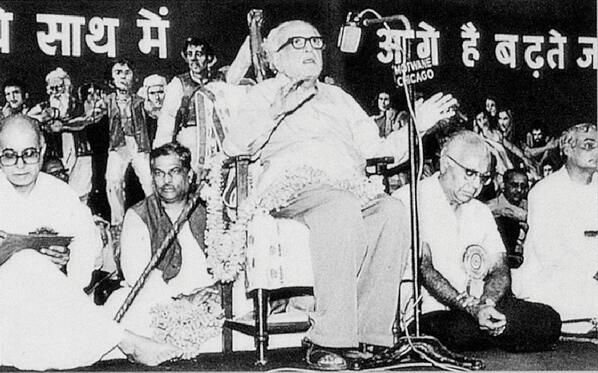
BJP’s inaugural conference, Bombay, 1980.
The Meenakshipuram incident brought a metamorphosis in the VHP. In the RSS strategy for the coming years, it was going to be the torchbearer. VHP took the assignment and raised the alarm of ‘Hinduism in Danger!’ It warned that, unless the conversions were immediately banned and reversed, Hindus would become minorities in India. The RSS sought to introduce the VHP to the various sects of Hindu religion and seek legitimacy for its future role as the vanguard of Hindu interests. Therefore, it organised a Hindu Unity conference in Delhi in September 1981 on the issue of Meenakshipuram, in which representatives from different Hindu organisations including the VHP participated. Karan Singh chaired the conference and it was decided to float a society called ‘Virat Hindu Samaj.’ The following office bearers were nominated to manage Virat Hindu Samaj: Karan Singh, president; Lala Hans Raj Gupta, working president; PC Gupta, commerce secretary, and Ashok Singhal, organising secretary. All of them trusted RSS men, except Karan Singh whose presence was primarily symbolic. As an able statesman and man of letters he was widely known among the educated. Moreover, as an erstwhile scione of the Hindu royal family of Jammu, his symbolic leadership would ensure the support of various Hindu sects to the imminent VHP-led movement. The Samaj decided to hold a ‘Virat Hindu Sammelan’ in Delhi on October 1981.
The Meenakshipuram incident brought a metamorphosis in the VHP. In the RSS strategy for the coming years, it was going to be the torchbearer. VHP took the assignment and raised the alarm of ‘Hinduism in Danger!’ It warned that, unless the conversions were immediately banned and reversed, Hindus would become minorities in India. The RSS sought to introduce the VHP to the various sects of Hindu religion and seek legitimacy for its future role as the vanguard of Hindu interests.
The Sangh Parivar organised the Virat Hindu Sammelan, a massive rally of the Hindus ‘for national identity and national integrity.’ The slogans raised in this rally are significant enough to be mentioned.
‘Hindu sare ek, ped ek hai shakha anek’ (All Hindus are one; it is one tree, even though it has innumerable branches); ‘Dhokha, lalach, petrodollar, nahin chalega, nahin chalega’ (fraud, corruption and petrol dollars shall not prevail); ‘Ek hi patni, ek Vidhan, Hindu ho ya Musalman’ (let there be one law and monogamy –– for Hindus and Muslims). These slogans reminded one of the ideal ideological thrust of the Golwalkar era by proposing a Hindu unity on the foundation of an anti-Muslim tirade. Another slogan which needs a special mention was ‘Hindu Hindu sab mil Jao, chooa chhot ka bhoot bhagao’ (let all Hindus unite and exercise The monster of untouchability). Golwalkar never gave priority to the abolition of untouchability. The Meenakshipuram conversion compelled the RSS to adopt a clear line on the issue. Deoras also understood that to become a national political force, the RSS had to co-opt the Untouchables on a much bigger scale. Therefore, the Virat Hindu Sammelan adopted the abolition of untouchability as one of its objectives.
Strategic Shift of the Congress: Indira Gandhi’s Hindu card
This religio-political strategy of the RSS got a further boost by Indira Gandhi’s new political approach. In fact, the post-Emergency Indira Gandhi government was a different one from her pre-Emergency regime. The radical slogan of Garibi Hatao was no more heard. Terms like ‘secular’ and ‘socialist’ fell out of favour. Rather, she preferred to remain under the spiritual guidance of Swami Dhirendra Brahmachari, made pilgrimages to sacred rivers, shrines and temples across the country and spoke of ‘Hindu hegemony’ in the Hindi heartland. Karan Singh was a prominent Congressmen and his participation in a RSS sponsored meeting must have been in her knowledge.
All these may be tactical as the Congress base among the minorities was shrinking and the conflict in Punjab and Kashmir had acquired a religio-political dimension. But Indira Gandhi’s new approach certainly generated enthusiasm among the leaders and cadres of the RSS. They felt happy that she was facilitating the growth of Hindu consciousness in the Hindi heartland, which the RSS had been aspiring all along. Some people in the RSS had raised the question: how far is it correct for the BJP to pursue diluted Hindutva, when ironically the Congress was taking a pro-Hindu posture.
Indira Gandhi’s thrust on Hindu rhetoric and rituals paid rich dividends to the Congress in the election of Jammu & Kashmir and Delhi held in early 1983. Surprisingly, the BJP was completely wiped out from the Jammu area, which had been traditional stronghold of the Jana Sanga. Most surprisingly for the party, in the Delhi elections, the Congress scored a convincing victory in the metropolitan council and corporation. Some speculated that the RSS cadres maintained a neutral stance in the elections as there was an understanding between the RSS and the Congress. However, no authentic information is available to substantiate this allegation. Many swayamsevaks of course voted for the Congress, as the RSS showed no enthusiasm for the BJP.
This religio-political strategy of the RSS got a further boost by Indira Gandhi’s new political approach. In fact, the post-Emergency Indira Gandhi government was a different one from her pre-Emergency regime. The radical slogan of Garibi Hatao was no more heard. Terms like ‘secular’ and ‘socialist’ fell out of favour. Rather, she preferred to remain under the spiritual guidance of Swami Dhirendra Brahmachari, made pilgrimages to sacred rivers, shrines and temples across the country and spoke of ‘Hindu hegemony’ in the Hindi heartland.
Though it is difficult to ascertain whether Indira Gandhi had a secret pact with the RSS, but her electoral victory certainly taught the RSS a few lessons: first, a distinct Hindu constituency still existed in the Hindi heartland, and if properly aroused, could give definite electoral dividends; and secondly, the loyalty of this constituency is not fixed and could be manipulated by any political party which had the ability to arouse it more passionately. These lessons had some implications for the RSS: first, its religio-political strategy, with VHP at the centre, needed to be further accentuated for mass mobilization of Hindus; secondly, the future ideological-political line of the BJP ought to be redefined.
Mass Mobilisation by VHP: Politics of Yatras
In the context of Indira Gandhi’s wooing of the Hindus, the VHP was perceived as an ideal instrument for the rival mobilization of the Hindus, particularly in north-India. The RSS carefully planned out the strategy. The traditional Hindu rituals of pilgrimage (tirth-yatras) had to be revived to reinforce the community consciousness among the Hindus. Accordingly the VHP organised three major ‘pilgrimages’ under the slogan of ‘Pilgrimage for Unity’ (Ekatmata Yatra) between mid-November and December 1983, for the whole of India: from Haridwar in the foothills of Himalayas to Rameshwaram in Tamil Nadu; from Pashupatinath in Nepal to Kanyakumari; and from Gangasagar in West Bengal to Somnath in Gujarat. Incidentally, all these three yatras intersected at Nagpur, the headquarters of the RSS.
The aim of these pilgrimages was to gloss over caste, sect and denominational differences and invoke the spirit of unity among Hindus. The message was clear: ‘Hinduism was in danger and no danger was more sinister than the possibility of a concerted movement of Muslim and untouchable communities working together; Signatories of the appeal to join the yatras include not only the members of the Sangh Parivar, but also the Arya Samaj, the Rotary Club, the Lions Club and also, more notably, the Jain Sampradaya, the Vaishnav Parivar, Sikh Parivar, Bauddha Sampradaya and Bharatiya Dalit Varga Sangh. Therefore, an attempt was made to associate virtually all non-Hindu communities with the yatras and to isolate the Muslims.
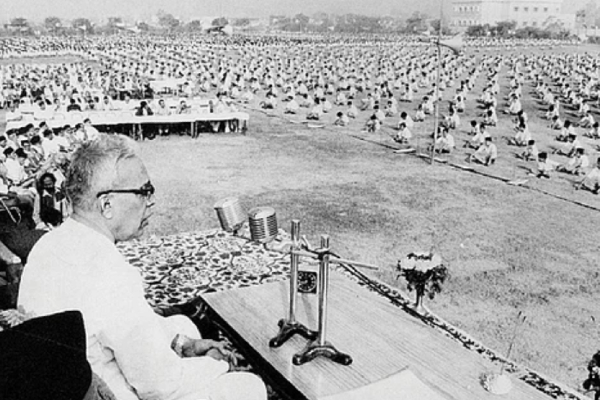
Balasaheb Deoras addressing a rally.
According to the VHP, this month-long campaign mobilized sixty million people and covered 85,000 km. The roots of the yatras were so designed that they touched maximum numbers of Hindu shrines and religious places. The chariots (rathas) of the VHP carried a huge portrait of Mother India (Bharat Mata) and urns (kalasha) containing Ganga water throughout the journey. Throughout the campaign, religious books, portraits of Bharat Mata, badges and stickers depicting ‘Om,’ yogasan charts and pictures of great men were sold through stalls setup on the road. Thus the VHP used a lot of Hindu religious ritual paraphernalia and sacred symbols to create a community consciousness among Hindus.
In the context of Indira Gandhi’s wooing of the Hindus, the VHP was perceived as an ideal instrument for the rival mobilization of the Hindus, particularly in north-India. The RSS carefully planned out the strategy. The traditional Hindu rituals of pilgrimage (tirth-yatras) had to be revived to reinforce the community consciousness among the Hindus. Accordingly the VHP organised three major ‘pilgrimages’ under the slogan of ‘Pilgrimage for Unity’ (Ekatmata Yatra) between mid-November and December 1983, for the whole of India…Incidentally, all these three yatras intersected at Nagpur, the headquarters of the RSS.
Invoking Politics of Ram: Deploying the Most Popular Hindu Symbol
The favourable response of the Hindus to these yatras then encouraged the RSS to search for a powerful and popular Hindu symbol that would further boost the mobilization. Ram, the most popular Hindu god of North India, fitted ideally into the scheme. In April 1984, the VHP, for the first time, announced its intention of liberating the Ram Janmabhoomi, the ‘birthplace of Ram’ at Ayodhya, which was allegedly destroyed by Babur to construct a mosque in the early sixteenth century. Few popular symbols like this could have mobilized the Hindus on such a gigantic scale.
The mobilization strategy was carefully worked out. The VHP Dharma Sansad gave a clarion call to free Lord Ram who was still behind bars and the Ram Janmabhoomi Mukti Yojana was launched. A huge chariot cavalcade – actually motorcade of trucks carrying images of ‘Lord Ram behind bars,’ were by a thousand karsevaks with swords and tridents – marched from Bihar towards Ayodhya. However, this march was interrupted due to Indira Gandhi’s assassination. 1985 witnessed the Ram-Janaki Rath Yatra. The stated aims were: first, to create a Hindu awakening and Hindu unity by emphasizing the need to transcend caste and sect differences in the worship of Lord Ram; and secondly, to popularize the concept of Ram Rajya, the ideal state.
Thus the most popular Hindu religious symbol of Ram was deployed to facilitate the politics of the Sangh Parivar.
The RSS announced that places like Somnath, Rameshwaram and Ayodhya were not merely religious places – but also points of national faith and unity. ‘Desecration of such points of national faith is an open aggression on our national life. And all such desecrated spots are verily blots on our national freedom. And eradication of all such stigmas is nothing less than vindication of our national ethos and honour.’ It viewed the Ram Janmabhoomi agitation as ‘a battle for national self-assertion’. In a surprising judgement in 1986, the Faizabad district judge ordered opening of the locks on the shrine allowing unhindered access to Hindu devotees. The VHP threatened to start a satyagraha if the locks were not open. The government complied with the court order and the temple was open to the devotees amidst much fanfare on 1 February 86.
Meanwhile, the issue of the Muslim Personal Law became a centre of controversy with the judgement of the Supreme Court in the Shah Bano case. The Rajiv Gandhi government not accept the Supreme Court ruling and introduced the Muslim Women’s Will under severe communal pressure. Why did the government yield to communal pressure? The Congress felt the need to stem the anger of Muslims over the Shah Bano verdict which was reflected in the results of various by-elections in Assam, Kishanganj (Bihar), Baroda (Gujarat) and other places. These defeats compelled the Congress to bring the Muslim Women’s Bill to retain its Muslim constituency. The Shah Bano controversy provided the Sangh Parivar a convenient handle to intensify their anti-Muslim campaign against the pretext of ‘appeasement of minorities.’ In the assessment of the Parivar leaders, this event marked a watershed in the mobilization of Hindus.
Ram, the most popular Hindu god of North India, fitted ideally into the scheme. In April 1984, the VHP, for the first time, announced its intention of liberating the Ram Janmabhumi, the ‘birthplace of Ram’ at Ayodhya, which was allegedly destroyed by Babur to construct a mosque in the early sixteenth century. Few popular symbols like this could have mobilized the Hindus on such a gigantic scale.
Consolidating the Organisation for Militant Offensive
During the decade 1979-89, the number of swayamsevaks of the RSS had swelled from 10 lakh to 18 lakh. The number of shakhas increased to 25,000 spreading over 18,880 cities and villages. It had 38 front organisations and 50 lakh people were connected with their activities. More importantly, the RSS showed spectacular growth in south India. For example, 3,000 daily shakhas and 900 weekly gatherings were organised in 12 out of 14 districts in Kerala. Therefore, the RSS was confident of its strength before it decided to go in for the offensive.
The centenary celebration year (1988-9) of K.B. Hedgewar provided the opportunity to the RSS to galvanize the cadre and propagate its ideology. Deoras spelt out three objectives during the year: first, to acquaint people with Hegdewar’s pre-RSS life; secondly, to propagate its ideology of Hindu Rashtra; and thirdly, to acquaint the people with its service projects. While centenaries of other patriots were ‘sarkari centenaries’ being sponsored by the government, this would be a ‘people’s centenary’ being solely ponsored by the RSS. On the government’s refusal to release a centenary stamp, the Rss, in protest, printed 1 crore cards having the picture of Hegdewar on the front and the map of Akhand Bharat with the saffron flag at the back. It planned that its swayamsevaks would read more than 2 lakh villages during the year. Thus this year was spent in preparation before the onslaught. Incidentally, the year 1999 was also celebrated as the silver jubilee of the VHP and various programs were undertaken to revitalize it.
A meeting of the top leaders of the Sangh Parivar took place at Ahmedabad on 24 March 1989. Beside Deoras, other important leaders of the Parivar who attended it were H.V. Sheshadri, Rajendra Singh Yadav, Rahul Joshi of the RSS, Ashok Singhal of the VHP, L.K. Advani, A.B. Vajpayee and S.S. Bhandari of BJP, B.P. Thengadi of BMS and Madan Das Devi of ABVP. A close coordination among the leading members of the RSS family was obviously required before going for the offensive.
Militant Offensive: Ramshila Pujan
Soon after the VHP’s decision to construct a temple in Ayodhya, the ABKM of the RSS appealed to all Hindus to extend their generous help for the purpose. The Allahabad High Court issues an interim directive to maintain the status quo of the disputed property. The RSS announced the Ram Janmabhoomi was beyond the purview of the court. The VHP now argued that if the government could overrule a judgement in the Shah Bano case through legislative action, it should also override the judgement on Ayodhya.
The event that became the eye of the storm, was Ramshila Pujan. The VHP launched a campaign to carry consecrated bricks, called Ramshilas, from every village with a population of 2,000 or above for the construction of the Ram temple. This programme was meticulously planned out. The bricks were taken to Ayodhya through panchayat centres, district headquarters and state capitals. A minimum contribution of Rs. 1.25 per head was collected. The VHP organised kirtans, prayers, discourses, musical concerts and symposia in the villages. The aim was to carry the ideology of Hindutva to each village and town and mobilize the Hindu through the medium of Ram. RSS leaders attended all the important Shila Pujan functions. The brick programme was simultaneously traditional in its vestments while highly innovative in form. Hindus of all regions and persuasions would engage in a common act of devotion to a single deity – Ram. No sponsor of a temple had ever before involved the general public in temple building on such a large scale.
During the decade 1979-89, the number of swayamsevaks of the RSS had swelled from 10 lakh to 18 lakh. The number of shakhas increased to 25,000 spreading over 18,880 cities and villages. It had 38 front organisations and 50 lakh people were connected with their activities. More importantly, the RSS showed spectacular growth in south India.
The beatific smile of Ram in VHP posters had been replaced by a war-like image – Ram with his trident and bow ready. This new imagery of Ram came from television epics – Ramanand Sagar’s Ramayana and BR Chopra’s Mahabharat. The latter especially glorified a militaristic and virile Hinduism. The telecasting of these epics on Doordarshan resulted from the decision of an insecure Congress party. Though Ram existed all along, popular perceptions were vague and varied. The telecasting of Ramayana, which was primarily based on the Ramcharitmanas of Tulsidas, ignored the traditions of ‘many Ramayanas’ projecting a uniform version. The serials certainly concreticised certain perceptions of Ram. For instance, when people were asked about Ayodhya before the telecast, though they identified Ayodhya as the birthplace of Ram, their idea about the place was still vague. After the telecast, they defined it as a town in UP. Thus the broadcasting of Ramayana and Mahabharata helped to create a national Hindu identity, a form of consciousness that had not hitherto existed.
It became easier for the VHP to project a militant Ram, a symbol of strength and power. Passionate slogans rent the air: ‘Saugandh Ram ki khate Hain hum Mandir vahin banaenge’ (We swear by Ram we will build the temple at the same site), ‘Baccha-baccha Ram ka, janma-bhoomi ke kaam ka’ (Every child belongs to Ram and for Ram Janmabhoomi) and ‘Jis Hindu ka khoon na khaule, khoon nahi vo pani hai; janmabhoomi ke kaam na aaye, vo bekaar jawanee hai’ (That Hindu whose blood does not boy has gotten his veins, you that is not do that does not serve the Ram Janmabhoomi is youth lived in vain). Therefore, the Ramshila campaign was not only mobilisational, it was confrontational as well. It became aggressively anti-Muslim and provoked communal violence. The government again yielded to the pressure of the RSS and VHP and permitted shilanyas.
BJP’s Metamorphosis: From Communal Harmony to ultra-Hinduism
Since the Meenakshipuram incident the VHP had taken a frontal role in religio-political mobilization. Being pushed back to the background, the BJP has been undergoing a transformation in tune with the new RSS strategy. The ideological dilemma that prevailed during its birth had gradually disappeared. In the beginning, in its attempt towards a synthesis, it demonstrated its commitment towards communal harmony. BJP’s ‘positive secularism’ promised ‘full protection of the life and property of the minorities.’ In his addressed to National Council of the party in 1982, Atal Behari Vajpayee advised the opposition parties to ‘resist the temptation of compromising with religious and communal fanaticism…simply to get power.’ The National Executive of the party passed a resolution on ‘Communal Harmony and Social Cohesion’ in 1983, which stated: ‘No religion encouraged or condones hatred of violence against one’s fellow beings…A Hindu, Moslem, Christian or whosoever maimed or killed is an Indian disabled or lost. Life and property lost is not just Hindu loss or Muslim loss but a national loss.’
The beatific smile of Ram in VHP posters had been replaced by a war-like image – Ram with his trident and bow ready. This new imagery of Ram came from television epics – Ramanand Sagar’s Ramayana and BR Chopra’s Mahabharat. The latter especially glorified a militaristic and virile Hinduism. The telecasting of these epics on Doordarshan resulted from the decision of an insecure Congress party.
The BJP began reverting to its ultra-Hindu posture after its 1984 electoral rout. It realized that the dilution of its earlier position as a champion of the Hindu had cost it dearly. Rajiv Gandhi’s landslide victory was attributed partly to his ability to win over most of the upper-caste support that previously went to the BJP. Therefore, a return-to-the-roots was to be adopted as the BJP’s main strategy. Deendayal’s ‘Integral Humanism’ replaced ‘Gandhian Socialism’ as the basic philosophy of the party in October 1985. LK Advani was installed as the new president of the party in May 1986.
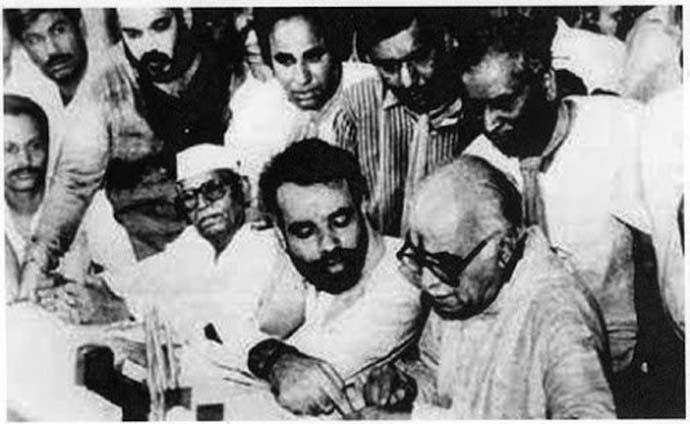
LK Advani filing his election nomination. Narendra Modi (L), then an RSS worker, assisting him.
The BJP hardened its anti-Muslim position on the Shah Bano judgement and the subsequent Muslim Women’s Bill. While the party welcomed the judgement of the Supreme Court as ‘pre-eminently just and sensible,’ it strongly rejected the Muslim League knew that this judgement was an interference in the religious affairs of Muslims. Rajiv Gandhi’s move to amend the law was described as ‘retrograde, anti-women and a surrender to obscurantism bigotry.’ Advani observed that the Muslim Women Bill ran counter to the Directive Principles of the Constitution (Article 44) enjoining the state to frame a Uniform Civil Code. He reiterated that the concept of sarva dharma sama bhava should never make any distinction between one citizen and another on the ground of religion. The BJP intensified its anti-Muslim campaign by accusing the government of promoting ‘minorityism.’ LK Advani summed up ‘minorityism’ as the promotion of a minority complex among the minorities, which serves neither national interest nor even minority interest. He branded the secularism of the government as ‘pseudo-secularism.’
Besides the Shah Bano case, certain other factors facilitated the BJP’s anti-Muslim propaganda. A massive Hindu backlash was building up because of the situation in Punjab and Kashmir. The poll analysis of the Assam assembly elections confirmed the understanding of the RSS that if a party could get a block of Hindu votes, it had a fair chance of coming to power. The Asom Gana Parishad (AGP), despite the Muslim opposition, could get the majority on the basis of block Hindu votes. Henceforth the BJP decided to aim at the consolidation of Hindu votes in its favour. For garnering the Hindu votes, it became a practical necessity to harden its stance on controversial issues like Art. 370, Minorities Commission and Ayodhya. The BJP found particular potential in the Ayodhya dispute, which could not only refurbish its Hindu identity, but also create a solid Hindu vote bank.
Babri Masjid to Ram Janmabhoomi
It is interesting to note that the early party documents recognised the existence of the Babri Masjid at Ayodhya without any reservations. In the national executive meeting of the party held between December 1986 and January 1987, LK Advani condemned a Muslim organisation’s boycott call of Republic Day celebrations ‘in protest against the Babri masjid issue.’ Hence the BJP did not mention Ram Janmabhoomi or Ram Temple until then. It is only on June 1989 the national executive of the BJP adopted its first detailed resolution on Ayodhya at Palampur (Himachal Pradesh). The resolution categorically blamed Babur for destroying the temple situated at Ram Janmasthan at Ayodhya and constructing a mosque in its place. It made clear that the court ‘cannot adjudicate’ this dispute. As the resolution of the party demanded: ‘The sentiment of the people must be respected and Ram Janmasthan handed over to the Hindu – if possible through a negotiated settlement, or else, by legislation. Litigation certainly is no answer.’
The BJP began reverting to its ultra-Hindu posture after its 1984 electoral rout. It realized that the dilution of its earlier position as a champion of the Hindu had cost it dearly. Rajiv Gandhi’s landslide victory was attributed partly to his ability to win over most of the upper-caste support that previously went to the BJP. Therefore, a return-to-the-roots was to be adopted as the BJP’s main strategy.
Thus, with the Palampur resolution, the Babri Masjid was changed to Ram temple; and the BJP publicly committed to a militant Hindu line. The Palampur resolution signalled that the time had come for the BJP to take the leading role in the Ram Janmbhoomi agitation, which was so far under the control of the VHP. This new role further demanded that the party had to intensify its fanatically anti-Muslim and aggressively pro-Hindu campaigns. In this atmosphere Lok Sabha elections took place at the end of 1989.
Giant Electoral Leap: Courtesy Hindutva
The BJP election manifesto criticized the Congress on the Shah Bano case, its attempt to recognise Urdu as a second language in UP and above all, for not allowign the rebuilding of the Ram temple at Ayodhya. After the 1989 elections, no party won an absolute majority in parliament. However, the BJP increased its strength to a hefty 86 compared to a meagre 2 in the previous parliament. In the Uttar Pradesh assembly elections, it increased its tally from 16 to 57. During the subsequent elections for the 8 state assemblies held in early 1990, the BJP increased its tally to 496 from 162 in the previous assemblies. This electoral performance further convinced the Sangh Parivar that militant Hindutva could pay further electoral dividend.
The Janata Dal led National front formed a minority government with the support of the BJP as well as the left parties. BJP’s support to the National Front government, spelt out that in Advani’s letter of 29 November 1989, referred to specific ‘reservations’ – Article 370, Uniform Civil Code, Human Rights Commission and Ram Janmabhoomi. However, the BJP, as a major supporter of the government, acquired a decisive say in the affairs of governance. Though it did not participate in the government, it had its pound of flesh; its leaders were appointed as Governors in a few states. Through the appointment of Jagmohan as the Governor of Jammu and Kashmir it tried to monitor the Kashmir policy. As the nature of this new government was fragile, major political parties soon competed to expand their own support beside bases anticipating a mid-term poll. While the BJP continued to consolidate its Hindu constituency through the movement of the RSS, VP Singh announced various concessions to the Muslims in order to strengthen his hold among Muslims.
RSS objects to VP Singh’s Muslim appeasement
The Sangh Parivar objected to the following gestures of VP Singh’s government towards the Muslims. First, the Prime Minister met the Shahi Imam of Jama Masjid to express his ‘indebtedness.’ Secondly, he appointed a Muslim as the Home Minister of India for the first time. Thirdly, he ordered to throw open all protected mosques under the supervision of the Archaeological Survey of India for prayers during the Ramzan period. The RSS reminded the Prime Minister that Indira Gandhi had resisted the pressure and allowed prayers at Safdarjung only for a day in 1984. Moreover, VP Singh granted Rs. 50 lakh for renovation of the Jama Masjid, which did not fall under the protector category of monuments. The RSS argued that the masjid did not require any renovations and the grant would only benefit the Imam.
The Palampur resolution signalled that the time had come for the BJP to take the leading role in the Ram Janmbhoomi agitation, which was so far under the control of the VHP. This new role further demanded that the party had to intensify its fanatically anti-Muslim and aggressively pro-Hindu campaigns. In this atmosphere Lok Sabha elections took place at the end of 1989.
VP Singh’s announcement from the Red Fort that Prophet Muhammad’s birthday would be observed as a public holiday received further hostile opposition from the Sangh Parivar. LK Advani pleaded that no public holiday was observed in Arab countries including Saudi Arabia on the Prophet’s birthday. Moreover, important Hindu festivals like Ram Navmi were not national holidays. He criticized the government’s ‘dual standards’ and accused it of following a discriminatory policy against the Hindus in this regard. Advani demanded that Ram Navmi, Janmashtami and Shivratri should be cleared as national holidays. Though all these gestures of VP Singh did not benefit the Muslims in any concrete terms, these were exploited by the Sangh Parivar to its fullest advantage in its anti-Muslim camapaing.
Mandal Report and the RSS Dilemma
Besides Muslims, VP Singh also decided to woo the backward castes. With his acceptance of the Mandal Commission Report which made an additional reservation of 27 per cent of jobs for the backward castes, Indian politics took a decisive turn. Various explanations are offered suggesting the motive of the implementation of this report which was in cold storage for about a decade. First. it was a counter-move to assert his leadership by containing the proposed rally of Devi Lal. Secondly, the Janata Dal was in need of creating a support base among these caste-groups in north India to counter the Congress. Finally, his objective was to blunt the edge of the pan-Hindu identity, which was so assiduously being shaped by the RSS.
This action of VP Singh immediately identified the Janata Dal with the interests of the numerically preponderant backward castes. But Singh and the Janata Dal incurred maximum hatred and contamination from the upper castes and the urban middle class, specially the professionals. Mandal decision also greatly antagonized the media and the intelligentsia, dominated by the upper caste and fearful of losing their earlier access to power due to their educational advantage.
But above all, acceptance of the Mandal reports threatened to split the political base of the BJP. The Sangh Parivar had been working meticulously to expand its upper-caste support by utilising the ideology of Hindu nationalism. Its targets were primarily the numerically strong and politically assertive backward castes. Singh’s strategy now seemed to strike at the roots of Hindu electoral consolidation so important to the BJP. The RSS criticised VP Singh’s ‘antique politics’ and described him as ‘a broker of the few affluent backward castes’ who would be the real beneficiaries of Mandalization of India.
Both Advani and Vajapayee threatened to withdraw support if the government did not review its stand. The BJP ruled Himachal Pradesh rejected the report. However, the party was caught in a trap: if it supported the issue, it would alienate its followers of the urban areas, particularly among the educated middle class; and if it opposed the Mandal report, it would lose the support of backward class Hindus of the rural areas. Moreover, many of its backward caste members in parliament prevailed upon it to not oppose the issue directly.
But above all, acceptance of the Mandal reports threatened to split the political base of the BJP. The Sangh Parivar had been working meticulously to expand its upper-caste support by utilising the ideology of Hindu nationalism. Its targets were primarily the numerically strong and politically assertive backward castes. Singh’s strategy now seemed to strike at the roots of Hindu electoral consolidation so important to the BJP.
The RSS was trapped. The best option to overcome this Mandal dilemma was to shift the focus on to the Mandir and the Muslims. Deoras focused on the Ram Janmabhoomi issue in his annual Vijaya Dashmi speech and announced: ‘We are no longer slaves and hence tolerate any symbols of slavery’ and any approach which implied that sarva dharma sama bhava was ‘a one-way track for Hindus while the others should continue to be intolerant.’ He was firm on the abrogation of Article 30 and 370 of the Constitution and adoption of a Uniform Civil Code. Accordingly on 12 September Advani announced that he would commence his Rath Yatra from Somnath Gujarat to Ayodhya in Uttar Pradesh, a distance of 10,000 km.
Rath Yatra: Concerted Effort of the Sangh Parivar
Advani’s Rath Yatra was not the decision of the BJP. It was a carefully designed strategy of the RSS. The yatra was a concerted effort of all the leading members of the RSS family. Bhaorao Deoras, brother of Balasaheb and a master political strategist of the RSS, reportedly spent two weeks in Delhi coordinating Advani’s Rath Yatra plants. The motive of yatra was clearly political rather than religious. The Toyota rath, carrying the party symbol prominently, made their political intentions very clear.
Advani was ideally suited to the purpose. He was the chosen Hero. Despite his insistence that it was the VHP who was leading the movement, it was Advani, who became identified as the leader of the movement. He was presented as a dharma dhwaja by the priest of the Somnath temple before he started his Dharma Yuddha (holy war). However, Advani very shrewdly interpreted that the issue was not Hindu vs. Muslim ot the construction of the temple but a’a crusade for strengthening national unity and promoting nationalism in the country.’ He was out to restore ‘national pride.’ The Rath Yatra would be ‘a great act of national integration.’ During the entire journey is severely criticized ‘pseudo-secularism’ and ‘minorityism’ of the Congress, Communists and the Janata Dal. He also made scathing references to the havoc caused by the mandal report.
For the people, the decorated rath was a temple. They greeted it with folded hands, touched the tyres and took the sand below it placing it on their forehead. Women danced and performed aarti. At every place the most common offering was traditional weaponry: arrows, dices, maces, swords, trishuls and kripans. At Jatpur in Gujarat 101 Kshatriya youths offered him a bowl containing their blood. The slogans raised were highly inflammatory: ‘Jab jab Hindu jaga hai, Desh mein molla bhaga hai’ (When the Hindus have risen, the mullahs have fled the country”; ‘Musalmanon ko donon sthan, Pakistan aur kabarsthan’ (Muslims have two places– Pakistan or the graveyard).
Advani’s Rath Yatra was not the decision of the BJP. It was a carefully designed strategy of the RSS. The yatra was a concerted effort of all the leading members of the RSS family. Bhaorao Deoras, brother of Balasaheb and a master political strategist of the RSS, reportedly spent two weeks in Delhi coordinating Advani’s Rath Yatra plants. The motive of yatra was clearly political rather than religious. The Toyota rath, carrying the party symbol prominently, made their political intentions very clear.
Advani was arrested at the fag end of his journey at Samastipur, Bihar. The BJP predictably withdrew support to VP Singh resulting in the downfall of his government. Though he failed to reach Ayodhya, he had already achieved his mission. The journey was a spectacular success in western and north India from the point of view of the Sangh Parivar. Advani ‘had succeeded in momentarily uniting a deeply fragmented Hindu society in a symbolic show of strength.’ Advani might have succeeded in uniting the Hindu, but he certainly divided the nation by igniting anti-Muslim hysteria among the Hindus. The entire country witness unprecedented communal violence. The Mulayam Singh government resorted to police firing on kar sevaks ways to protect the mosque on 30 October and 2 November killing 50 odd kar sevaks.
The killing of the kar sevaks provided the opportunity to the leaders of the Sangh Parivar to fuel the agitation. The RSS described this action as ‘re-enactment of Jallianwala’ and VP Singh and Mulayam Singh Yadav were compared with Babur and Mir Baqi respectively. The killed kar sevaks were declared martyrs and the ashes were to be carried in urns – called asthi kalash – in a procession all over the country. The objective was not just to highlight the atrocities of the state, but also to make the Muslims responsible for being the indirect cause of these killings. As a symbol, the mortal remains of the martyrs were ‘more powerful than the frigid breaks which were used first for the “shilanyas ceremony.”’
The popular Hindu support to the Rath Yatra was described by Advani as the ‘greatest Mass Movement’ in independent India. The response was certainly spectacular in bringing various sections of Hindus towards the ideology of Hindutva. The assertion of Hindu identity further widened the gulf between Hindus and Muslims. The response of the State, like on previous occasions, was ambivalent. It allowed Advani to complete major part of his journey. The communal virus had already spread before his arrest. The firing on kar sevaks complicated the situation further and provided a convenient handle to the RSS.
The Ram Janmabhoomi movement and Rath Yatra enabled the Sangh Parivar to penetrate the domain of Indian politics that had eluded it so far. No longer did it remain confined to its traditional geographical boundary – the pockets of urban north India; now extended its presence all over the country, both urban as well as rural, more than ever before. Further, the RSS made a conscious attempt to widen its narrow upper-caste support base. Though it is true that angry anti-Mandal upper caste youth lent their overwhelming support to the Ram Janmabhoomi agitation, the movement undoubtedly generated lot of enthusiasm among the youths belonging to the backwards, Dalits , tribals and created a pan-Hindu identity.
1991 Elections: Focus on Ayodhya
Soon after Rath Yatra the RSS galvanized the BJP and other affiliates for the elections. The BJP changed its presidents in February 1991; Murli Manohar Joshi, another hardcore RSS man replaced Advani. An aggressive electoral campaign was launched by the Sangh Parivar to reap an electoral harvest from the Ayodhya affair. The VHP announced plans for a gherao of parliament house on 4 April and went ahead with the plan despite the dissolution of the Lok Sabha. This huge rally in which more than a million people participated, was addressed by a host of Sangh Parivar leaders: Sudarshan, Singhal, Advani, Joshi, Uma Bharti, Sadhvi Rithambara, Mahant Avaidyanath. An appeal was made to the electorate to fill the parliament with Rambhakts – the devotees of Ram. Thus the 1991 election campaign was launched on a VHP platform on strident note.
The journey was a spectacular success in western and north India from the point of view of the Sangh Parivar. Advani ‘had succeeded in momentarily uniting a deeply fragmented Hindu society in a symbolic show of strength.’ Advani might have succeeded in uniting the Hindu, but he certainly divided the nation by igniting anti-Muslim hysteria among the Hindus. The entire country witness unprecedented communal violence.
BJP election manifesto, entitled Towards Ram Rajya, promised ‘Ram, Roti and Insaaf.’ It underlined its ‘high integrity, consistent ideology, internal discipline and stability, mature leadership and dedicated cadre to do them all.’ During the campaign video-vans toured different parts of the countries and one of the video tapes that was shown frequently was that of the kar seva at Ayodhya. It aroused great passion among Hindus. Emotive slogans such as ‘Jo Hindu hit ki baat karega, wahi desh par raj karega’ (Only those who can take care of the interests of Hindus will rule the country) and ‘BJP ko lana hai, Ram rajya banana hai’ (Bring the BJP to power to bring Ram’s rule) were raised. Firebrand speakers like Rithambara and Uma Bharati toured the country propagating Hindutva through their inflammatory anti-Muslim speeches and appealed to the people to vote for the construction of the Ram temple at Ayodhya.
BJP’s Emergence as National Alternative
BJP contested a record number of 477 seats. In comparison to the 1989 elections, when it won 86 Lok Sabha seats and got only 11.5 per cent of votes, this time it increased strength to 120 by polling 20 per cent of votes. In as many as 167 constituencies, the BJP polled more than 16.33 per cent of votes. The party achieved a landslide victory in Gujarat by pocketing over 50 per cent of votes and winning 20 out of 25 Lok Sabha seats. In UP the BJP polled 32.8 per cent votes and won 15 out of the 85 states. In Delhi it poured over 40 per cent of votes and captured 5 out of 7 seats. Though it suffered some losses in Rajasthan and Madhya Pradesh in terms of seats, it gained in votes. Only in Maharashtra and Himachal Pradesh did it lose seats as well as votes. The party also showed a presence in the southern states of Karnataka (9 seats) and Andhra Pradesh (1 seat), polling over 28 per cent and 9 per cent of votes respectively. It also improved its performance in the eastern states. In Assam it won 2 out of 14 seats. Though it could not open its account in West Bengal and Orissa, it got 11.7 about 10 per cent votes respectively. This widespread support base of the BJP made it a potential national alternative.
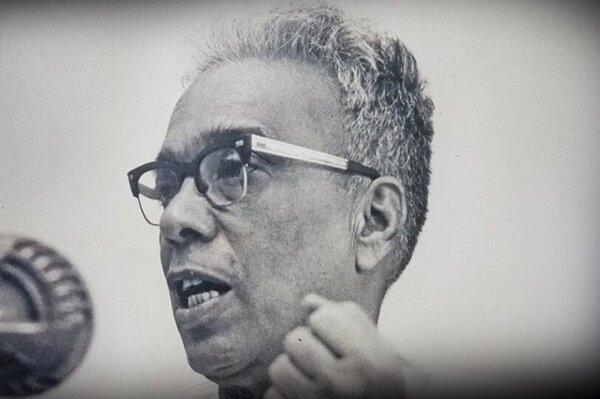
Balasaheb Deoras giving a speech.
Thus the BJP emerged on the Indian political scene with reinvigorated self-confidence; it became the largest Opposition party in the tenth Lok Aabha and LK Advani became the leader of the Opposition. Unlike the 1977 and 1989 Lok Sabha elections, this time its electoral victory was because of its own strength rather than the outcome of alliances with non-Congress opposition parties. The BJP projected itself as an independent political force and succeeded in attracting the electorate despite the attempt of the opposition parties to isolate it. Though the growth of the BJP could be attributed largely to the ‘temple politics’ it was also benefited by a steady decline of the Congress in north Indian states. Moreover, the BJP, since the Janata experiment in 1997, had been making inroads into the rural areas through the alliance partners. Beside its focus on the Mandir issue, its anti-Mandal stance and withdrawal of support to VP Singh’s government enhances its credibility among the upper castes. They rallied behind the BJP firmly, particularly in UP, to counter Mulayam Singh Yadav’s attempt to forge the unity of Muslims, backward castes and Dalits.
Thus the BJP emerged on the Indian political scene with reinvigorated self-confidence; it became the largest Opposition party in the tenth Lok Aabha and LK Advani became the leader of the Opposition. Unlike the 1977 and 1989 Lok Sabha elections, this time its electoral victory was because of its own strength rather than the outcome of alliances with non-Congress opposition parties. The BJP projected itself as an independent political force and succeeded in attracting the electorate despite the attempt of the opposition parties to isolate it.
Another landmark for the Sangh Parivar was the electoral victory of the BJP in UP; the capture of power in the state would give an impetus to its Ayodhya campaign. Kalyan Singh. who belonged to a backward caste, was chosen to become the chief minister bypassing the claims of old RSS loyalists and BJP heavyweights like Kalraj Mishra and Lalji Tandon. Obviously, the strategy was to enlist the support of the backward caste to counter the influence of Mulayam Singh Yadav, bete noire of the Sangh Parivar.
Sustaining anti-Muslim Propaganda
The Sangh Parvivar continued with its politics of yatras; Murli Manohar Joshi, Advani’s successor, undertook the Ekta Yatra from Kanyakumari to Kashmir. During the campaign he attacked Art. 370 and asked the people to reflect seriously on the dangers faced by the Indian national. He unfurled the national flag at Lal Chowk in Srinagar on 26 January 1992. Despite being a low-key affair in comparison to Advani’s Rath Yatra, it undoubtedly served a purpose by keeping anti-Muslim propaganda alive. In November 1992, LK Advani and MM Joshi led two pilgrimages, which on this occasion set off from Ayodhya towards Kashmir. The plan was to draw attention to the situation of the martyred Hindus in the state. These marches built up the pressure that would lead to the destruction of the Ayodhya mosque.

The Babri Masjid was demolished on 6th December, 1992
Salman Rushdie’s powerful and complex novel Satanic Verses created a furore among the Muslim community. The book was banned as it was allegedly an assault on their beliefs. The Muslim community stood up in defence of the divine nature of the truth as revealed by the prophet. This very argument was turned against Muslims in the Ayodhya controversy. Hindu fundamentalists insisted that the actual historical record was irrelevant. Religion is a matter of faith and belief, and since the Hindus believed that a temple to Ram once stood on the the site, this belief gave an extra-constitutional sanction to the programme. The continuing existence of the mosque on a site so sacred to Hindus, they argued, was a continuing personal assault on every Hindu.
The teleserial ‘Chanakya’ was telecast in 1991-2 by Doordarshan, the state-run TV channel. Though its theme appeared to be different from the epic serials ‘Ramayana’ and ‘Mahabharat,’ in reality it was a mere continuation. Its recurring motifs were ‘the twin concerns proclaimed by the proponents of today’s Hindu “rasthravadis”: the need for an ‘Akhand Bharat’ to combat fragmentation which lays ‘us’ open to the external enemy; and the need to combat through the creation of a new Hindu male, the hydra-headed corruption spawned by the wielders of state power, which represents the eating away of the vital of the nation by the “internal enemy.”’ The RSS was getting ready for its next assault in this milieu.
Operation Demolition
16 December 1992, 300,000 kar sevaks assembled at Ayodhya and thronged the domes of the Babri Masjid. Within five hours the mosque was razed to the ground and a new make-shift Ram temple was constructed amid the rubble of the disputed structure. It was a smooth operation. The Sangh Parivar celebrated the event as a historic victory. HV Seshadri observed that the demolition was undoubtedly morale boosting for the Hindu psyche. On 30 October 1993, hosting of the Bhagwa was symbolic assertion of the nation’s Hindu identity. But now, that standing monument to foreign invaders’ insult to the nation’s honour and independence had itself been erased. OP Kohli, the president of the Delhi unit of the BJP and a trusted RSS worker, expressed that it was good the mosque was destroyed because it had been a ‘blot in the face of India and, therefore, onour national honour.’ Even Vajapayee spoke in the same vein: Babri masjid ‘was a symbol of shame and has been erased.’ and put the blame on the Allahabad High court for delaying the judgement which provoked ‘a group’ to demolish the disputed structure. Girilal Jain, who had been vociferously championing Hindutva in his column, wrote that Muslims must learn a ‘lesson’ from the destruction of the mosque, and that they should remember that there was no going back to pre-6 December situation since political mobilization of Hindus as Hindus had never occurred before.
16 December 1992, 300,000 kar sevaks assembled at Ayodhya and thronged the domes of the Babri Masjid. Within five hours the mosque was razed to the ground and a new make-shift Ram temple was constructed amid the rubble of the disputed structure. It was a smooth operation. The Sangh Parivar celebrated the event as a historic victory. HV Seshadri observed that the demolition was undoubtedly morale boosting for the Hindu psyche. On 30 October 1993, hosting of the Bhagwa was symbolic assertion of the nation’s Hindu identity.
The Ayodhya demolition was carefully planned by the Sangh Parivar and was facilitated by the UP government headed by Kalyan Singh. According to the ‘Citizens’ Tribunal on Ayodhya’ the demolition was pre-planned and finalized at a meeting held on 5 December 1992 and attended by HV Sesdhadri, KS Sudarshan, LK Advani, MM Joshi, Vijaya Raje Scindia, Ashok Singhal, Vinay Katiyar, Uma Bharti, Sadhvi Ritambhara, Acharya Dharmendra, Pramod Mahajan, BL Sharma and Champat Roy, apart from Moreshwar Save of the Shiv Sena. However, the RSS does not admit so. Seshadri argued that the demolition was not a part of the plan on that day and they could not gauge the intensity of the feelings of the kar sevaks. Unexpectedly they broke the human chain of the swayamsevaks guarding the place. Deoras attributed the demolition to outside elements. BJP’s White Paper on Ayodhya claims that the demolition was ‘an uncontrolled and, in fact uncontrollable upsurge of spontaneous nature.’
The Fallout: Communal Riots
The demolition intensified Muslim anger and despair resulting in riots in many places. Celebrations and victory processions of the Hindus lead to riots at some places. As the Srikrishna Commission observes: ‘the irresponsible act of the hindutva parties in celebrating and gloating over the demolition of Babri masjid was like twisting a knife in the wound and heightened the anguish of the Muslims.’The celebration rally organised by the Shiv Sena in Dharavi is an example.’ In Bombay, a large number of Muslims assembled near Minara Masjid in Pydhoni at about 20.20 hours on 6 December to protest against demolition. Despite the fact that the protesters were not armed, the police mishandled the situation and by their aggressive posture turned the peaceful protests into violent. The riots continued till 12 December. The targets were mainly policemen and Hindu temples. The riots later turned to be less a case of Hindu-Muslim conflict than Muslims against the police and vice cersa. During these riots the police forces went completely berserk, showing again the process of communalisation of police forces, which had been going on for yours. Srikrishna Commission observed that ‘the response of the police to desperate victims, particularly Muslims, was cynical and utterly indifferent. On occasions, the response was that they were unable to leave the appointed post; on others, the attitude was that one Muslim killed, was one Muslim less.’
Another spate of rioting started on 6th January 1993, which was markedly different from the previous riots. This time, the Hindus started it under the provocation guidance of the Shiv Sena, which had been inciting them by anti-Muslim propaganda through the writings in its newspapers like Samna and Navaal. Bal Thackrey, the Shiv Sena supremo, advocated the doctrine of ‘retaliation; and the Shiv Sainiks, the cadre consisting of lumpen elements, unleased organised violence. The Sena went on offensive by selecting the shoes namaz, the congregation of Muslims at mosques for Friday prayers. To confront this, it organised maha aartis (great pujas) at various temples in the city; between 26 December 1992 and 5 February 1993, the Shivsena organised 498 maha aartis, of which 172 were attended by 1,500 persons or more. These congregations provided physical gathering points and emotional rallying spaces from which gangs moved out to attack Muslim targets. During the eight days of severe rioting, and ten further days of less severe rioting in January 1993, at least 515 people were killed and Rs. 4000 crore of property destroyed. BJP local leaders or members of other affiliates to the RSS were also involved in the rioting. But it was the Shiv Sena which was instrumental in organising the riots in Bombay. Communal violence also broke out in other parts of India. 200 people were killed at Surat and 139 at Bhopal. The Sangh Parivar’s politics thus plunged India into the worst communal violence since Partition, with 1,700 dead and 5,500 injured.
According to the ‘Citizens’ Tribunal on Ayodhya’ the demolition was pre-planned and finalized at a meeting held on 5 December 1992 … However, the RSS does not admit so. Seshadri argued that the demolition was not a part of the plan on that day and they could not gauge the intensity of the feelings of the kar sevaks. Unexpectedly they broke the human chain of the swayamsevaks guarding the place. Deoras attributed the demolition to outside elements.
Third RSS Ban: Narasimha Rao’s Ambivalence
On the evening of 6th December 1992 President’s rule was imposed in UP, shortly after Kalyan Singh resigned. Three days later, LK Advani, MM Joshi, Uma Bharti, Sadhvi Rithambara, Ashok Singhal and Vinay Katiyar were arrested on charges of inciting communal violence. The following day the RSS, the VHP. Bajrang Dal, Jamaat-e-Islami and the Islamic Sevak Sangh were banned. Their officers were sealed and all activities including the holding of the RSS shakhas were prohibited. The two common grounds of the banning of the RSS, the BJP and the Bajrang Dal were the participation of the members in the demolition of the Babri Masjid and their incitement of communal antagonism. The notification issued against the RSS added that it was intent on asserting that ‘members of certain religious communities have alien religions and cannot, therefore, be considered nationals of India.’ Subsequently the BJP government in MP, Rajasthan and HP were dismissed on 15 December and President’s rule imposed. Deoras protested the sacking of the BJP governments and described it as ‘unconstitutional, illegal and immoral.’
Unlike the previous bans of the RSS in 1948 and 1975, this time the government adopted a conciliatory rather than a firm attitude towards the RSS. Only a relatively small number of people were taken into custody under the Unlawful Activities (Prevention) Act. Key cadres had gone into hiding. Even this crackdown was soon relaxed and the seven leaders were freed on 10 January 1993. The government’s policy was further constrained by certain judicial decisions. The Madhya Pradesh High Court ordered in the end of December that the RSS offices in Jabalpur and Indore be opened. On 22 April 1993, it overturned the imposition of President’s rule in the state and ordered the restoration of the legislative assembly in Madhya Pradesh. The central government appealed before the Supreme Court.
The ban was covered by the Unlawful Activities (Prevention) Act, 1967, which required that notification should be confirmed by a Tribunal headed by a High Court judge. Justice PK Bahri of the Delhi High court was appointed in this capacity, and on 4 June 1993 he upheld the ban on the VHP for a statutory period of 2 years because of the inflammatory nature of some of its members speeches’ but cancelled those against the RSS and the Bajrang Dal. It was a major victory for RSS.
The Narsimha Rao government’s attitude was ambivalent in the entire episode. It decided to pursue a ‘legal’ rather than a ‘political strategy.’ The government literally believed Kalyan Singh’s assurance to the Supreme Court that his government would prevent the kar sevaks from damaging the mosque if they were allowed a symbolic kar seva nearby. Further, Rao was not in favour of dismissing Kalyan Singh’s government as he found Article 365 ‘too restrictive.’ Thus he allowed a huge congregation of kar sevaks and failed to protect the mosque from the onslaught; the police forces were asked to intervene only after the construction of a makeshift temple. The district administration allowed the sadhus to have darshan, thereby according legitimate sanctity to the temple; then this order was withdrawn. Later, the Allahabad High court permitted darshan. On 13 December, the CBI was entrusted with the task of investigating the demolition of the Babri Masjid. On 27 December, Central Government issued an ordinance for the acquisition of all the disputed areas in Ayodhya and later passed a Bill. The centre thereby acquired 66.7 acres of the land for two trusts which would construct a Ram temple and mosque respectively. The government also requested the President to seek the opinion of the Supreme Court under Article 143(1) weather a Hindu temple or any Hindu religious structure existed prior to the construction of the Ram Janmabhoomi-Babri Masjid in the area on which the structures stood.
The Narsimha Rao government’s attitude was ambivalent in the entire episode. It decided to pursue a ‘legal’ rather than a ‘political strategy.’ The government literally believed Kalyan Singh’s assurance to the Supreme Court that his government would prevent the kar sevaks from damaging the mosque if they were allowed a symbolic kar seva nearby. Further, Rao was not in favour of dismissing Kalyan Singh’s government as he found Article 365 ‘too restrictive.’
Narsimha Rao was clearly outsmarted by the Sangh Parivar in the Ayodhya episode. His hesitation, vacillation, indecision and inaction were perhaps guided by the organisational strength of the RSS, its capacity of militant mobilization and the enormous Hindu support it enjoyed at that juncture. He obviously wanted to avoid confrontation with the RSS which could have brought down his government and Rao was not ready for self sacrifice.
RSS Mobilization to Counter the Ban
RSS did not sit quietly during the ban period. It had a fair assessment of the government’s weaknesses and its own strength. Its confidence to face this ban was quite different from 1948 and 1975; it rightly coined slogans like ‘Pachattar nahin yeh banwe hai/Ek nahin hum lakho hai’ (This Is not 1975, but 1992, We are not one but lakhs). Though it suspended its routine activities, it resolved to ‘fight through all constitutional avenue this unjust and democratic and politically motivated action of the Central Government.’ It devised an ‘Action Plan’ to mobilize support, which included: (i) to collect at least five crore signatures on a memorandum to the President demanding that Ram temple be rebuilt at the garbha-griha; (ii) to organise a message demonstration at Delhi during the coming session of parliament to demand lifting of the ban on RSS, VHP and Bajrang Dal and to protest against the dismissal of BJP government in four states and; (iii) ‘Direct Action’ to force the government to seek a fresh mandate for the from the people for Lok Sabha and to hold fresh elections in UP, MP, Rajasthan and Himachal Pradesh.
The RSS was sure that the demolition was ‘bound to prove decisive in the next round of battle in the ballot’ and galvanized the BJP to launch a political offensive through the a Jan-Jagran programme from 1 January 1993 for the midterm portion for the Lok Sabha.
VHP and Bajrang Dal Emerged Stronger
The Ram Janmabhoomi agitation and the demolition of the mosque enhanced the popularity of the VHP and Bajrang Dal. VHP’s Dharma Sansad appears to have more sanctity and authority than the parliament of India. The popularity of VHP leaders like Ashok Singhal, Acharya Dharmendra, Giriraj Kishore and Vinay Katiyar gave them a sense of superiority vis-a-vis their BJP counterparts. Their statements at times created embarrassment for the BJP. While the VHP stated the Kashi and Mathura would be their next targets, the BJP disassociated itself from such demands. The VHP also demanded its pound of flesh in the forthcoming elections, thus attempting to enter into the political arena which the BJP had monopolised so far.
The Ram Janmabhoomi agitation and the demolition of the mosque enhanced the popularity of the VHP and Bajrang Dal. VHP’s Dharma Sansad appears to have more sanctity and authority than the parliament of India. The popularity of VHP leaders like Ashok Singhal, Acharya Dharmendra, Giriraj Kishore and Vinay Katiyar gave them a sense of superiority vis-a-vis their BJP counterparts. Their statements at times created embarrassment for the BJP.
Bajrang Dal, a VHP subsidiary, was a loose structure till Ayodhya; its members were recognised by their saffron headband bearing the word ‘Ram.’ Their role in demolition elevated the status in the Sangh Parivar. Though the RSS applauded its role, it it wanted to keep this potentially violent organisation under discipline and ideological control. Thus, in 1993, the Bajrang Dal became an all-India body with a more rigid organisational structure that resembled that of the RSS. Uniforms were introduced (blue shorts, white shirts and saffron scarf), trained RSS cadres were deputed to control the organisation and some 350 training camps were held during 1993.
Setback to Sangh Parivar
The Sangh Parivar got a severe jolt when the BJP suffered major electoral reverses in the 1993 assembly elections in UP, MP, and Himachal Pradesh. These elections were widely regarded as a referendum on the demolition. The demolition and the subsequent riots scared the traditional supporters of the BJP – the middle classes and the small traders. Despite the middle class support for Ram temple, they did not feel happy about the demolition. The business interests of the trading community were often affected by riots. The aggressive campaign of the VHP and Bajrang Dal further added to their anxiety and insecurity. Naturally supporters of the BJP had a suspicion whether the party would be able to handle the law and order situation effectively. Therefore, the ‘religious Hindus’ started deserting soon after that demolition; the ‘political Hindus’ appeared to be vacillating; sections of the middle class, and the petty trading and entrepreneurial cross found benefits in the new economic reforms of the Narsimha Rao government; the Backward Classes and Dalits were not prepared to overlook the upper-caste bias of the Hindutva forces.
The Sangh Parivar got a severe jolt when the BJP suffered major electoral reverses in the 1993 assembly elections in UP, MP, and Himachal Pradesh. These election were widely regarded as a referendum on the demolition. The demolition and the subsequent riots scared the traditional supporters of the BJP – the middle classes and the small traders.
Thus, the RSS made a decisive political journey under the leadership of Balasaheb Deoras. His daring decision to go for direct political intervention reached a climax with the demolition of the Babri Masjid 1992. The RSS participation in the anti-Emergency struggle and subsequently in the Janata experiment helped it to master the art of realpolitik. It showed willingness to accommodate and did not mind introducing some strategic changes in the notion of Hindu Rashtra for the sake of political power. Even after the dissolution of the Janata Party and the formation of the BJP, it continued with its politics of accommodation. Subsequently, however, the fear of losing its Hindu agenda and constituency to Indira Gandhi and Rajiv Gandhi and the political marginalization of its political affiliate, the BJP, compelled it to adopt the strategy of militant Hinduism. Thus, Ram Janmabhoomi movement was launched and politics was contextualised in terms of ‘Hindus’ and ‘Others.’ Political mobilisation was expressed in a new nomenclature – Kar Seva; Hindu religious and cultural symbols were carefully selected for political mobilization. The Rath Yatra turned out to be a mammoth political congregation to assert a ‘Hindu’ identity. The Ram Janmabhoomi movement and the Rath Yatra reversed the political future of the BJP, from a marginal political party to the national alternative. The RSS, its ideological mentor and organisational master, no longer remained peripheral; it had now come to occupy the centrestage of Indian politics as an indispensable player.
This excerpt has been carried courtesy the permission of Professor Pralay Kanungo. You can buy RSS’s Tryst with Politics: From Hedgewar to Sudarshan here.
ARCHIVE
Mark Tully reads ‘Operation Blue Star’, a chapter from his book ‘Amritsar: Mrs Gandhi’s Final Battle’ for the Indian History Collective.
OPERATION BLUE STAR
At seven o’clock on the evening of 5th June, tanks of the 16th Cavalry Regiment of the Indian army started moving up to the Golden Temple complex. They passed the Jallianwala Bagh, the enclosed garden where General Dyer massacred nearly 400 people. That massacre dealt a mortal blow to Britain’s hopes of continuing to rule India and was one of the most powerful inspirations of the freedom movement. When Mrs. Gandhi was told that Operation Blue Star had started, she must have wondered whether it would provide the decisive inspiration for the Sikh independence movement, a movement which at that time had very little support outside Bhindranwale’s entourage and small groups of Sikhs living in Britain, Canada and the United States.
Major-General Brar had addressed his men before he ordered them to enter the Golden Temple complex. He was commanding a mixed bag of troops, representative of the widespread recruiting pattern of the modern Indian army, which has broken with the British tradition of limiting recruitment to certain ‘martial castes’. There were Dogras and Kumaonis from the foothills of the Himalayas, India’s northern border. There were Rajputs, the desert warriors from Rajasthan. There were Madrasis from Tamil Nadu, one of the most southern states. There were Biharis from the tribes of central India, and there were some Sikhs. Major- General Brar told his men that entering the Golden Temple complex was a ‘last resort’, that they had to do it to ‘stop the country being held to ransom any longer.’
Bhindrawale was identified as ‘the enemy’, and the attacking force was told that he had ‘seized control of the Temple’. Every man was told that he must not fire at either of the shrines inside the Temple complex, the Golden Temple and the Akal Takht, without direct orders.It was almost thirty years to the day since Brar had joined the Maratha Light Infantry as a lieutenant. He had fought in the Bangladesh war under Lieutenant-General Jagjit Singh Aurora, the Sikh general who was to be one of the most outspoken critics of Operation Blue Star. Brar had been decorated for gallantry. He had also held an important staff post in the Defence Ministry, and was now commanding one of the crack Infantry Divisions, the 9th. Brar was a stylish soldier with curly grey hair emerging from under the beret he wore pulled well down over his right ear.
Brar’s superior officer was Lt-General Krishnaswamy Sunderji, the General Officer Commanding-in-Chief, Western Command. He had joined the Mahar Regiment, a new regiment designed to bring a ‘non-martial’ caste into the army. During the 1965 war with Pakistan, Sunderji commanded a battalion and during the Bangladesh war he was a brigadier on the staff in the Eastern Sector. Sunderji had also commanded the College of Combat at Mhow, one of the most important training institutes of the Indian army. He had a reputation as a strategist, and was in the running for the number one job, the Chief of the Army Staff.
Bhindrawale was identified as ‘the enemy’, and the attacking force was told that he had ‘seized control of the Temple’. Every man was told that he must not fire at either of the shrines inside the Temple complex, the Golden Temple and the Akal Takht, without direct orders.
Sunderji asked his Chief Staff Officer, Lt-General Ranjit Singh Dayal, to draw up the plans for Operation Blue Star. Dayal, like Brar, was a Sikh, but he had not shaved his beard or cut his hair, and still wore a turban. Dayal was also an infantry soldier, having served in the 1st Battalion, the Parachute Regiment, which was to spearhead the attack on the Golden Temple complex. During the 1965 war with Pakistan, Dayal became a legend by capturing a pass which had previously been thought to be impregnable, and blocking off one of the most important routes from Pakistan- controlled Kashmir into the Indian state of Jammu and Kashmir. A frontal assault was impossible and so Lt-General Daval climbed up the mountain towering over the Haji Pir Pass and came down on top of the Pakistanis. He described the operation himself:
I then sought permission of my commanding officer to capture the Haji Pir Pass. The permission was granted, and then began the march forward. The enemy fired from two directions. I sent one platoon to silence the enemy guns. I and the rest of my men continued to advance and reached Hyderabad Nullah by 7 p.m.
From then on it was bad going. The pass from there was a 4,ooo-foot-steep climb. It was raining heavily. The ground was slushy. I left the beaten track and took another route. In fact, it was not a route at all. It was a steep climb. Despite the heavy odds, we reached the road leading to the pass at 4.30 a.m. on August 28. I decided to give my men carrying guns and batteries the much needed rest. After two hours, we again started climbing and at 8 a.m. we reached a bund [embankment] near the pass.
Leaving some men there to keep the enemy engaged, along with the rest of the party, I climbed another hill feature and from there rolled down and stormed the enemy position at the pass. The enemy fled in confusion leaving their guns. By 10.30 a.m. we were in complete control of the pass.
When he briefed the press after Operation Blue Star, Lt-General Sunderji described the orders the government had given him:
![Snipers taking aim from buildings, overlooking the streets leading to the Temple. [Credits: 47roots.com]](http://indianhistorycollective.com/wp-content/uploads/2021/06/47roots.jpeg)
Snipers taking aim from buildings, overlooking the streets leading to the Temple. [Credit: 47roots.com]
Dayal also gave an example of the piety of Indian army soldiers from his own experience.
Lieutenant-General Sunderji also stressed the religious aspect of the operation. He said, ‘We went inside with humility in our hearts and prayers on our lips. We in the army hold all places of religion in equal reverence.’
Lieutenant-General Dayal told the press, ‘The principle of minimum force was to be applied throughout.’ He described Operation Blue Star as ‘a typical infantry operation.’ Dayal also stressed that all troops were ordered not to damage the Golden Temple. He was a deeply religious man who had been coming to the Golden Temple to pray since he was fourteen years old. The Lieutenant-General told the press that he never doubted that his men would obey their orders not to damage the shrine.
To achieve his objectives of ‘flushing out’ the extremists from the Golden Temple complex, doing minimum damage to the shrines, and preventing a battle breaking out in the hostel complex, Dayal drew up a twofold plan. The essence of the plan was to separate the hostel complex from the Temple complex, so that the hostels could be evacuated without becoming involved in the main battle. To achieve his prime objective of getting Bhindranwale out of the Temple complex, Dayal had planned commando operations. The commandos were to be supported by infantry. Tanks were only to be used as platforms for machine-guns to neutralise fire on troops approaching the Golden Temple complex, and to cover the Temple exits in case anyone tried to escape. Armoured personnel carriers were to be positioned on the road separating the hostels from the Temple complex to keep the two potential battle fields apart.
The three Generals succeeded in achieving only one of their objectives. The Golden Temple complex was cleared, but to say that Bhindranwale was flushed out would be, to put it mildly, an understatement. He was blasted out of the Akal Takht by the 105 mm. main armament of Indian Vijayanta (Victory) tanks. In the process much of the Akal Takht, the shrine which according to the original orders was to suffer ‘as little as possible damage’, was reduced to rubble. At the start of the operation troops had even been forbidden to use automatic weapons against the Akal Takht. The evacuation of the hostel complex was completed but not without heavy civilian casualties.
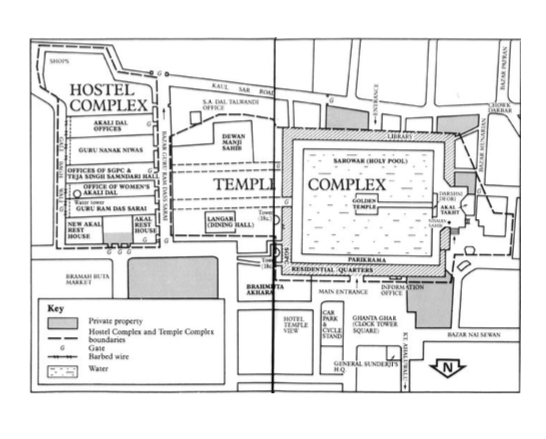
Sketch map of the Golden Temple and hostel complex. [Credits: Amritsar: Mrs. Gandhi’s Last Battle]
The essence of the plan was to separate the hostel complex from the Temple complex, so that the hostels could be evacuated without becoming involved in the main battle. To achieve his prime objective of getting Bhindranwale out of the Temple complex, Dayal had planned commando operations. The commandos were to be supported by infantry. Tanks were only to be used as platforms for machine-guns to neutralise fire on troops approaching the Golden Temple complex, and to cover the Temple exits in case anyone tried to escape.
Major-General Brar said that he ordered artillery to blast off the tops of the three towers. However he decided not to capture the seventeen houses because he did not have ‘the resources to do so’. Firing continued from these houses for days after the Golden Temple complex had been captured. The use of artillery in an area as crowded and densely populated as the old city of Amritsar proved, not surprisingly, to be very costly. Artillery is an ‘area weapon’, used to kill and suppress fire over a wide area, and is not commonly used against special targets. Severe damage was caused to several bazaars, but Brar had to secure the posts commanding the entrance to the Temple and the inside of the Temple itself before he could send his soldiers into the historic headquarters of the Sikh religion.
It was only when he was convinced the approaches to the Temple complex were clear that Brar ordered the tanks to move into the square in front of the northern entrance to the Golden Temple, known as the ghantaghar, or clock tower entrance. One of the tank commanders said, ‘As soon as I turned right from Jallianwala Bagh I heard the tik-tik sound of shells landing on my tank. Over the headphones I got the order to neutralise the fire.’ According to the Lieutenant of the 16th Cavalry, there were four tanks and three armoured cars. He said that Shahbeg Singh appeared to be monitoring their movements because, once the armour was in position, firing from the walls of the Temple stopped. The Lieutenant reported back to his commanding officer that the firing had been neutralised. But as soon as the assault on the Temple started it became clear that Shahbeg Singh’s firepower was far from neutralised.
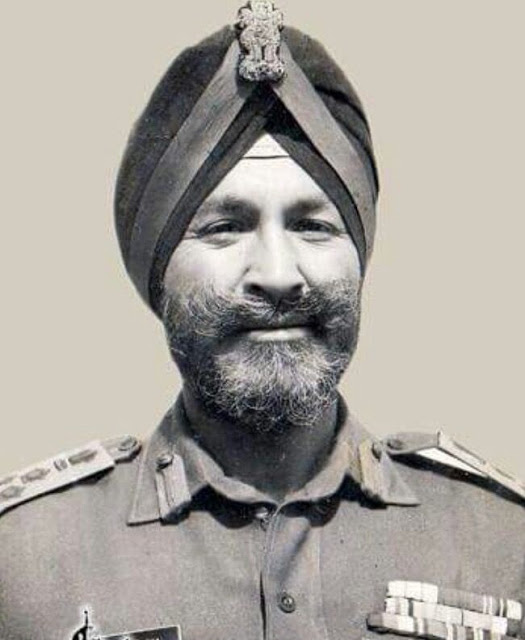
Major-General Shabeg Singh, who was dismissed from the army on corruption charges one day before his retirement. A civil court later acquitted him.
Meanwhile in the narrow alley behind the Akal Takht, those paramilitary commandos who had trained on the model of the Golden Temple complex were trying to get into Bhindranwale’s fortress. This operation was a dismal failure. Some commandos did get on to the roof of the shrine, but they were caught in the crossfire and had to withdraw. For some reason this part of the operation was not mentioned at all by the Generals when they briefed the press after it was all over.
It was between ten and ten-thirty in the evening that Major-General Brar decided he must launch a frontal attack on the Akal Takht. Commandos from the 1st Battalion, the Parachute Regiment, wearing black denims, were ordered to run down the steps under the clock tower on to the parikrama, or pavement, turn right and move as quickly as they could round the edge of the sacred tank to the Akal Takht. But as the paratroopers entered the main gateway of the Temple they were mown down. Most of the casualties were caused by Sikhs with light machine-guns who were hiding on either side of the steps leading down to the parikrama. The few commandos who did get down the steps were driven back by a barrage of fire from the buildings on the south side of the sacred pool. In the control room, in a house on the opposite side of the clock-tower square, Major- General Brar was waiting anxiously with his two superior officers to hear that the commandos had established positions inside the complex. When no report came through he was heard over the command network saying, ‘You bastards, why don’t you go in.’
However he decided not to capture the seventeen houses because he did not have ‘the resources to do so’. Firing continued from these houses for days after the Golden Temple complex had been captured. The use of artillery in an area as crowded and densely populated as the old city of Amritsar proved, not surprisingly, to be very costly. Artillery is an ‘area weapon,’ used to kill and suppress fire over a wide area, and is not commonly used against special targets.
The few commandos who survived regrouped in the square outside the Temple, and reported back to Major- General Brar. He reinforced them and ordered them to make another attempt to go in. The commandos were to be followed by the 10th Battalion of the Guards commanded by a Muslim, Lieutenant-Colonel Israr Khan. This battalion had Sikh soldiers in its ranks. The second commando attack managed to neutralise the machine-gun posts on either side of the steps and get down on to the parikrama. They were followed by the Guards who came under withering fire and were not able to make any progress towards their objective, the Akal Takht. Lt-Colonel Israr Khan radioed for permission to fire back at the buildings on the other side of the tank. That would have meant that the Golden Temple itself, which is in the middle of the tank, would have been in the line of fire. Brar refused permission. He still believed it would be possible to achieve all his objectives, including preserving the Golden Temple and the Akal Takht intact. But then he started to get messages from the commander of the Guards reporting heavy casualties. They had suffered almost 20 per cent casualties without managing to turn the corner of the parikrama to the western side of the complex where the Akal Takht is situated. The Guards were not only being fired at from the northern and western sides. Sikhs would also suddenly appear from man-holes in the parikrama the Guards were fighting from, let off a burst of machine-gun fire or throw lethal grenades, made in the complex itself, and disappear into the passages which run under the Temple. These machine-gunners had been taught to fire at knee-level because Major-General Shahbeg Singh expected the army to crawl towards its objective. But the Guards and commandos were not crawling, and so many of them received severe leg injuries.
Brar then decided on a change of plan. As he said after the battle, ‘I realised that it was difficult for this battalion to progress operations any further and there was no point in them remaining at the ground-floor level. Unless you got on to the first floor and to the rooftop, and got it to control the situation, you would continue suffering casualties. So the task given to them was, under all circumstances, to get a lodgement in spite of all the casualties they had suffered and I must give full credit to the battalion commander, a very dashing young soldier, Lt-Colonel Israr Khan, who rallied his boys together and worked his way up and did succeed in getting an allotment in this particular area.’ That allotment enabled the Guards to neutralise some of the positions on the south side of the tank, but they were still hampered by the order not to fire in any direction which would endanger either of the historic shrines.
The second commando attack managed to neutralise the machine-gun posts on either side of the steps and get down on to the parikrama. They were followed by the Guards who came under withering fire and were not able to make any progress towards their objective, the Akal Takht. Lt-Colonel Israr Khan radioed for permission to fire back at the buildings on the other side of the tank. That would have meant that the Golden Temple itself, which is in the middle of the tank, would have been in the line of fire. Brar refused permission
In spite of the very heavy firing, some of the commandos did manage to get round that corner of the parikrama and make their way to the courtyard in front of the Akal Takht. But they fought their way into a lethal trap. The Akal Takht itself was heavily fortified; there were sandbag and brick gun emplacements in its windows and arches, and holes had been made in its sacred marble to provide firing positions. On either side of the shrine are buildings which overlook the courtyard. They had been fortified too, as had the Toshakhana or Temple Treasury opposite the Akal Takht and the houses which overlooked the building from behind. So when the commandos got into that courtyard, bullets rained down on them from all sides. They were driven back suffering 30 per cent casualties. The courtyard in front of the Akal Takht had been turned, in Major-General Brar’s words, ‘into a killing ground’. To make matters worse, there was no sign of the Madrasis who were meant to be entering the Golden Temple complex from the southern side to form the other half of a pincer movement on the Akal Takht. When it became clear that the Madrasis had either got bogged down or lost in the narrow alleys, Brar asked his superiors for permission to use troops from another Division, the 15th. The infantry from his own division was fully deployed. The Guards were inside the Temple on the northern side, the Madrasis were trying to make their way to the eastern entrance, the Kumaons were clearing the hostel complex, and the Bihars had thrown a cordon round the Temple. Their main responsibility was to ensure that neither Bhindranwale nor any of his followers escaped.
Sunderji and Dayal agreed to reinforcing the operation and so two companies of the 7th Garhwal Rifles were put under Brar’s command. The Garhwals also come from the foothills of the Himalayas in the state of Uttar Pradesh. Brar ordered them to enter the Temple from the southern side and try to relieve the pressure on the Guards and the commandos on the northern side. As soon as they entered the southern gate they came under heavy fire. An officer of the Garhwals said, ‘They seemed to be firing on us from everywhere. It was impossible to know where to fire back.’ But the Garhwals did manage to establish a position on the roof of the Temple library. Their commanding officer reported this to his Brigadier, A.K. Dewan.
Dewan was very much a soldier’s soldier, always wanting to be in the thick of it. His nickname was, surprisingly, Chicken. Apparently he was called Chicken when he was an officer cadet because he had a very long and thin neck. The Brigadier should have left the fighting inside the complex to the battalion officers, but he could not resist the temptation to join in himself. The Lieutenant-Colonel commanding the Garhwals tried to dissuade him, saying that his men were under very heavy fire, but this was an added attraction for Dewan. When he got into the Temple he reported to Major- General Brar on the wireless. Brar, whose temper was wearing a little thin by this time, could be heard over the whole network shouting at Dewan: ‘What the hell are you doing in there? I am in command of this operation. You don’t move without my orders.’
The Akal Takht itself was heavily fortified; there were sandbag and brick gun emplacements in its windows and arches, and holes had been made in its sacred marble to provide firing positions. On either side of the shrine are buildings which overlook the courtyard. They had been fortified too, as had the Toshakhana or Temple Treasury opposite the Akal Takht and the houses which overlooked the building from behind. So when the commandos got into that courtyard, bullets rained down on them from all sides.
Then Brar calmed down and asked Dewan to stay inside and let him have a sitrep as soon as possible. Dewan realised that it was very unlikely that the Guards and the commandos would be able to achieve their objective. But he did reckon that his position on the southern side was fairly secure and that if he could reinforce it, he might be able to storm the shrine. When he reported this back to Brar he was given permission to call up two companies of the 15th Kumaons. By this time the operation had been in progress for about two hours and Brar was nowhere near achieving his objective. His short, sharp commando operation had got bogged down; so he decided to allow Dewan to fight his own battle inside the Temple complex.
Dewan made repeated attempts to storm the Akal Takht but each time the Kumaons or Garhwals turned the corner of the parikrama and ran into the courtyard in front of the Akal Takht, they came under withering fire and had to retreat. Dewan himself was striding up and down the southern side of the parikrama encouraging his men. But their task was impossible. Although both the northern and southern sides of the parikrama were by now in the control of the army, they had not been able to make any impression on the main fortress and the defences surrounding it, and the four companies had suffered 137 casualties. Of course they were still hampered by the order not to fire in any direction which would endanger the Golden Temple.
![General Kuldip Singh Brar, General Krishnaswamy Sundarji and General AS Vaidya at the Golden Temple after Operation Bluestar. [Credit: Gateway to Sikhism Foundation]](http://indianhistorycollective.com/wp-content/uploads/2021/06/3genmain.jpeg)
General Kuldip Singh Brar, General Krishnaswamy Sundarji and General AS Vaidya at the Golden Temple after Operation Blue Star. [Credit: Gateway to Sikhism Foundation]
There was no way anyone could get into that fortress without taking out its defences first. Dewan’s repeated charges were as futile as the charge of the Light Brigade, and he now realised it. He got on the wireless and told Brar that he would have to call up tanks to bombard the Akal Takht. He said, ‘I can’t afford to lose any more men. I can’t accept defeat.’ Brar later told the press his version of what happened next:
Although both the northern and southern sides of the parikrama were by now in the control of the army, they had not been able to make any impression on the main fortress and the defences surrounding it, and the four companies had suffered 137 casualties. Of course they were still hampered by the order not to fire in any direction which would endanger the Golden Temple.
Sunderji’s reaction was not instantaneous. He first contacted Delhi where a special operations room had been set up to keep track of the battle. The Deputy Defence Minister, K.P. Singh Deo, a former army officer himself, was in charge, assisted by Rajiv Gandhi’s most trusted aide, Arun Singh, who, although not a practising Sikh, came from one of the Punjab royal families. The army and the government were now faced with a dilemma. Sunderji had always insisted that the operation must be completed by daybreak, otherwise his men inside the Temple would be sitting ducks for Bhindranwale’s snipers. There could be no question of withdrawing and trying again the next night, because the news that Bhindranwale and Shahbeg Singh had forced the Indian army to withdraw would certainly leak out somehow. That would have disastrous consequences in the villages of Punjab and among Sikhs in the army. The only answer seemed to be tanks. They were the only equipment with the firepower and the accuracy to blast a way into Bhindranwale’s fortress. But tanks meant that the army would fail in one of its tasks – the preservation of the Akal Takht. They also meant the horrifying prospect of one mistake by a gunner seriously damaging the Golden Temple itself. In the end Delhi agreed that the tanks should be used and a message was sent back to Lieutenant-General Sunderji, nearly two hours after Chicken Dewan had asked for them.

Vijayanta Tanks used in the operation.
In the meanwhile Major-General Brar had made one more effort to get his men into the Akal Takht. He called up a Skot OT64 armoured personnel carrier. Tanks had to break down the steps leading to the parikrama from the hostel side so that the eight-wheeled, Polish-built APC could get in. The aim was to drive the APC right up to the Akal Takht so that the men from the mechanised infantry, one of the newest units of the Indian army, could get into the fortress under the cover of its wall. But as the armoured personnel carrier approached the Akal Takht it came under fire from two Chinese-made, rocket-propelled grenade launchers. One of the grenades found its target and the armoured personnel carrier was knocked out. The Captain commanding the platoon was wounded.
This forced the Generals to rethink their strategy once again. They had no intelligence reports of Shahbeg Singh having armour-piercing weapons at his disposal. Even the tanks, which had by now made their way on to the parikrama to await government clearance to open fire, were now at risk, although the maximum armour of the tanks was more than twice as thick as the APC’s. The tanks had been trying to blind the marksmen in Bhindranwale’s fortress with their searchlights. As soon as Brar realised that the enemy had armour-piercing weapons, he ordered the tank commanders to switch off their searchlights. The tanks had ploughed up the parikrama, each of whose marble slabs was inscribed with the name of the devotee who had donated it to the Temple.
Sunderji had always insisted that the operation must be completed by daybreak, otherwise his men inside the Temple would be sitting ducks for Bhindranwale’s snipers. There could be no question of withdrawing and trying again the next night, because the news that Bhindranwale and Shahbeg Singh had forced the Indian army to withdraw would certainly leak out somehow…The only answer seemed to be tanks. They were the only equipment with the firepower and the accuracy to blast a way into Bhindranwale’s fortress.
The Vijayanta was the army’s main battle tank, being an Indian-built version of the Vickers 38-ton tank. When the orders came, they opened up with their main armament. Photographs of the shattered shrine indicate quite clearly that the Vijayantas 105 mm. main armaments pumped high- explosive squash-head shells into the Akal Takht. Those shells were designed for use against ‘hard targets’ like armour and fortifications. When the shells hit their targets, their heads spread or ‘squash’ on to the hard surface. Their fuses are arranged to allow a short delay between the impact and the shells igniting, so that a shock-wave passes through the target and a heavy slab of armour or masonry is forced away from the inside of the armoured vehicle or fortification. Lieutenant- General Jagjit Singh Aurora, who studied the front of the Akal Takht before it was repaired, reckoned that as many as eighty of these lethal shells could have been fired into the shrine. The advantage of a tank’s main armament is that it fires with pinpoint accuracy. Indian army officers talk of the Vijayanta’s ability to post shells through letter-boxes.
The effect of this barrage on the Akal Takht was devastating. The whole of the front of the sacred shrine was destroyed, leaving hardly a pillar standing. Fires broke out in many of the different rooms blackening the marble walls and wrecking the delicate decorations dating from Maharaja Ranjit Singh’s time. They included marble inlay, plaster and mirror work, and filigree partitions. The gold-plated dome of the Akal Takht was also badly damaged by artillery fire. At one stage during the night Major-General Brar had ordered his Colonel (Administration) to mount a 3.7-inch Howell gun on to the roof of a building behind the shrine and fire at the dome in an attempt to frighten the Sikhs into surrender. Brar explained to his Colonel, ‘Maybe the noise and the sting will have its effect.’
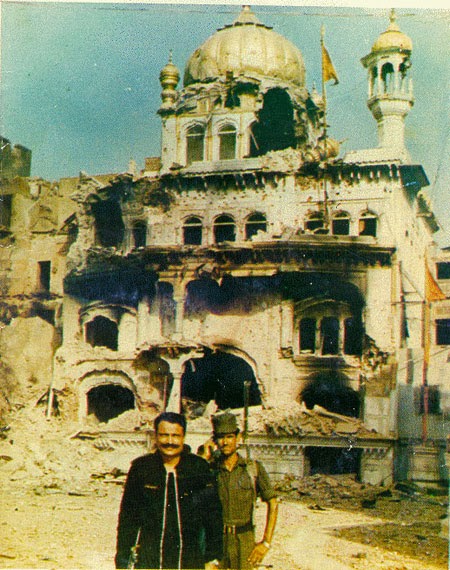
Damaged front facade of the Akal Takht after the operation.
The artillery did not scare Bhindranwale’s men; but the tank barrage was a different matter. The effect it must have had is impossible to imagine. As shockwave after shockwave rocked the building, the gallant, if misguided, defenders must have feared it was going to come down on top of them. Deafened by the explosions, they were driven to the back of the building by the flames and falling masonry. The deadly machine-gun fire which had been raining down on the army stopped.
Still sporadic resistance continued from some of the buildings overlooking the courtyard in front of the Akal Takht. By now it was light and Brar decided it was too dangerous to make the final assault necessary to re-establish control over the shrine from which Bhindranwale and Shahbeg Singh had withstood the Indian infantry attack. So Brigadier Dewan was ordered not to follow up the tank attack until darkness fell again. The three Generals at the command post knew that they had knocked out Bhindranwale’s fortress, but they still faced the agonising possibility that the Sant himself might have escaped.
The effect of this barrage on the Akal Takht was devastating. The whole of the front of the sacred shrine was destroyed, leaving hardly a pillar standing. Fires broke out in many of the different rooms blackening the marble walls and wrecking the delicate decorations dating from Maharaja Ranjit Singh’s time. They included marble inlay, plaster and mirror work, and filigree partitions. The gold-plated dome of the Akal Takht was also badly damaged by artillery fire.
After the battle Brar told the press that only one tank had been driven on to the parikrama, and that it had only fired its secondary armament, a 7.62 mm. machine-gun. But the damage to the Akal Takht tells a different story. There was no machine-gun which could have brought down so much masonry, and the shell marks were clearly those of high- explosive squash-heads. As for the number of tanks involved, other officers Satish Jacob talked to said that as many as six were brought into the complex. As one Vijayanta only carries forty-four rounds of main armament ammunition, it is certain that more than one was used. It also seems likely that the gunners fired from more than one position because the Golden Temple itself was in their arc of fire, standing as it does in the middle of the sacred tank.
The battle for the Akal Takht was not the only one raging that night. Across the road running along the eastern side of the Golden Temple complex, another battalion of the Kumaon Regiment was involved in the second operation that Lieutenant-General Sunderji had been ordered to carry out. He had been told by the government to ‘prevent internecine fighting between the two major groups lodged in the Temple and the hostel complexes, the one of Jarnail Singh Bhindranwale and the second of Mr Longowal and his followers’. To prevent the two groups fighting each other, the Generals had decided that the hostel complex housing Longowal and his men must be cleared at the same time as the Golden Temple.
The first problem was to get into the complex. The iron gates at the top of the public road between the hostels and the Temple had been barred. A tank had to break them down. Armoured cars were then positioned along that road to separate the two battlefields, and the 9th Kumaons moved in. They came under fire from the roofs on both sides of the road but unlike their colleagues inside the Temple complex, they managed to fight their way into the buildings they had been ordered to clear.

The Teja Singh Samundri Hall, Amritsar, which preserves the bullet marks from Operation Blue Star.
Most of the terrified pilgrims, supporters of the Akali Morcha, and of course the two members of the Akali Trinity with their staff were huddled together in two buildings. They were without water because the water tower had been destroyed during the preliminary operations, and without electricity. Longowal, Tohra, and some of their senior colleagues were in Tohra’s office on the ground floor of the Teja Singh Samundari Hall. The SGPC Secretary, Bhan Singh, later described the situation in that building:
The army entered the Teja Singh Samundari Hall at about one o’clock in the morning. According to one officer, Tohra and Longowal were in their vests and underpants. The army says they surrendered. Bhan Singh did not accept that statement. He said, ‘We did not give ourselves up. The army forced its way in and took us prisoners.’ That is really just a matter of semantics. What is absolutely clear is that Longowal and Tohra made no attempt to resist the army.
Across the road running along the eastern side of the Golden Temple complex, another battalion of the Kumaon Regiment was involved in the second operation that Lieutenant-General Sunderji had been ordered to carry out. He had been told by the government to ‘prevent internecine fighting between the two major groups lodged in the Temple and the hostel complexes, the one of Jarnail Singh Bhindranwale and the second of Mr Longowal and his followers’.
The Akali leaders were kept inside one of their offices. The rest of the people in the building were ordered to come out and sit in a courtyard of the Guru Ram Das Hostel. According to Bhan Singh, there were about 250 of them. Some terrorists, seeing the people pouring out of the offices and surrendering, threw a grenade at them. Bhan Singh explained what happened.
The White Paper admitted that seventy people including thirty women and five children died in that incident; but the government put all the blame on the terrorists, saying nothing about the army firing.
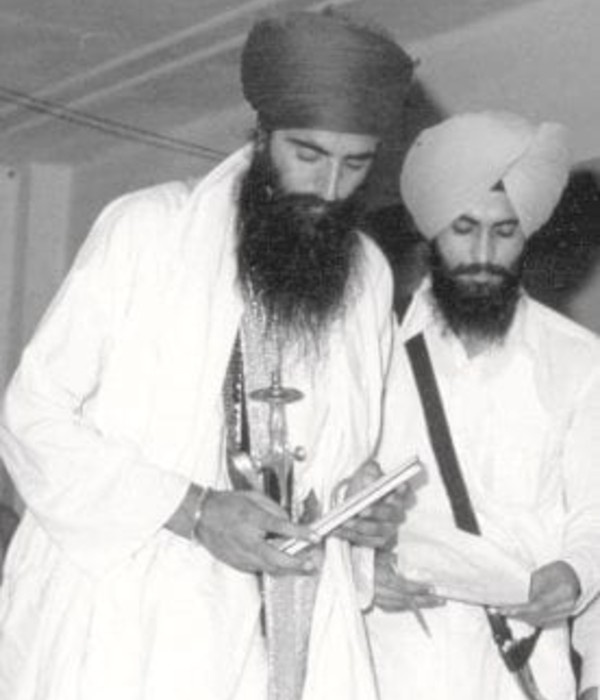
Harminder Singh Sandhu, Bhindrawale’s interpreter and close associate, General Secretary of All India Sikh Students’ Federation. [Credit: sikh24.com]
Bhan Singh also told the journalist and historian, Khushwant Singh, that the army did shoot some of the young men they had brought out from the Teja Singh Samundari Hall. He said:
But not everyone the army rounded up in the Teja Singh Samundari Hall was innocent. Among those who surrendered was Bhindranwale’s talkative young interpreter, Harminder Singh Sandhu, who was also the General Secretary of the All India Sikh Students Federation. When I had seen him on the day before the army action started, he had boasted, ‘Every one of Santji’s followers will lay down their lives to save the Golden Temple.’ But when the time came Harminder Singh Sandhu surrendered meekly.
Bhan Singh also told the journalist and historian, Khushwant Singh, that the army did shoot some of the young men they had brought out from the Teja Singh Samundari Hall. He said: “I saw about thirty-five or thirty-six Sikhs lined up with their hands raised above their heads. And the major was about to order them to be shot. When I asked him for medical help, he got into a rage, tore my turban off my head, and ordered his men to shoot me.”
Inside the Guru Ram Das Hostel, where the rooms were crowded with pilgrims, conditions were reminiscent of the Black Hole of Calcutta. The school teacher Ranbir Kaur and her husband had locked themselves into Room 141 with the twelve children they were looking after. Ranbir Kaur said:
The Kumaon Regiment also entered the Hostel at about one o’clock in the morning and ordered everyone to come out; but this was not the end of their ordeal. Ranbir Kaur described what happened next.
The people in the basement were Muslims from Bangladesh who had nothing to do with the Akali agitation. They were non-Bengalis known as Biharis, who had sided with the Pakistan army during the liberation struggle in 1971, and had been living in refugee camps in Bangladesh for the last thirteen years. The Pakistan government had refused to accept responsibility for any more Biharis and so Bhindranwale and his followers were operating a profitable sideline smuggling them across the border.
Two young Sikhs, Sardul Singh and Maluk Singh, who had gone to the Golden Temple to celebrate Guru Arjun’s martyrdom day, were not released when the army entered the hostel. An elder from their village wrote to the Sikh President of India, Zail Singh, about their experiences. In his letter the elder, Sajjan Singh Margindpuri, said:
The five survivors of that night of horror were arrested by the army and taken away to interrogation camps. So were Ranbir Kaur, her husband, and the children in their care. Two months later three of the children that Ranbir Kaur had been looking after were released after a well-known social worker had filed a petition in the Supreme Court in Delhi. Ranbir Kaur was released at the end of August. She rejoined the three children who had been released but no one could tell her what had happened to the other nine.
The five survivors of that night of horror were arrested by the army and taken away to interrogation camps. So were Ranbir Kaur, her husband, and the children in their care. Two months later three of the children that Ranbir Kaur had been looking after were released after a well-known social worker had filed a petition in the Supreme Court in Delhi. Ranbir Kaur was released at the end of August. She rejoined the three children who had been released but no one could tell her what had happened to the other nine.
Speaking later of the battle of the hostel complex, Major- General Brar said:
That claim is not borne out by eye-witness accounts.
This excerpt has been carried courtesy the permission of Mark Tully. You can buy Amritsar: Mrs Gandhi’s Last Battle here.
ARCHIVE
The Romance of Power
I
The city was still—the trams, the trees whose leaves were covered with a film of dust, the junctions, Lower Circular and Lansdowne road, the three-storeyed houses on Southern Avenue, the ten-storeyed buildings on Ballygunge Circular Road. Soon the machinery would start working again, not out of any sense of purpose, but like a watch that has been wound daily by someone’s hand. Almost without any choice in the matter, people would embark upon the minute frustrations and satisfactions of their lives. It was at this moment of postponement that the azaan was heard, neither announcing the day nor keeping it a secret.
Amit Chaudhuri, Freedom Song
In Holy Bondage
1977 was an unusual year in Indian politics—not just for the country as a whole but also for West Bengal. The extraordinariness of that ‘magical year’ manifested itself in the ascendancy of a new set of rulers in Delhi and Calcutta, in the beginnings of a political culture that has lived ever since. The political convulsions hit India’s oldest party hard, and one of its most charismatic leader, Indira Gandhi, bit the dust. The Congress prime minister and architect of the infamous Emergency lost the general elections to a coalition of diverse political parties, ranging from Right to Left. The winners laid down a plinth, though somewhat fragile, for multi-party coalition rule, bringing the curtain down on three decades of Congress monopoly over governance at the Centre.
Within a span of three months, Indian political parties put together new power structures that resembled nothing we had seen in the past. In March that year a Janata government headed by Morarji Desai, supported by the CPI-M from outside, took charge of the Central government. Three months down the line the hammer-and-sickle-emblazoned flag of the Communist Party of India (Marxist) was flying high from the seat of power in West Bengal. Trouncing the Congress and its infamous Chief Minister Siddhartha Shankar Ray, a CPI-M-led Left Front government — the state’s new ruling ‘elite’ – embarked on an uninterrupted journey of thirty-three long years, a journey that still continues. The Left Front won 230 seats and a 54 per cent vote share in the 294-member Assembly. The CPI-M on its own ratcheted up a clear majority; what a fall it was for the high and mighty Congress, suddenly finding itself stripped down to 20 seats with a mere 23 per cent vote share.
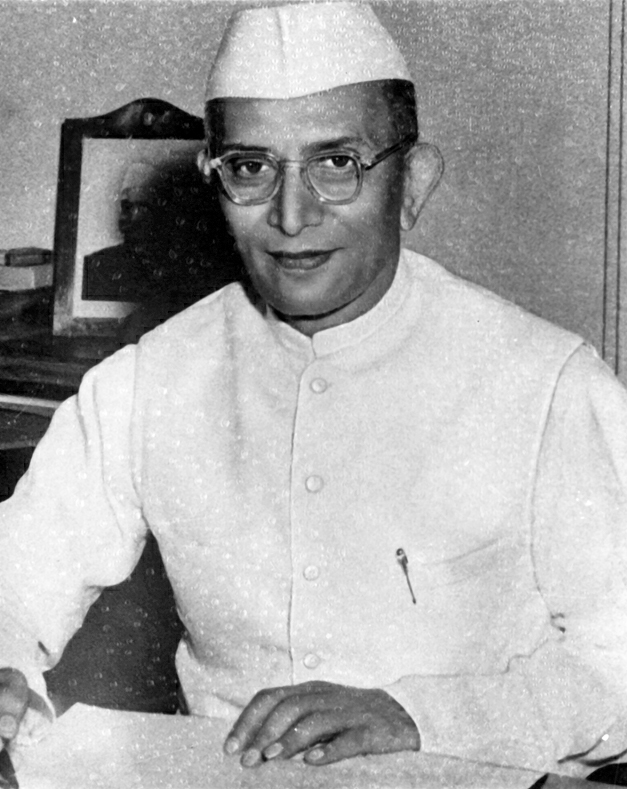
Morarji Desai, who replaced Indira Gandhi as Prime Minister in 1977.
Who would have imagined such a stunning change of political equations? Who would have believed the ‘party of struggle’ would be in the seat of governance for the next three decades; that it would walk a tightrope, balancing contradictions arising out of its past history and present obligations? In the years and decades to come, compulsions of governance would increasingly collide with the politics of militant struggle, in the process making the ‘revolutionary’ party an expert at doublespeak. The compulsions of governance landed the CPI-M in a predicament it would hardly have anticipated. With each passing year in Writers’ Building, the CPI-M found it more and more complex to balance the obligations of governance with its core politics of struggle. The doublespeak became inevitable as the party grappled with contradictory pulls and tried to address the conflicting needs by adopting multi-layered strategies.
But that is a story that would unfold later.
Back in June 1977 it was a moment of relief and euphoria for the victorious Marxists. Not only were their days of being on the run over, it was an hour of ‘sweet revenge,’ when the party could call the shots from West Bengal’s citadel of power. In that moment of glorious victory the CPI-M spoke a language of assurance and promise that eventually disappeared. Chief Minister Jyoti Basu promised to run his government not from Writers’ Building, the imposing red brick building built by British designer Thomas Lyon in 1780, but from run-down villages and dusty small towns scattered through West Bengal.
Back in June 1977 it was a moment of relief and euphoria for the victorious Marxists. Not only were their days of being on the run over, it was an hour of ‘sweet revenge,’ when the party could call the shots from West Bengal’s citadel of power. In that moment of glorious victory the CPI-M spoke a language of assurance and promise that eventually disappeared.
In the flush of victory Jatin Chakraborty, the Left Front government’s public works minister, painted bright scarlet the dome of Calcutta’s iconic Shaheed Minar, rising regally from the grounds of the Maidan. To me and in the perception of the public, the sudden burst of aesthetic defiance was like swishing a red cloth in front of the Congress! The sight of the red dome glinting in Calcutta’s scorching sun did not go down well with the Bengalis. Hissing under their breath each time the gleaming red turret came into their line of vision, they cursed Chakraborty, responsible for sullying one of Calcutta’s prized monuments and creating an eyesore. An incessant lament over the disfigurement and the ‘unaesthetic, propagandist’ souls of the ruling communists!
As the fresh coat of paint began to dry under a merciless Calcutta sun, the Left Front got down to its mammoth and daunting job of governance. The first ten years felt like walking on a bed of hot coals, a legacy left by the Congress.

Writers’ Building, Kolkata. Photo Credit: Matt Stabile, Flickr.
In the collective memory of West Bengal, 1977 was a special year. During the previous five years people had watched in disbelief the frenzy of political violence—the bloody clashes masterminded by the Siddhartha Shankar Ray government. Tens of thousands of CPI-M cadres had lived in the depths of shadows, chased and hounded by the ruling Congress. The relentless terror had groomed the CPI-M well to withstand the assault of the Emergency. When Indira Gandhi trained her guns on her opponents, the Marxists tested by fire, trained in the teeth of violence, were more than equipped to counter the excesses of the Emergency. ‘The intensity of state repression unleashed in the city [Calcutta] between 1970 and 1973 was of such magnitude that, unlike many other parts of India, Calcutta saw little in the year and a half of the Emergency to add to what it already knew about the ways of an authoritarian regime,’ writes political scientist Partha Chatterjee. In West Bengal more than 18,000 people had been rounded up under the Maintenance of Internal Security Act (MISA). Perhaps few other Indian states were then so torn by political violence. When the Left Front won the people’s mandate it inherited a state in tatters, where everything apart from violence seemed to have come to a standstill. Once considered among the best educational institutions in the country, Calcutta University was haemorrhaging. Examination schedules were running late by more than a couple of years. Results were delayed long enough to prevent students from applying to universities outside West Bengal. At Calcutta University’s Department of Ancient History and Archaeology, where I did my post-graduation between 1978 and 1979, students of Law College, next to our department, often spoke of the rough times. ‘This was where a bomb exploded that morning. I had just come in. Chhatra Parishad (Congress’s student wing) activists were on the other side. They hurled a bomb. It was all smoke. Students ran for cover,’ said Parthada, a student of Law College. (Since he was a couple of years older than me I had succumbed to the Bengali tradition of adding a ‘da’ after his name)
Parthada spoke of many similar mornings when lecturers and students fled classes as activists of the Chhatra Parishad and SFI hurled bombs at each other, across the street. In 1978 I found it difficult to imagine the delirium of violence described by him. The street outside my department hummed with normalcy – with its steady stream of traffic, buses and cars honking madly, the rush of chattering students. I often thought Parthada, despite his cut-and-dried, pragmatic Marxism, secretly nurtured the imagination of a storyteller.
In West Bengal more than 18,000 people had been rounded up under the Maintenance of Internal Security Act (MISA). Perhaps few other Indian states were then so torn by political violence. When the Left Front won the people’s mandate it inherited a state in tatters, where everything apart from violence seemed to have come to a standstill.
But repairing the badly damaged system took time. My MA examination in archaeology, scheduled in 1980, was held two years later. The chief minister said the government was doing its best to bring the examination schedule back on track. The backlog was stunningly high. The results almost never came on time. It was not just the education system that was mangled—essential services like electricity supply were in a complete mess. I remember studying by the light of lanterns through much of my school and college days. The Calcutta State Electricity Board, crippled by a chronic shortage of power supply, plunged the city into darkness after the sun went down. Through the day you sweated and grumbled. Generators were yet to become part of household furniture. Summers, always agonising in Calcutta with its heat and humidity, became excruciating with long stretches of power cuts. Fans would suddenly taper off to a halt as we wrestled with Brahmi and Kharoshthi scripts in epigraphy and inscription classes. Calcuttans had to submit themselves to a gruelling regime of rationed power. Each area had its daily chart of power cuts, which turned your fans and lights off at least twice, for a minimum of a couple of hours. Often unscheduled power cuts would drag on for five to six hours, if supply from the Damodar Valley Corporation’s mega thermal power plant dried up. Sometimes for half the night you would battle droning mosquitoes, fanning yourself with newspapers. The sale of hathpakhas (hand fans) made of bamboo prospered. I remember days when I would leave home hot and sticky, have a few hours respite at the department till load-shedding struck and then return home to darkness. It seemed Calcuttans were mandated to spend their evenings in the flickering shadow of candlelight. In buses and local trains people cursed the government and the power supply, spinning yarns and jokes around the ubiquitous phenomenon of load-shedding which dictated their lives.
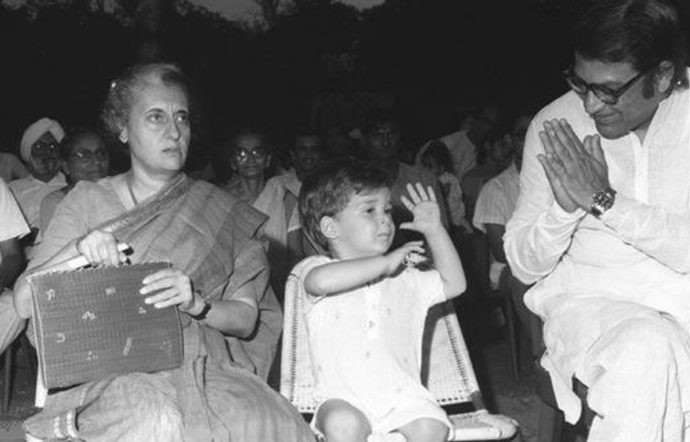
Siddhartha Shankar Ray (Right), CM of West Bengal from 1972 – 1977, pictured with Indira Gandhi. Photo Credit: Twitter.
Calcuttans did not just have to plough through the darkness; the mayhem on the city’s roads made travel an agonising ordeal. The city was being turned upside down to build India’s first and Asia’s fifth underground metro railway; its faltering, chaotic construction went on for years. People dreaded hitting the roads, which looked like they had been bombed. Traffic was a crazy maze in which buses and cars would stay knotted for hours on end, without moving an inch. Work went on endlessly inside trenches dug at crucial traffic junctures, where the tangle of vehicles was especially thick. Through the pile of mud and rubble people would make their way. Suddenly the rains would come, flooding the trenches, leaving the ground slushy. Metro traffic cops, the kind we see around Delhi’s Metro construction sites, standing to attention and waving road diversion signs, did not exist. There were no signboards indicating what lay ahead on the jagged stretch of road. Anyway Calcutta never had the luxury of road space like Delhi to flag off endless diversionary routes. So traffic mayhem raged unchecked.
In Freedom Song author Amit Chaudhuri describes a deadly traffic jam, which was fast becoming to Calcutta what local trains were to Mumbai and DTC (Delhi Transport Corporation) buses to Delhi.
But repairing the badly damaged system took time… The backlog was stunningly high. The results almost never came on time. It was not just the education system that was mangled—essential services like electricity supply were in a complete mess.
`It took them forty-five minutes to negotiate Circular Road, Chowringhee, the junction before Bentinck Street and finally to pass Mahajati Sadan and to arrive at the small lane on the left. By then, they felt they’d come to what was probably another city. Just on the right what looked like a deep ditch had been dug in Central Avenue, where actually unfinished work for the underground had been begun and then interrupted. Although the ditch almost looked fearful, there were in fact two children playing and rushing upon it, climbing from one side to the other and then disappearing again’. This ‘jam’ as it was called in popular parlance, became the emblem of Calcutta long before any of the other metropolises had even heard of it.
The genesis of Calcutta Metro went back to 1949 when West Bengal’s first Chief Minister Bidhan Chandra Ray planned it. Two decades later in 1972, Prime Minister Indira Gandhi laid the foundation stone. It took almost another two years for the work to start. Dogged by lack of funds, court injunctions, shifting of underground facilities, the work continued with long pauses in between. After the Left Front government came to power the people waited another seven years for the Metro to start even a partial service. And meanwhile the Calcutta Metropolitan Development Authority, which really had nothing to do with the digging, became in popular rendering khurchhi maati dekhbi aaye (come, watch us digging earth).
*
Jyoti Basu had inherited a badly messed up state from his Congress predecessor, which had to be cleaned up fast. Expectations were running high. Communists, yet to metamorphose into ‘power junkies’, had a clean and pro-poor image, unlike their predecessors, known to be a refuge for the rich and influential.
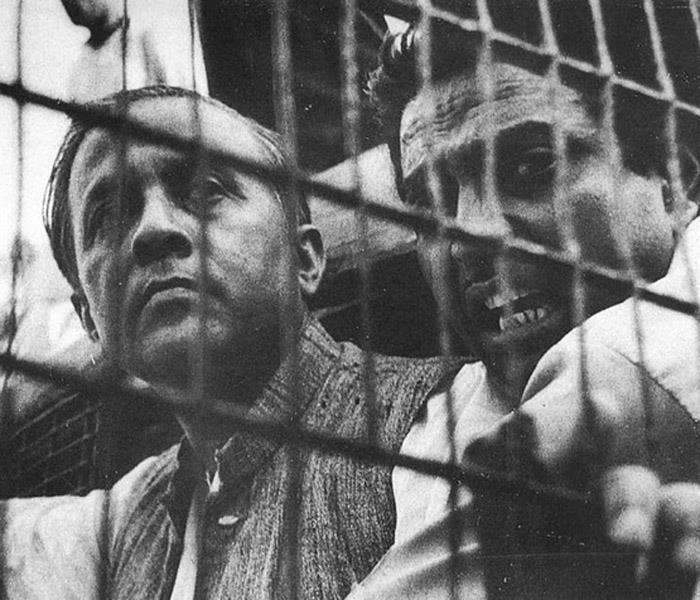
Jyoti Basu (Left) during his days of activism. Photo Credit: Communist Party of India (Marxist), Facebook.
The educational system had to be overhauled on a priority basis. Bit by bit university examinations reclaimed their schedules on the academic calendar. Students received degrees in time for them to appear in competitive examinations outside the state. The power situation started improving. Summers became bearable as fans and lights stopped playing whimsical pranks. Street lights came on and stayed that way. Lanterns were tucked away; candles were brought out only on special occasions. Calcutta moved from ‘darkness to light’ and the term ‘load shedding’ gradually lost its currency in conversations. It took the Left Front government time but it finally managed to retrieve the power sector from the depths of darkness; effectively enough to provide West Bengal with a surfeit of electricity. However, an apprehension that load shedding could return with a vengeance once factories started functioning, lurked somewhere at the back of the mind.
The raw political violence that lashed Calcutta for more than a decade ebbed. The macho aggression displayed by the Congress in the early 70s disappeared with the Assembly election results. Parts of Calcutta that had been swathed in smoke from explosions of crude bombs, ‘off-limits’ for youngsters, reclaimed their normal rhythm. But the spirit of violence, like the spirit of resilience, has a way of surviving. The oxygen of violence on which the politics of that decade survived and flourished never ran out of reserves; not even after the Left Front government brought enduring stability to the state. Violence was merely tamed and brought under control. West Bengal till today has the highest incidence of political violence.
But the spirit of violence, like the spirit of resilience, has a way of surviving. The oxygen of violence on which the politics of that decade survived and flourished never ran out of reserves; not even after the Left Front government brought enduring stability to the state. Violence was merely tamed and brought under control.
How do I describe this city of dreams, madness and desire?
On the body of each city are etched the marks of identification by which it wants to be recognised and known. Suketu Mehta writes in his book Maximum City: Bombay Lost and Found, ‘The history of each city is marked by a catalytic event just like each life has a central event around which it is organised. For New York it is now September 11, 2001, attacks on the World Trade Center. For the Bombay of my time it is the riots and the blasts of 1993. Bombay was spared the horrors of Partition in 1947’. He then adds, ‘But there was an earlier trauma in the psychic life of the city, which marked the before and after for old-timers: the explosion of the Fort Stikine on 14 April 1944…. Fort Stikine, a ship carrying bales of cotton, a secret cargo of gold and silver and wartime explosives caught fire and went up in smoke as it stood in the harbour waiting to be docked. The sky over Bombay was filled with gold and silver, masonry, bricks, steel girders and human limbs and torsos flying through the air as far as Crawford Market,’ writes Mehta.
When I try to think of the catalytic events that made Calcutta what it is today, simply too many of them jostle for attention: the stormy agitation against the one paise hike in tram fare in the heart of Calcutta, killings of CPI-M activists by the Siddhartha Shankar Ray government, the slaughter of Marxist-Leninist cadres by the men of the CPI-M and the Congress, the birth of the Left Front government, the announcement of Operation Barga and then the hail of bullets putting to death resisting peasants at Nandigram…
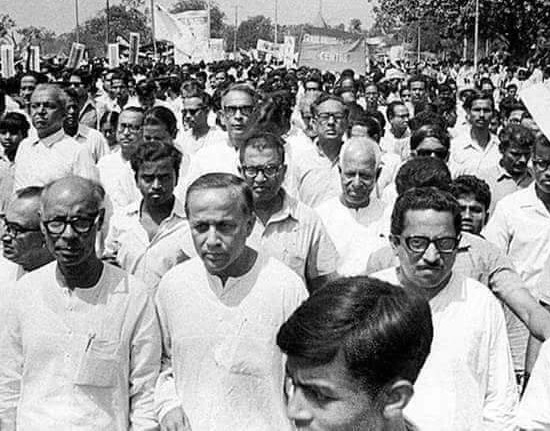
Jyoti Basu at the head of a march along with other leaders of the Left Front government. Photo Credit: Surjya Kanta Mishra, Twitter.
The Left Front’s raison d’etre, which actualised itself with Operation Barga, was lost forever at the barricades of Nandigram. The two developments were woven by a special bond – a history of land reforms, initiated in 1977. Later in the book, I will talk about how the reforms were derailed a decade later, how the ruling CPI-M lost the will to carry them to their logical conclusion. For the moment let me return to 1977 and the landmark Operation Barga. Few people, even dyed-in-the-wool supporters of the Left, would have believed the Marxists would preside over the state for more than three decades. Given its past experience of President’s Rule and sudden dismissals of state governments by the Congress at the Centre, the Left Front was looking at a short run on the pitch. Its aim was simple: initiate landmark policies carving out a political and electoral niche as a buffer against storms in the future; an investment necessary to reap dividends later.
Not the first instance of land reforms in the state, the Left’s ascendancy definitely unleashed for the first time a sincere effort to implement them.
The Left Front’s raison d’etre, which actualised itself with Operation Barga, was lost forever at the barricades of Nandigram. The two developments were woven by a special bond – a history of land reforms, initiated in 1977.
Between 1972 and 1977 the Congress regime of Siddhartha Shankar Ray had listlessly dabbled in land reforms without any serious inclination to implement them. The Land Reform Act was amended as far back as 1955. The Congress government had even passed legislation to introduce a three-tier panchayat system. The decisions, which would have significantly changed the power structure in rural Bengal, remained on paper till the Left Front government won the elections. The Front had gone to the Assembly polls with a 36-point programme which included promises of land reforms, reorganisation of Panchayati Raj, improvement in agriculture, new roads, better irrigation system, safer drinking water, improvement in health and education systems. When the CPI-M came to power in 1977, it did not anticipate the destiny that would unfold over the next three decades; never did it perceive itself as running a State government year after year. The leadership readied itself for a short stint in power—at best a five-year term, at worst a sudden guillotine by the Centre. Undoubtedly the party was under pressure to bring about, in what it perceived as borrowed time, a qualitative change in the balance of power, fulfil its ideological commitment as well as build a solid reservoir of political and electoral support. The CPI-M gave land reforms top priority, combining its ideological belief with the need for a mass social base. It must be remembered that even during the earlier United Front governments in the late 1960s, the CPI-M had made agrarian reforms its main plank. The food movement, the engine of change, created a groundswell of support for the party, enhancing its credibility and image as an ally of the poor. Under the leadership of Land Reform Minister Harekrishna Konar, the party had seized large tracts of benami land, tilting the power balance in favour of the poor in the countryside. But once the United Front governments collapsed, retaining these gains became difficult. After coming to power this time round, the Left Front wanted to ensure that the changes would endure: Operation Barga was a milestone in this direction, a wise strategic political investment, which, as time passed, became the fulcrum of the Left Front’s continued existence at the helm of power.
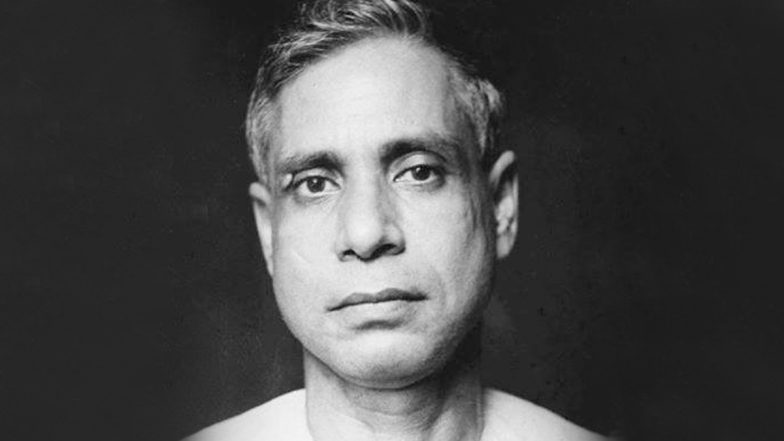
Ajoy Mukherjee, leader of the Bangla Congress and Chief Minister of Bengal in the United Front government.
Operation Barga set in motion this process of building the indispensable political tools the party used to electorally preserve itself so well. An expansive, well-knit network, politicised to the hilt stood at the beck and call of Alimuddin Street, ready to execute every command. The sharecroppers registered under the programme were provided with protection from eviction and given their due share of crop under the Land Reform Act. The Left Front government mobilised the bureaucracy and the party cadres on a war footing to put the programme in place. Side by side the CPI-M organised elections to the country’s first three-tier panchayat structure. ‘Prior to 1977, only some 275,000 sharecroppers had bucked the rural power structure and registered. By December 1985 as many as 1.3 million of the estimated 2 million West Bengal sharecroppers-96 per cent of all `tenants’—were recorded,’ writes T J. Nossiter of Operation Barga. Later I will talk at length about the CPI-M’s manipulation of the institution of panchayati raj and its subsequent abandonment of land reforms.
The leadership readied itself for a short stint in power—at best a five-year term, at worst a sudden guillotine by the Centre. Undoubtedly the party was under pressure to bring about, in what it perceived as borrowed time, a qualitative change in the balance of power, fulfil its ideological commitment as well as build a solid reservoir of political and electoral support. The CPI-M gave land reforms top priority, combining its ideological belief with the need for a mass social base.
Before June 1977 the world of constitutionality and governance was far removed from the CPI-M’s concerns. If anything, the party was engaged in direct conflict with that world. Inside the secretariat it was time to shift to Plan B. Disengaging itself bit by bit from the path of struggles the new ruling elite, in the beginning, leveraged the state machinery to provide relief to the people but gradually that gave way to something else: being in power became the means to endlessly reproduce itself. Cynical manipulation of power saw an end to the romantic age of innocence as the CPI-M lost that distinctive edge which had once set it apart from the rest of the political class. Plan B was not something that the CPI-M had in mind when it came to power. It was crafted bit by bit over the years as the CPI-M struggled with its internal contradictions—moving away from its ideological axis. Once it became clear that the party would have to rule and produce results and not just for a brief period, the strategies diversified, some conflicting with the CPI-M’s essential political philosophy. Matters started becoming complicated. In fact in 1984-85 after the party suffered serious electoral losses, following the assassination of Prime Minister Indira Gandhi, there seemed to have been some sort of disquiet within the party. Paragraph 112 of the party constitution allowed the CPI-M to run state governments, but with the rider that in this process, it should impact and change the state machinery, as well as mobilise the people. The paragraph was added to the new constitution of the CPI-M in 1964 when, in the light of the 1957 experience of the Namboodiripad government, the party debated whether it should form a government in case the possibility arose. In a sense, it was the CPI-M’s Plan B.
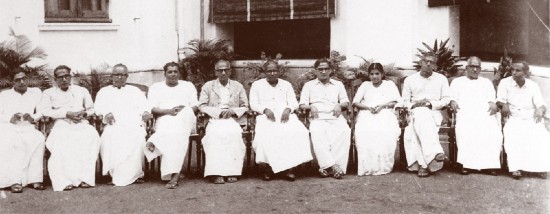
Kerala’s Council of Ministers, 1957, led by EMS Namboodiripad. One of the first democratically elected state governments of the world, it was dismissed in 1959 by the Central Government.
In the 1980s M. Basavapunnaiah, in an article in Desh Hitaishi raised certain questions about the spirit of Para 112 and whether the ruling CPI-M in West Bengal was being true to it. The questions he posed were: How much has the CPI-M been able to do in West Bengal? Has the party been able to provide relief, rally the people and scale up their political consciousness? Without being overly critical, the tone of the article suggested that all was not well. A discussion followed in the party but it was muted. The fall of the socialist bloc subsequently lent weight to the debate on whether socialism can flourish in a multi-party democracy, a debate that found a lively platform in the 1992 party congress in Chennai.
As Operation Barga got off the ground, its impact could be seen in the outcome of the 1978 panchayat elections. The Left Front won 69 per cent of seats and polled 54 per cent of votes. The dominance of landlords, rich peasants and moneylenders, which had been the bedrock of Congress support, broke. ‘For the first time in West Bengal, democratic devolution of powers took place. The new leaders of the panchayats were not moneylenders or rich peasants. They were marginal farmers, primary or secondary teachers, unemployed young men, or landless agricultural labourers’, writes Sudhir Ray. ‘During the panchayat elections of 1993 and 1998, it was found that Marxist parties could retain their support base in the rural areas. The reason for these successive victories is to be found in the changed co-relation of classes. The landlords, rich peasants and moneylenders no longer dominate in the rural areas,’ he continues. The panchayats included a large number of the rural poor, marginal peasants, teachers, women and Dalits.
Disengaging itself bit by bit from the path of struggles the new ruling elite, in the beginning, leveraged the state machinery to provide relief to the people but gradually that gave way to something else: being in power became the means to endlessly reproduce itself.
Even as rural Bengal was coming to life, West Bengal’s straggling, moribund industries were still gasping for breath, Outlining the historic backdrop stunting the state’s industrial growth T J. Nossiter writes, ‘At partition in 1947 West Bengal was deprived of its hinterland; its key industries, in key instances have been overtaken by technological innovation; communications are poor, and from the point of view of available investors, private, public, international, other areas of India have seemed more attractive, in some measure because of the uncertainty of the political situation at least prior to 1977 and because of industrial agitation.’
Political unrest and violence that crippled the state in the 60s and 70s deepened the severity of industrial depression. Small scale industries located on Calcutta’s outskirts, the hotbed of clashes between Naxals and men of the CPI-M and the Congress, disappeared one after another. Militant trade union activities led by the CPI-M’s trade union wing, Centre of Indian Trade Unions (CITU), which continued even after 1977, did not help matters. Employers retaliated with lockouts. Shutters were downed, gates padlocked. Lockouts happened in the blink of an eye. The industrial belt along the Hoogly river became a haunted expanse of dilapidated buildings, their padlocked gates corroded by rust and moss. The responsibility for the corrosive decay lay in multiple quarters: at the door of the party and the government—for pretending to look the other way even as industries were vanishing overnight; with managements for their flightiness and financial corruption; with the CITU — for sticking to old strategies. Ostrich-like, the trade union had a habit of walling itself in, every time workplaces reinvented themselves, keeping pace with technological changes, launching modernisation drives. Failing to anticipate the rush of technological innovations, CITU in the 1980s slammed the door on computers and modernisation of factories, chanting instead the tired old slogans.
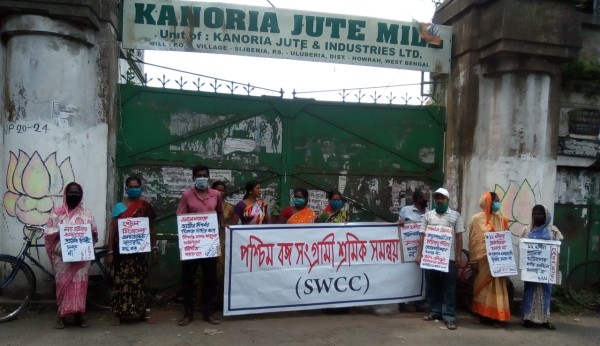
Workers protesting outside Kanoria Jute Mills in 2020. Photo Credit: Workers’ Unity Bengali, Facebook.
There was no single cause behind the stagnation. Post 1977 the workers were virtually left to fend for themselves as the CPI-M and the CITU tried to fulfil the economic mandate thrust on them by liberalisation. But the working class in Bengal, with its tradition of militant activism in the late 60s and 70s, had come to regard the notion of work not simply as a source of income and material incentive, but also of rights and entitlements. ‘It was a potent political construct for all workers,’ writes Nandini Gooptu. The Left Front could not turn its back on the electoral support of workers but the transformation of the CPI-M from a party of struggles to the ruling elite hit them hard as the CITU, cutting corners, tried moulding itself to suit the government’s new economic plans. Labour militancy had to be contained and eventually snuffed out. Functioning within the neo-liberal system the Left Front government started distancing itself from the concerns of the working class, thrown into a state of anxiety, as liberalisation sounded the death knell for traditional industries like textile and jute. Unwilling to support labour agitations, the government and the CITU hastened to clinch deals with employers. Pushed to the wayside by the party and the trade union, workers struck out on their own. Through the 1990s, labour unrest assumed different forms. Violence broke out at Victoria Jute Mills in 1992 as workers turned on trade union leaders, attacking the union office and policemen. One person lost his life. In Howrah’s Kanoria Jute Mills the workers adopted a different path, declaring autonomy from the party and the trade union. They instituted the Sangrami Shramik Union, an independent non-party trade union in February 1993, sending a clear message of their loss of trust in the CPI-M and the CITU. Rather than in vain for a successful negotiation with the management, the union occupied the closed mill and resumed production. The unusual and spontaneous workers’ movement taking off without trade union banners created a ripple, even though the experiment did not translate into enduring results. Many middle-class members, including artistes, allied with Kanoria workers who hoped to turn the mill into a workers’ cooperative. Despite public support to the notion of workers’ participation in the management, the CPI-M-led government offered the union no help, sealing the fate of a Kanoria workers’ cooperative. The mill was turned over to the management. Though short-lived and unsuccessful, the Kanoria Jute Mills experiment pointed to a new direction in the labour movement, not adopting the most practiced form of resistance like striking work.
The Left Front could not turn its back on the electoral support of workers but the transformation of the CPI-M from a party of struggles to the ruling elite hit them hard as the CITU, cutting corners, tried moulding itself to suit the government’s new economic plans. Labour militancy had to be contained and eventually snuffed out.
The transformation of the CPI-M from a livewire, organic party to a vote-spinning machine became more and more evident from the 1980s, when the party and the government became virtually one. Without a demanding opposition breathing down its neck, it was easy to get away with poor governance; easy to win a two-thirds mandate in election after election. The democratic cycle of elections, the principle of rewards and punishments came to a halt.
Writers’ Building on Kolkata’s bustling B. B. D. Bagh stood as indelible proof to the sloth that had crept in and settled on the government. Nothing in the secretariat—the Left Front’s nerve centre—seemed to have changed in the last three decades. As if the grand old building had settled into an inexorable time warp. In thirty-three years of Left Front rule, Jyoti Basu alone ruled for 23 years (1977-2000). The babus of Writers’ Building have been taking orders from the same cabinet and implementing them desultorily, unlike their predecessors during colonial rule who worked long and hard. The first inhabitants of Writers’ Building, which started functioning as early as 1690, worked under tough conditions. Employed by the East India Company, the clerks lived in mud hovels at the present site of the brick-red structure. In 1965 a storm destroyed the huts. A second Writers’ Building was built followed by a new structure—from where the state secretariat now functions.
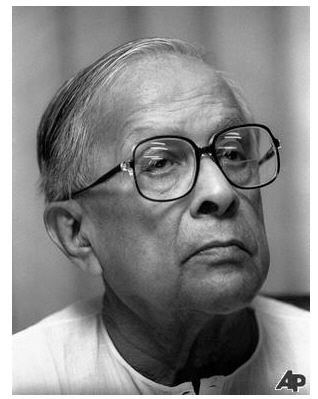
Jyoti Basu was West Bengal’s CM for 23 years (1977 – 2000).
The ‘modern’ Writers’ Building inhabitant is the quintessential babu, who rarely keeps office hours but seldom forgets to take his chhata (umbrella) and jhola (cotton bag) to work. He goes through the motions of a daily routine: gets off a jam-packed local train at Howrah station, boards an equally packed, rickety state bus, steps down at Dalhousie Square, ambles into the secretariat after the clock has ticked well past the hour of reporting for work.
The area around the secretariat has the lazy somnolence of a holiday. Stalls cluttering the footpath outside the building sell a variety of food, from toast to fish curry, rice, pakoras and phuluris. Famous for its street food, Calcutta is a hedonist’s paradise and a nutritionist’s nightmare. For the babus the food mart outside the secretariat is a place to ‘pass time’ when the files get too boring. Every once in a while they stroll out for a bite. Rows of honey jars stand at one corner and the air hangs heavy with the aroma of frying and cooking. Not surprisingly Jyoti Basu found the ‘eating disorder’ annoying and detrimental to the efficiency of his government. Hemming and hawing for a long time, the exasperated chief minister finally slapped a curfew on food vendors, restraining them from camping out on the footpath and tempting the Writers’ Building staff through the day. You can find them engaged in brisk business only between one and two-thirty now.
The transformation of the CPI-M from a livewire, organic party to a vote-spinning machine became more and more evident from the 1980s, when the party and the government became virtually one. Without a demanding opposition breathing down its neck, it was easy to get away with poor governance; easy to win a two-thirds mandate in election after election.
Like he would pull up the CITU, Basu, from time to time lectured Writers’ Building employees—also unwavering supporters of his party—on reporting to work on time, resisting the temptation of leaving the building before the sun went down. But counsel and caution came late when the employee was secure in the CITU’s protection. As liberalisation settled in and the economic environment became competitive, the Marxists felt the nudge to shed sloth and instil an efficient work culture. They had been ‘efficient’ in capturing political, educational and cultural institutions; taking them over systematically, appointing in key positions persons loyal to them, regardless of qualification or merit. From the very beginning, people inhabiting the world of the CPI-M were split into two categories: ‘aamader lok’ (our people) and ‘amader lok na’ (not our people). True, the Left Front government had ended the anarchy of the past that was destroying educational institutions. But in that process it also appropriated them, striking at the autonomy of academia. The universities and institutions had already begun to lose their shine and intellectual vibrancy in the early 1970s, the years of anarchy, and the decline continued after the takeover by the Left. Presidency College, a centre of excellence, caught in the throes of violence between the CPI-M and the Congress, later by the Naxal upsurge, deteriorated further during the Left Front government. Law College, a site of political violence in the 1970s, never regained its academic eminence. In place of intellectual autonomy reigned a dull culture of patronage, a relentless search for amenable, loyal appointees who would intone the party’s position on every issue of consequence. The challenge of a lively intellectual debate of contesting beliefs, in which the proponents heard each other out, was strictly absent. Those who played the game of passive compliance were rewarded; the ‘deviants’ who refused to extend intellectual endorsement were subtly and often not so subtly punished.
Moving from one election to the other, emerging a clear victor each time, the CPI-M over the decades came-to acquire the status of a ‘feel-good’ party. In the past the Congress had exuded a similar aura, before people started delivering fractured mandates, stripping the party of its monopolistic rule over India. We had journalistic slang for those drawn like a magnet to a party in power, regardless of its creed and politics. We called it the Opportunistic Party of India (OPI)! Its members were forever ready to do a 180-degree turn and switch loyalties to the party at the steering wheel at any given time!
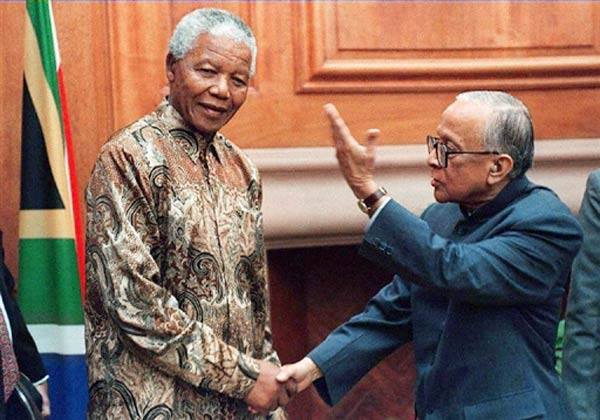
Jyoti Basu with Nelson Mandela. Photo Credit: Communist Party of India (Marxist), Facebook.
West Bengal had more than its share of OPI members. In the political context of the state it ensured loyalty to only one party—the CPI-M. No other political party in India, or for that matter in the rest of the world, has held on to ‘absolute’ power electorally, without a break for so long. The people of West Bengal, some who would never have ordinarily crossed the path of communists, suddenly found in them a safe and lucrative refuge. The CPI-M appeared to offer the incentives of an attractive investment policy. The ‘jholawala shabby Marxist’ suddenly became the cynosure of all eyes. Joining the party was like signing up with a football club that unfailingly kicked the winning goal in the goalpost. The party’s membership in West Bengal galloped even as it floundered and lost whatever faltering base it had in the Hindi heartland to the Mandal parties. The irresistible pull of power worked wonders for the CPI-M when it came to a headcount of its members.
They had been ‘efficient’ in capturing political, educational and cultural institutions; taking them over systematically, appointing in key positions persons loyal to them, regardless of qualification or merit. From the very beginning, people inhabiting the world of the CPI-M were split into two categories: ‘aamader lok’ (our people) and ‘amader lok na’ (not our people).
Hunter Thompson in Kingdom of Fear said: ‘Res ipsa loquitur’ (Let the good times roll). Good times indeed were rolling for the CPI-M. In that heady process however, the inherent democratic principle propelling change ended up as the casualty. The withering of a credible opposition perpetuated the stagnation of the political status quo. For a while Trinamool Congress leader Mamata Banerjee seemed to rattle the Left Front’s composure, especially around 1999, when she called for a mahajot or a Grand Alliance with the Congress against the Left Front and did draw significant popular response. However, she lost that moment, oscillating between opposing and supporting the Bharatiya Janata Party (BJP)-led National Democratic Alliance (NDA) government and quitting her cabinet post as Railway Minister. It took the Nandigram-Singur developments for the Trinamool Congress leader to return to West Bengal’s political centre stage.
How does the CPI-M’s balance sheet look at the end of thirty-three years?
A graph of losses and gains would show the party neck-deep in bankruptcy following the drain of ‘ideological wealth’. A comfortable existence of political dominance without resistance worth its name broke the party’s ideological spine. Driven by prospects of easy opportunity, all shades of people invaded the CPI-M. Once discerning, exacting in its choice of members, the party’s gruelling `rite of passage’, mandatory and inflexible in the past, became loose and flexible. The party loomed like a powerful corporation beckoning one and all, political and social climbers, ideological ignoramuses, rank opportunists, tantalising them all with possibilities that had nothing to do with the ideology of politics.
Before the ‘feel good times’ set in, becoming a card-holding member of the CPI-M wasn’t easy. It was like sitting for a test, one that went on for years. Only after passing through that critical wringer could you be certified as a card holding member – the term itself not part of the CPI-M language, but a quaint leftover from the days of the united CPI. There were no shortcuts and few lateral entries from the top. It was a little like the way journalists functioned before the onset of the internet and easy news gathering through wires. Editors then were tough, ensuring by the time the afternoon sun rose high, that reporters would be out of their air-conditioned offices; no short cuts. Bracing the heat and the cold was clubbed under `leg work.’ In the CPI-M’s terminology ‘leg work’ meant organising, mobilising students, youths, workers, peasants, women, teachers. You had to prove your skills as a ‘mass worker’ in any one of the party’s mass organisations and get at least a minimal idea of Marxist-Leninist philosophy. In fact it was considered infra dig to graduate to membership within a short time. Since I joined the party in West Bengal in the early 1980s – when the Left Front had its feet firmly planted in Writers’ Building – I knew myself to be part of that ‘non rigorous,’ maybe a trifle ‘looked-down upon’ membership, with an easy entry.
But even in those days of laxity you could not barge in like you could in the 1990s, the period of confusion and disenchantment when members started dropping out, disillusioned with the emerging face of socialism. These were also the times when the CPI-M further lowered its ideological guard and drafted new members without making too much of a fuss. The ‘nouveau’ communist—the ‘Marxist come lately’—strutted about, brandishing the ‘party card,’ using ‘brand CPI-M’ to further his/her interests. Gone was the Spartan communist epitomised by Harekrishna Konar or Promode Dasgupta—almost Gandhian in frugality, honed razor sharp in political battles, far removed from the labyrinthine power games of the establishment. The new lot went about ‘doing’ their politics like unscrupulous businessmen; bullying, extorting, terrorising became part of the ‘ideology.’ The West Bengal party leadership regularly carried out ‘cleansing’ operations to weed out the rot. But it ran too deep, too thick.
A graph of losses and gains would show the party neck-deep in bankruptcy following the drain of ‘ideological wealth’. A comfortable existence of political dominance without resistance worth its name broke the party’s ideological spine. Driven by prospects of easy opportunity, all shades of people invaded the CPI-M.
The CPI-M’s organisational documents circulated at its congress every three years routinely regretted the ideological downturn, but the slide, too rapid by then, could not be halted. Here lies one of the keys to the transformation of the CPI-M machine. For it was the machine that was supposed to cleanse, that itself got mired in a whole range of corrupt nexuses – with builders, contractors, police and local anti-socials. Try as they might, the state leaders never managed to control these new nexuses. Media and human rights groups regularly revealed the involvement of CPI-M members – often district level leaders – in incidents of rape and murder. Alimuddin Street almost unfailingly responded by scoffing at the allegations as part of a political conspiracy, or promising an inquiry, which invariably made its way into the files of unresolved crimes. This expressed more than anything else, Alimuddin Street’s helplessness rather than its complicity. Eventually, one can say, it was the leadership that was dependent on the monster it had created.
II
Anatonia was living in a communal apartment where the house elder was an ardent Stalinist, widely suspected as an informer, who made her suspicions of Anatonia clear. On one occasion, when a neighbour showed off her new pair of shoes, Anatonia had let her guard down by saying that her father would have made them better because he had been a shoemaker (a trade associated with the `kulaks’ in the countryside). Frightened that she would be exposed, it was a huge relief for Anatonia when Georgii Znamensky asked her to marry him. Marriage to Znamensky, an engineer and a citizen of Leningrad, would give her a new name and a new set of documents to let her stay in Leningrad.
Orlando Figes, The Whisperers
Fear, Suspicion and the Third Eye
The CPI-M presides over a Kafkaesque world mapped by an `invisible third eye’—tracking, recording, filing. Communists have been known to make good, though not artful snoops. In West Bengal, under their thumb for more than thirty-odd years, comrades keep an eagle eye not just on each other, but on each other’s families and friends. ‘Guilty by association’, a dictum practiced by and consummated in communist regimes across the world, still carries with it a frightening respectability.
Chandrayee Gupta, daughter of Sadhan Gupta, among the six Lok Sabha MPs fielded by the undivided Communist Party in the first general elections of independent India in 1953, found herself condemned under the CPI-M’s ‘guilty by association’ fiat. Chandrayee’s was a classic ‘communist family’, bound intrinsically to the communist movement for at least two decades before its romance with Writers’ Building had bloomed. Her mother Manjari Gupta was the first president of the CPI-M backed All India Democratic Women’s Association. ‘I grew up in the party. I remember participating in the 1965 khadya andolan (food movement), civil liberties movement, in every election from 1967 to 1991,’ said Chandrayee. A member of Indian People’s Theatre Association (IPTA) since 1971, Chandrayee became active in the SFI from 1974. She joined the party in 1977.
The CPI-M presides over a Kafkaesque world mapped by an `invisible third eye’—tracking, recording, filing. Communists have been known to make good, though not artful snoops. In West Bengal, under their thumb for more than thirty-odd years, comrades keep an eagle eye not just on each other, but on each other’s families and friends.
Her whole-timer husband Badshah Alam had been in active Left politics since the 1967 general elections. Two years later he became a member of the CPI-M, and then Democratic Youth Federation of India’s (DYFI) Calcutta district secretary. In 1983 Badshah was elevated to the post of the first CPI-M secretary of Padmapukur local committee, which included Beck Bagan and Bhowanipur – areas with highly diverse economic, religious and linguistic populations. His conflict with the party began after the Left Front, completing its second term in power, started shifting its priorities from the poor to the powerful vested interest groups – the land mafia and realtors. ‘The so-called class enemies were being wooed by key personalities in the party. Badshah’s differences grew with party leaders who wanted him to yield to money power. The strained relations exploded in 1990,’ said Chandrayee.
Following a brutal attack on Mamata Banerjee on 16 August 1990 by CPI-M workers in Calcutta, an influential section of the Calcutta District Committee wanted Badshah to make statements according to their diktat, contradictory to the truth. Already in an uneasy co-existence with the party, Badshah’s refusal led to his expulsion in 1991. `We knew if we compromised nothing would happen but we were determined not to. We were also aware that the party was making an example of Badshah’s expulsion to rein in other restless workers,’ said Chandrayee. The party accused Badshah of making money from the Muslim-dominated area of Padmapukur – an important one on the CPI-M’s list of local committees.
A visit to Chandrayee’s flat inside an alley in the Bek Bagan area would leave you wondering why Badshah and his family would choose to inhabit such a cramped place, when they, according to the CPI-M, had stockpiled such wealth. A narrow flight of tacky, ill-lit stairs takes you upstairs. For additional space Badshah had turned the roof into a kind of a make-shift room where you could cook in one cornet In the middle lay a few chairs. Sitting here Chandrayee and I chatted, returning to the events that changed the drift of her life.
‘After Badshah was expelled someone close to the party visited us. As he entered our home, he could not hide his surprise. He asked me “Is this where Badshah Alam lives?”’ since nothing in that humble flat suggested a hidden stash. With the expulsion began the party’s hounding of the family, economically and emotionally. `The party attempted to disrupt our family life. It spread rumours of our divorce. Badshah’s siblings were all party members. The party engineered a rift within the family,’ said Chandrayee. ‘We went through hard times. Could not send our two sons to the best schools. Virtually overnight people we were familiar with and knew for ages stopped recognising us,’ she added. Though she had not expressed any wish to sever association with the CPI-M, the party refused to renew her membership, throwing her into the ‘guilty by association’ lot.
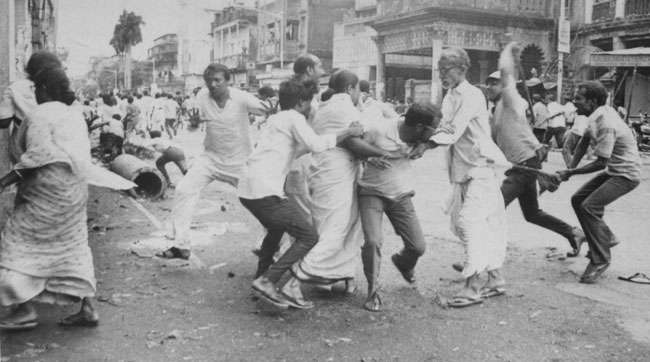
Mamata Banerjee was attacked in 1991 by communist party goons. Photo Credit: AITC Official
That was not all. The CPI-M began to squeeze Chandrayee out of the court where she practiced. ‘The party stopped giving references for the public sector cases that used to come to me from different districts. State government briefs which had been dwindling from 2000, finally stopped in 2004. These have again begun to come to me after Nandigram in 2007.’
‘We went through hard times. Could not send our two sons to the best schools. Virtually overnight people we were familiar with and knew for ages stopped recognising us,’ she [Chandrayee] added. Though she had not expressed any wish to sever association with the CPI-M, the party refused to renew her membership, throwing her into the ‘guilty by association’ lot.
A year following his expulsion, Badshah and some of his ‘axed’ comrades formed a group, Marxbadi Kendra, trying to consolidate other Left forces in a common platform against the Left Front’s misrule. It did not take long to realise that the CPI-M would not allow them to function democratically. By-elections to Calcutta’s Ballygunge Assembly seat were held that year. The CPI-M fielded Rabin Deb, and Marxbadi Kendra, Swapan Chakraborty, once a popular CPI-M councillor, later thrown out by the party. ‘That election experienced unprecedented rigging, resulting in a CPI-M victory by a vote margin of 30,000. The sitting CPI-M MLA, however, had won by just 1500 votes,’ said Chandrayee. She described the way cadres from all parts of Calcutta poured into the constituency and the violence that followed. `Badshah protested when voters of Swinhoe Lane were prevented by the police from entering the polling station. In retaliation the police threw him into the van took him into “safe custody”. When the deputy superintendent came he found Badshah sleeping. Throwing him on the floor, he began hitting him, opening his eyes with his boot. All along the DSP shouted: “Take dekhte hobe, police manusher upore (you have to concede police is above the common man).”‘ ‘At about 9.00 p.m. I went to the barracks and found Badshah with boot marks on his face, injured and unattended. After my written complaint, he was given medical attention at 1.00 a.m.,’ she added. A case is still pending against Badashah, the trial continuing since 1996.
Marxbadi Kendra, however, proved a short lived experiment as Badshah joined the BJP in 1997, which seemed to him the only party capable, at that time, of taking on the CPI-M. ‘I cannot say the decision made me happy. But he needed a political platform,’ said Chandrayee. Quitting the BJP in 2007, Badshah joined the land movement led by Siddiqullah Chowdhury, secretary of the People’s Democratic Conference of India (PDCI). He found the agitation for land more effective.
After more than a decade Chandrayee went with her father Sadhan Gupta to Alimuddin Street following the death of Nripen Chakraborty. The veteran communist leader expelled by the party had been taken back a day before his death. His body was kept at the CPI-M headquarters. `Nripen Chakraborty had lived at our 47 Theatre Road residence for some time. He enjoyed being with the family, playing with the kids. When he passed away, Baba wanted to go to the party office. I went with him. It was strange. Nobody would talk to us. We just stood there. After some time Anil Biswas came and spoke with me. As if on cue others followed, though not Buddhada (Buddhadeb Bhattacherjee). He did not even bother to speak to baba,’ said Chandrayee.
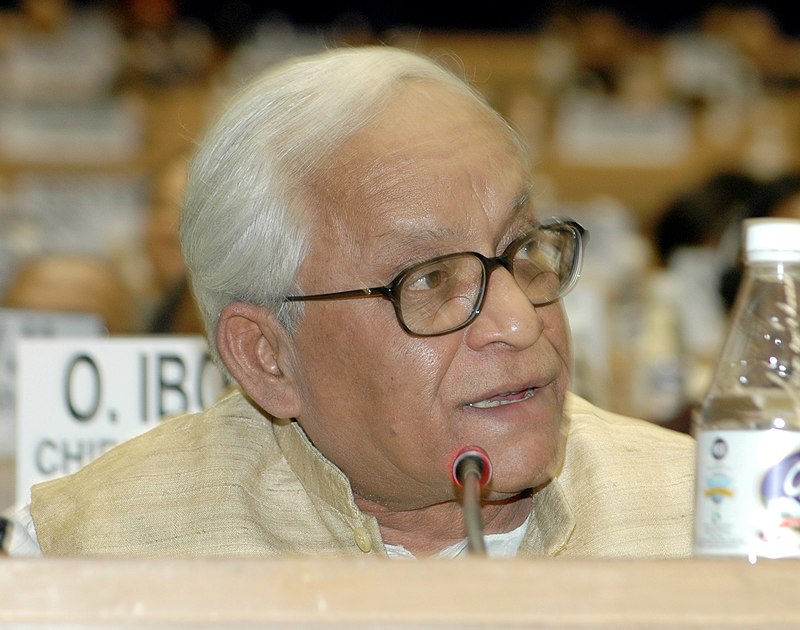
Buddhadeb Bhattacharjee was the Chief Minister of West Bengal from 2000 to 2011.
Within a year of taking over the reins, the CPI-M had become a ubiquitous presence in West Bengal, sometimes with open aggression, but more often a lurking shadow — a snooping, hovering third eye.
Maimoona, an acquaintance of Chandrayee, tells of how her husband, a party member in Beck Bagan, was a victim of the snooping brigade. `The Municipal Corporation was proposing to hand over Park Circus Market to Reliance. Siddiqullah of PDCI had organised a meeting protesting the move. My mother wanted to listen to Siddiqullah. So I took her to the meeting. We sat at the back’.
Within a year of taking over the reins, the CPI-M had become a ubiquitous presence in West Bengal, sometimes with open aggression, but more often a lurking shadow — a snooping, hovering third eye. Maimoona, an acquaintance of Chandrayee, tells of how her husband, a party member in Beck Bagan, was a victim of the snooping brigade
‘At the party’s local committee office the next day a CPI-M leader asked my husband if he had attended yesterday’s meeting. My husband said no. The leader promptly fished out a photograph of me sitting with my mother at the meeting! Party workers were actually present at the meeting, snooping, taking photographs,’ said Maimoona.
`The CPI-M is calling us communal. But a day before the meeting party cadres went around Beck Bagan saying Sidiqullah was going to hold a meeting of Muslims and the Hindus should stay away,’ said Chandrayee.
*
Since the 1980s much of the party machinery was wielded through suspicious means. One of these important ‘bonding’ activities was party ‘collection’. No longer were party members assessed by their organisational skills, and the ability to attract new members. The CPI-M now seemed to measure the political worth of its members from their fund-raising skills.
Every unit of the party – student, youth, women and trade union – was caught up in the collection drive, ‘Collecting funds and mobilising people for rallies and meetings are two of my main political activities,’ said Aparna De, a former attendant in Calcutta’s Modern High School. A member of the party and the Ganatantrik Mahila Samiti since 1982, Aparna went around with her comrades on house-to-house, shop-to-shop fund collection. ‘We have shops allotted to us and the collections can range between Rs 5 to Rs 100. We also visit people at home and at clubs. No, there is no coercion. They give the money because they love our party’.
If this is the state of affairs with those who are the party’s ‘own’, one can easily imagine what happens to those who do not belong there. Often, they simply disappear.
The list of missing persons has grown too long to be dismissed or taken lightly. West Bengal, in the last two decades, has been home to many mysterious deaths and inexplicable disappearances, explained by theories of political conspiracy.
I remember Manisha Mukherjee from my years in the Department of Archaeology. Most students on the campus knew her – a slim, attractive student, who sat on the steps and joined our addas. An active member of the SFI, I guess it was part of Manisha’s ‘mass work’ to chat with the students. But she had a genuine, endearing friendliness, and it came as a shock more than a decade later to learn about her disappearance. In December 1994, Manisha, then Calcutta University’s deputy controller of examinations, suddenly vanished from her house. As of May 2010, there is still no word of what happened to her. Manisha’s mother, Chinu Devi, knocking on every possible door, trying to get news of her daughter, is believed to have told the police where she could be hiding. Said a news report, ten years after her disappearance: ‘Calcutta University’s deputy controller of examinations Manisha Mukherjee disappeared from her house in December 1994. Her mother, Chinu Devi, initially gave the police a lot of information about the possible places where she could be hiding, apparently to save herself from “some university people” who wanted to kill her, as she knew about a lot of corrupt deals on for her all over eastern India, and amidst talk of political “fixing”, Manisha remained untraced. But the case file, the thickest with the Calcutta Police, hasn’t been opened for a while.’
The list of missing persons has grown too long to be dismissed or taken lightly. West Bengal, in the last two decades, has been home to many mysterious deaths and inexplicable disappearances, explained by theories of political conspiracy.
Or take for example, this story: On 30 October 1993, a police team led by Harmanprit Singh, then Additional Superintendent of Police in Hoogly, picked up Bhikari Paswan, a jute mill worker from his residence. That was the last that people heard of Bhikari Paswan. The case was handed over to the Central Bureau of Investigation (CBI) but the inquiry resolved nothing. Why was the jute mill worker picked up from his home? Where did he disappear to?
Bhikari Paswan was a casual worker in Victoria Jute Mill in Telinipara, in the Hoogly district, which witnessed massive workers’ unrest following unpaid wages, Provident Fund and bonus dues. The workers’ anger was directed, in large part, against the unions. Following the outbreak of clashes and the police crackdown on agitating workers, Bhikari Paswan was allegedly one of the workers picked up and sent to police custody. Though the police denied arresting Paswan, the Association of Protection of Democratic Rights, investigating the case, concluded in its report, ‘in the light of the facts which have come to light during the investigations, it can be concluded that Bhikari Paswan was indeed picked up by the police party from his residence on the night of 30/31 October 1993 at about 12.30 a.m. His whereabouts since then are not known.’
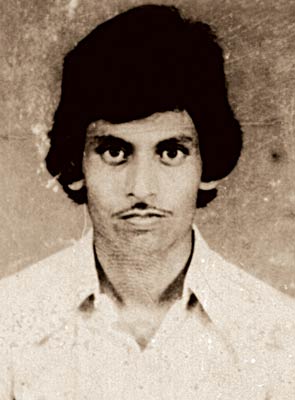
Bhikari Paswan was a worker at the Victoria Jute Mill.
In an earlier incident in the mid eighties, CPI-M goondas attacked, molested and murdered a senior officer of United Nations Children’s Fund (UNICEF), severely hurting another officer of the Central government in Bantala, on the outskirts of Calcutta. ‘The reason was that these two lady officers had detected huge embezzlement of UNICEF funds and relief materials by CPI-M functionaries. When the matter was reported to the then Chief Minister Jyoti Basu, he reacted saying: “Such incidents happen, don’t they?” And that was the end of the matter.’
In 2009 the sessions court at Ranaghat in Nadia convicted four persons in connection with the looting of a marriage party in February 2003, in which the driver of the bus was killed and six women passengers raped. However the court let off 17 others, including two local CPI-M leaders Subal Bagchi and Saidul Islam, for lack of evidence. ‘Bagchi was then a member of the CPI-M zonal committee from Ranaghat and Islam was the pradhan of Kamalpur gram panchayat. A large number of witnesses had turned hostile in the case affecting the prosecution. Ninety per cent of the witnesses out of the 158 turned hostile, said Dilip Chatterjee, the counsel of the state government.’
In an earlier incident in the mid eighties, CPI-M goondas attacked, molested and murdered a senior officer of United Nations Children’s Fund (UNICEF), severely hurting another officer of the Central government in Bantala, on the outskirts of Calcutta… ‘When the matter was reported to the then Chief Minister Jyoti Basu, he reacted saying: “Such incidents happen, don’t they?” And that was the end of the matter.’
In fact membership has become so easy that a person like Subal Bagchi, and many more like him nesting with the party, could not only enter the membership ranks but elevate their stature to that of a ‘leader’. These incidents speak volumes for the slackening of the political and ideological rigour that had perhaps once given a place of distinction to the CPI-M, setting it apart from the wider political class.
*
The stories of political murders and disappearances in West Bengal are endless. And they do not usually come out into the open. But sometimes they do. To be more precise, of late they have started coming out. This is no doubt due to the winds of change blowing in the state, where the domination of the CPI-M and the Left Front is breaking. For the first time the effect of the ‘fear factor’ is declining. The well-known Rizwanur Rehman case was a turning point.
Sujato Bhadra—member of the Association for Protection of Democratic Rights (APDR) and a key person to blow the whistle on the Rizwanur murder case—can, by the mere whisper of his name, raise Buddhadeb Bhattacharjee’s blood pressure by several notches. Given the CPI-M’s chilling disregard for transparency and democratic norms, Buddha’s revulsion towards Sujato is predictable. But the genesis of the bad blood between the two individuals, the omnipresent chief minister and the much vilified human rights activist, goes back to an incident that begs to be told.
In 1992 Jyoti Basu hosted a conference as a prelude to instituting a Human Rights Commission in West Bengal. Ironic, since the comrades have a human rights record humiliating enough to make them hang their heads in shame. Custodial deaths stand at a record high under the Left Front’s vigilant eye. The state government bears the infamy of extricating the police whenever they are in deep trouble. Thirty-three years of uninterrupted rule gave the CPI-M ample time and expansive leverage to make ‘party cadres’ out of the state police, waiting to be co-opted. Arrogance running high, the party’s writ turned into commands to which every ancillary of the state bowed its head. The party feared no one.
Custodial deaths stand at a record high under the Left Front’s vigilant eye. The state government bears the infamy of extricating the police whenever they are in deep trouble. Thirty-three years of uninterrupted rule gave the CPI-M ample time and expansive leverage to make ‘party cadres’ out of the state police, waiting to be co-opted.
Before instituting the State Human Rights Commission the government put out a notification in newspapers about a conference on human rights—an open meeting anybody could participate in. `We decided to attend the meeting and made the necessary preparations,’ says Sujato. APDR members charted out a list of human rights violations in West Bengal, distributing it among the speakers a day before the conference. ‘I even gave one to Buddhadeb Bhattacharjee’s secretary, who happens to be my cousin,’ says Sujato.
The next day APDR members turned up at Shishir Mancha, the venue of the meeting. Naranarayan Gooptu was delivering the inaugural address, in the course of which he denounced the manner in which the Congress government in Tripura had hushed up reports on mass killing probed by a judicial commission. I raised my hand. Jyoti Basu was on the podium. He did not want to allow me my question. But Dr Bela Dutta Gupta (former chairperson, West Bengal Women’s Commission) sitting next to him, allowed, me. I drew the speaker’s attention to similar instances in West Bengal in which the state government had swept judicial commission reports under the carpet.’
Buddhadeb Bhattacharjee, then minister in charge of the police, information and culture (a pungent cocktail!) was not on the podium. The moment the question rang out he rushed to the dais, took the mike, and asked the person asking the question to meet him outside the hall. ‘This sparked a furore. APDR members scattered in the hall rose to their feet, protesting the muzzling of questions at a seminar. We walked out.’

Buddhadeb Bhattacharjee after the 2006 Assembly Elections Victory.
‘The moment I stepped out of the hall Buddha came towards me—rolling his sleeves and asking who had raised the question. When I identified myself he asked me to repeat the question. As I did so there was an altercation. Buddha signalled to the police who started to thrash me.’
Amid all this, unnoticed by most in the audience, was Maitreyo Ghatak, well-known litterateur. ‘None of us saw him,’ says Sujato. When he was being whisked away from the seminar hall Ghatak voiced his protest. Raising his hand, he stood up and kept repeating in a well-mannered tone: `Seminare prashna kora to anyay noi’ (It is not a crime to raise questions at a seminar).
It was rather funny. This man who had just casually walked into the meeting got caught in the fracas. As Buddha ordered the police to arrest us, he also gave an order, to arrest Ghatak, who passed off unrecognised in the ruckus. We were in the police van when we noticed the author sitting with us. I asked him “Aaapni ekhane ki korchhen?” (What are you doing here?) He looked at me and said: “All I said was that it’s not a crime to ask questions at a seminar!”‘
The police van disgorged the APDR members and Ghatak at the Lai Bazaar headquarters. Here the police discovered they had messed up by rounding up Ghatak in the melee. The police then would not register a case. They just asked us to leave their headquarters. We refused, insisting our names had to be recorded since we were arrested,’ narrates Sujato.
‘The moment I stepped out of the hall Buddha came towards me—rolling his sleeves and asking who had raised the question. When I identified myself he asked me to repeat the question. As I did so there was an altercation. Buddha signalled to the police who started to thrash me.’
The arrest could not be stamped out of the public glare. The state government was in a spot. It was learnt Buddhadeb later attempted a conciliatory meeting with APDR. It was also subsequently learnt that as chief minister he refused to meet any delegation that had Sujato in it.
III
‘Mothers and Sisters’
Of its many baffling, conflicting cultural traits, Bengal’s attitude towards women is worth a discussion. Bengalis like to believe they are intrinsically ‘superior’ vis-a-vis other communities in the way they treat their women. A popular myth in wide circulation propagates that the women in this state are treated with unique respect, absent in most ‘uncivilised’ parts of the country. Marxists would like to claim a large share of this glory, combating patriarchy in addition to being the most deserving inheritors of the legacy of the ‘Bengal Renaissance’ and the participation of women in the national movement. The Left movement, according to the communists, humanised gender relations. The ground situation, however, testifies to a different fact: patriarchy is as native to Bengal as its inalienable Rabindrasangeet; male chauvinism as deeply entrenched as the roots of Left politics.
The qualities that Bengal in general and the CPI-M in particular would like to bestow on themselves are rather imaginary – fond illusions in the light of the collective experience of Bengal’s women. The tragedy is compounded by the fact that the ruling Communist Party, which perhaps could have initiated a different culture, is itself yet to break free from male chauvinism.
During my years in Calcutta as an SFI activist I remember my exasperation over the sexist division of labour that would invariably mark organisational conclaves. In 1982, preparations were underway for the SFI conclave in Dum Dum. We were meeting in Calcutta University, deciding on delegation of responsibilities. The dadas instructed us women to come in Bengal’s traditional red-bordered white sarees; it was also our duty to put tikas on foreign delegates and shower flower petals on them. As if this were not galling enough we were also given the duty of distributing water! Questioning such stereotypical division of labour would usually brand me a `feminist’ – as if it were a curse!
The idea of respect for women goes with the expectation of conforming to a stereotypical image of womanhood – women primarily as mothers and nurturers – as a necessary pre-requisite for earning any form of social regard. Essentially conservative, the CPI-M unfailingly stays away from critiques of the patriarchal family, let alone from controversial issues like gay rights, sexuality – now dominant strands of feminist discourse. Like much of our political and social class, the CPI-M too fights shy of discussing, much less taking a decisive position on the rights of marginalised groups, lesbians, homosexuals, transgender persons. Instances of this crippling reluctance are many.
Let’s take a look at some of the scenes witnessed on the floor of Parliament. The somewhat desultory protests in a somnolent post-lunch session of Lok Sabha, following the attack on Deepa Mehta’s Fire, indicate the social psyche of our secular political class.
The idea of respect for women goes with the expectation of conforming to a stereotypical image of womanhood – women primarily as mothers and nurturers – as a necessary pre-requisite for earning any form of social regard. Essentially conservative, the CPI-M unfailingly stays away from critiques of the patriarchal family, let alone from controversial issues like gay rights, sexuality – now dominant strands of feminist discourse.
The Congress and Left MPs jointly criticised attackers from the Hindu fringe groups – but that criticism was articulated solely in political party terms; an attack on the sangh parivar and BJP which in no way added up to a defence of the right to sexual preference. Whenever such cultural/gender issues have surfaced in and outside Parliament nothing has really distinguished the CPI-M from the rest of the political class. Congress and BJP governments in succession banned dancing in Maharashtra’s bars, putting thousands of bar dancers out of jobs, pushing them into the sex trade. The imposition of the fiat was an exercise in morality. Not surprisingly the CPI-M did not take a vocal stand defending the rights of bar dancers – probably fearing such a stand could be interpreted as defence of the right to choose a ‘dishonourable’ livelihood.
In Jotodur Mone Pore Jyoti Basu provides a glimpse into the conservative, brahmanical culture of the CPI-M. ‘I got married on 5 December 1958. This was my second marriage. The leadership at the Centre and state then felt I was unwilling to go underground. This was not at all true. The party’s instruction to me was to stay out and continue as far as possible to work in public.

Jotodur Mone Pore by Jyoti Basu.
`I received a letter from the party’s secret cell, seeking an explanation as to why I was not going undercover. The letter also raised questions about my marriage [Italics added]. In reply I informed them that it was at the instruction of the party that I was working in public. I was ready to go undercover even at one-hour notice if the party issued a new instruction. I requested the secret cell to circulate my reply within the party. The letter sent to me by the secret cell was circulated, I do not know if my reply was,’ he writes [Italics added].
Basu made two interesting revelations: The puritanical Communist Party ‘raised questions’ about his second marriage, which it did not seem to approve. That cryptic one line indicated the party’s disapproval of a personal choice made by Basu—one which, in the CPI-M’s view was somehow detrimental to the institution of marriage; a view often shared by hardcore conservatives in right-wing organisations like the RSS. Sexual orientation, free/subversive love, non-traditional personal choices are derided by both the Left-and Right-wing-under the worn-out rubric of ‘Indian culture and values.’ Within the organisation the CPI-M is known to intrude into the personal lives of its leaders and cadres. This conservatism manifests itself in the party’s attitude towards women, the sanctimonious glorification of ‘Mother’ and ‘Sister’, and the exclusion of the modern, radicalised woman.
Basu also pointed to an endemic organisational flaw ingrained in the Communist Party culture. He said the secret cell’s critical letter to him was circulated but he did not know whether his reply was. I would like to recollect here Tapas’s criticism that while the CPI-M would widely circulate its official stand on a controversial issue, it would invariably sweep under the carpet the views contradicting the dominant line (Chapter 1).
Basu also pointed to an endemic organisational flaw ingrained in the Communist Party culture. He said the secret cell’s critical letter to him was circulated but he did not know whether his reply was. I would like to recollect here Tapas’s criticism that while the CPI-M would widely circulate its official stand on a controversial issue, it would invariably sweep under the carpet the views contradicting the dominant line.
Historian Tanika Sarkar believes the Leftist and radical imagination is uneasy about the ‘will of the woman to appropriate the world or even to move freely within it. Tribal or peasant women have been the main repositories of class militancy, not so much the middle class urban women’. Even the CPI-M’s women’s organisation speaks a patriarchal language. Ironic indeed for the Ganatantrik Mahila Samiti to address its gatherings as Mayera aar Bonera (Mothers and Sisters); implicit in such a form of address is the exclusion of other categories – particularly women of ‘loose character’ (a term in great currency in Bengal)!
The tone and tenor of Marxist speak on women and culture has been distressingly moralistic and puritanical, the arguments full of references to the West’s cultural invasion, its debilitating influence on Indian morals. The CPI-M, much of the time, has joined in demands for greater control and banning of TV channels promoting ‘degenerate’ values. If there were one issue on which MPs across the spectrum have struck a unanimous chorus it would be banning ‘wild’, ‘corrupting’ Western channels. One of the CPI-M’s common arguments against allowing foreign universities in India has been grounded in the threat perceived to Indian ‘values’. Western academic syllabi, according to the party, would destroy India’s unique values.
Perhaps the long-standing complaints of women in the party are reflected in an organisational document in which the CPI-M pulled up its male comrades: ‘Communist families should discourage conformity to stereotypical roles expected of women, particularly of newly-wed women, of covering heads, taking to purdah, shouldering the main burdens of domestic responsibility,’ said Women’s Issues and Tasks, adopted by the Central Committee in 2005 and circulated in 2006. ‘There have been many cases of two active comrades in the party deciding to get married. In some cases, the marriage then becomes a barrier for the woman’s advance, because … she is expected to give up her political life and become a housewife…. By not intervening, the party actually loses a talented and committed cadre, apart from having a negative impact on the woman….The woman comrade is expected to find a job to support the family although both may be equally qualified in terms of the party’s assessment,’ it pointed out, urging the members to end discrimination between sons and daughters.
Despite its active support to the Women’s Reservation Bill, the CPI-M has been stingy towards its own women comrades. The party’s decision-making bodies – Central Committee, Politburo – are packed with men, with only a handful of women. Protesting the skewed gender balance, Brinda Karat had even once quit the Central Committee, though without much impact.

Brinda Karat, first woman to be a member of the CPI-M Politburo and Vice-President of AIDWA.
Like political violence, gender violence has been executed at a range of levels. Few would forget the brutal, broad daylight lynching and killings at Bantala in May 1990 in a public space and subsequently Jyoti Basu’s insensitive comments, blithely transferring culpability of the crime to unidentifiable ‘anti-socials’. Two months later that year, following the rapes of three Bangladeshi women in Birati, a senior woman leader of the party and its women’s wing made a statement: ‘A group of anti-socials attacked and raped Sabitri Das, Reba Sen and Shanti Sen, the three women who stayed in the unauthorised hutments along the railway tracks…. Although so many women of that area, including Shanti Das, the mistress of a notorious anti-social, were involved in foul professions and such honeymoons of these women with the anti-socials were an open secret, that day’s event appeared to be a sequel to the rivalry between these anti-socials with Pradip Sarkar, of whom Sabitri Das was a mistress,’ wrote Shyamali Gupta, in no less a forum than the party mouthpiece (Italics mine). This was no wild, personal statement shot off by an individual. In the party mouthpiece, the statement conveyed the CPI-M’s official position on the Birati rapes. Even more shocking is the fact that the comments came from the general secretary of the Ganatantrik Mahila Samiti!
Despite its active support to the Women’s Reservation Bill, the CPI-M has been stingy towards its own women comrades. The party’s decision-making bodies – Central Committee, Politburo – are packed with men, with only a handful of women. Protesting the skewed gender balance, Brinda Karat had even once quit the Central Committee, though without much impact.
A crude attempt indeed, to whitewash the crimes, to stave off the responsibility of the party and government by situating the rapes within the boundaries of law and order and morality: the CPI-M was employing an age-old tactic used by men in power. Use of words like mistress, honeymoon, anti-socials, foul professions and unauthorised hutments were significant pointers to the party’s mindset. ‘The only relevance for such description resides in the unstated assumption that there are degrees of culpability in a crime like rape, that women require certain sexual, property qualifications to be classified as fully legitimate victims,’ observed Tanika Sarkar. She pointed out that apart from gender, the comments were even more ‘unexpected’ from the class angle with their emphasis on ‘unauthorised hutments’. ‘It was precisely among refugees clinging to unauthorised hutments that the Left movement had found a major base in Calcutta in the 1950s,’ wrote Sarkar.
Through the years top CPI-M leaders have been on record, making statements smacking of male chauvinism and making a mockery of the party’s official stand on gender. Eight years after the Bantala incident, E. K. Nayanar, then Kerala chief minister, responded to the revelations of the Kozhikode call girl racket with this: ‘As long as there are women, there will be sex scandals’. On increasing crimes against women, rape and molestations, Nayanar, defending Kerala’s record, said, ‘In the US, rape is like drinking a cup of coffee’. On denying Susheela Gopalan the chief minister’s post, his comment was, ‘If you want to run after women you are free to do so. I will not’.
Like the administration, the police and different institutions, gender too is expected to faithfully serve the party and its interests. Seen in this context it is hardly surprising that the CPI-M and its women’s wing situated the Nandigram rapes within the familiar rhetoric of ‘anti-socials, conspiracies and opposition propaganda.’ In fact every organisation of the party ostensibly protecting the rights and interests of women – Ganatantrik Mahila Samiti, All India Democratic Women’s Association and National Commission for Women – pooled their resources to do a cover-up job on the Nandigram rapes.
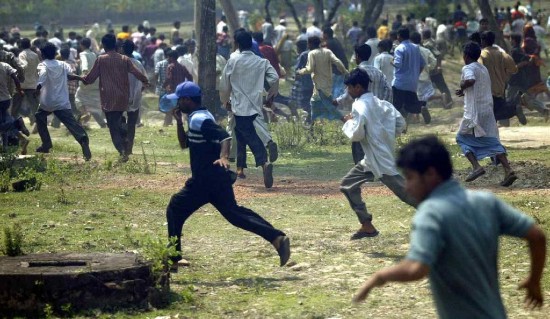
Villagers run as police fire teargas shells in Nandigram, 15 March 2007. Photo Credit: Reuters.
The ‘serve the party’ mindset also takes an upper hand when confronted with complaints of domestic violence – especially when the aggressor happens to be a party fund-raiser or leader. Pratyush Kumar (‘Bachhu’) Dutta, secretary of the Padma Pukur local committee, a former CPI-M councillor, took full benefit of this political immunity. For two decades Bachhu had been abusing his wife Rita. After running from pillar to post, finally abandoning her faith in the party, Rita decided to go public with her story. A meeting against domestic violence was organised by the UN-backed Institute of International Social Development on 27 September 2008, deliberately held in the heart of Padma Pukur – the local committee secretary’s preserve of influence. ‘The party had even tried hinting that Rita was mentally unstable,’ said Chandrayee Gupta, addressing the meeting as a lawyer. ‘I met Shyamali Gupta, president of Ganatantrik Mahila Samiti to talk about Rita’s case. Bachhu turned up at the meeting and called Shyamali Gupta aside. I can guess what he said. After returning to her room Shyamali mumbled something about the heat and left,’ said Chandrayee.
When I met Rita that day, far from revealing any signs of dormant or raging insanity she seemed in perfect control, greeting the guests, introducing them to each other. You could hear her despair and frustration at the party’s shoddy treatment, when she took the mike. ‘I have been physically, mentally and financially abused by Bachhu – a dada in this locality for 20 years. Every night he came home drunk, beat me up. He threatened my family, threatened to kill me. I was scared for my life and for my daughter Pamela.’
Like the administration, the police and different institutions, gender too is expected to faithfully serve the party and its interests. Seen in this context it is hardly surprising that the CPI-M and its women’s wing situated the Nandigram rapes within the familiar rhetoric of ‘anti-socials, conspiracies and opposition propaganda.’
Moving out of their shared flat Rita took up separate lodgings in the same locality. Bachhu went around using his clout with rickshaw pullers, and shopkeepers, harassing her. ‘I thought a party with Left ideology, friend of the people would help me. I knocked on the door of every possible leader. But they refused to intervene. It encouraged Bachhu to become more abusive,’ Rita told the meeting.
Apprehensive for her life, Rita registered a case under section 498 A-506 at the Bhowanipur police station on 21 June 2008. ‘Under the ruling party’s thumb and the benefit of Bachhu’s money the police did not take action,’ said Rita. She petitioned the deputy commissioner of police (South Division), the assistant commissioner, informing the Human Rights Commission of the police’s refusal to act on her FIR. ‘Today I stand before you after being turned away by every individual, every forum in the party,’ Rita told the meeting.
The public shaming did work after all. Last I heard was that the party had finally suspended Bachhu.
This excerpt has been carried courtesy the permission of Monobina Gupta. You can buy Left Politics in Bengal: Time Travels Among Bhadralok Marxists here
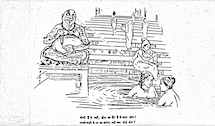
In the colonial period, the threat of the lecherous male gaze was used by the new patriarchy to restrict access to employment and public space for women, maintaining a patriarchal division of labour. Read how this process unfolded in our newest excerpt.
Saurav Kumar Rai
__

Was Lala Lajpat Rai's Hindu nationalism congruent with the principles of secularism? Explore our latest excerpt from Vanya Vaidehi Bhargav's fresh off-the-press book - Being Hindu, Being Indian: Lala Lajpat Rai's Ideas of Nation for more.
Vanya Vaidehi Bhargav
__
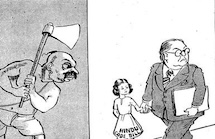
Popularly, we think that political cartoons question the powerful but what if this was not the case? What if political cartoons, replicated structures of the socially dominant? Read how in our new excerpt on political cartoons featuring Dr. Ambedkar.
Unnamati Syama Sundar
__

On Martyrs' day 2024, read the poet Sarojini Naidu's tribute to Gandhi given over All India Radio two days after his assassination.
Sarojini Naidu
__
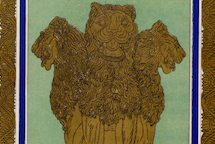
On Republic Day, the Indian History Collective presents you, twenty-two illustrations from the first illustrated manuscript (1954) of our Constitution.
Indian History Collective
__
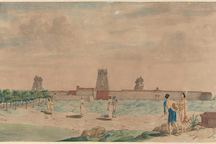
One of the key petitioners in the Ayodhya title dispute was Bhagwan Sri Ram Virajman. This petitioner was no mortal, but God Ram himself. How did Ram find his way from heaven to the Supreme Court of India to plead his case? Read further to find out.
Richard H Davis
__
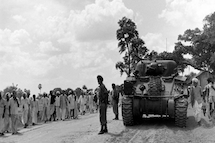
Labelled "one of the shortest, happiest wars ever seen", the integration of the princely state of Hyderabad in 1948 was anything but that. Read about the truth behind the creation of an Indian Union, the fault lines left behind, and what they signify
Afsar Mohammad
__
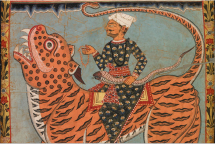
How did Bengal get a large Muslim population? Was it conversion by ruling elites was there something deeper at play? Read Dr. Eaton's classic essay to find out.
Richard Eaton
__
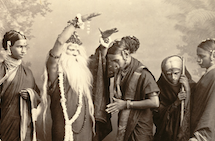
An excerpt from Shailaija Paik's new book 'Vulgarity of Caste' that documents the pivotal role Tamasha (the popular art form) has played in reinforcing and producing caste dynamics in Marathi society.
Shailaja Paik
__
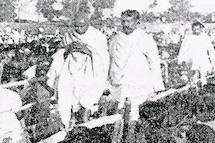
In 1942, two sub-districts in Bengal declared independence and set up a parallel government. The second part of our story brings you archival papers in the form of letters, newspaper reports, and judicial records documenting this remarkable movement.
Indian History Collective
__
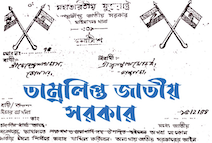
In 1942, five years before India was independent, two sub-divisions in Bengal not only declared their independence— they also instituted a parallel government. The first in a new series.
Indian History Collective
__
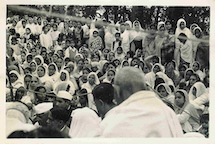
In his own words, read Mohandas Karamchand Gandhi's views on the proselytising efforts taken on by the organisations such as Arya Samaj, Tabhligi Jamaat, and the Church Missionary Society of England.
Mohandas Karamchand Gandhi
__
TIMELINE
-
2500 BC - Present 
2500 BC - Present Tribal History: Looking for the Origins of the Kodavas -
2200 BC to 600 AD 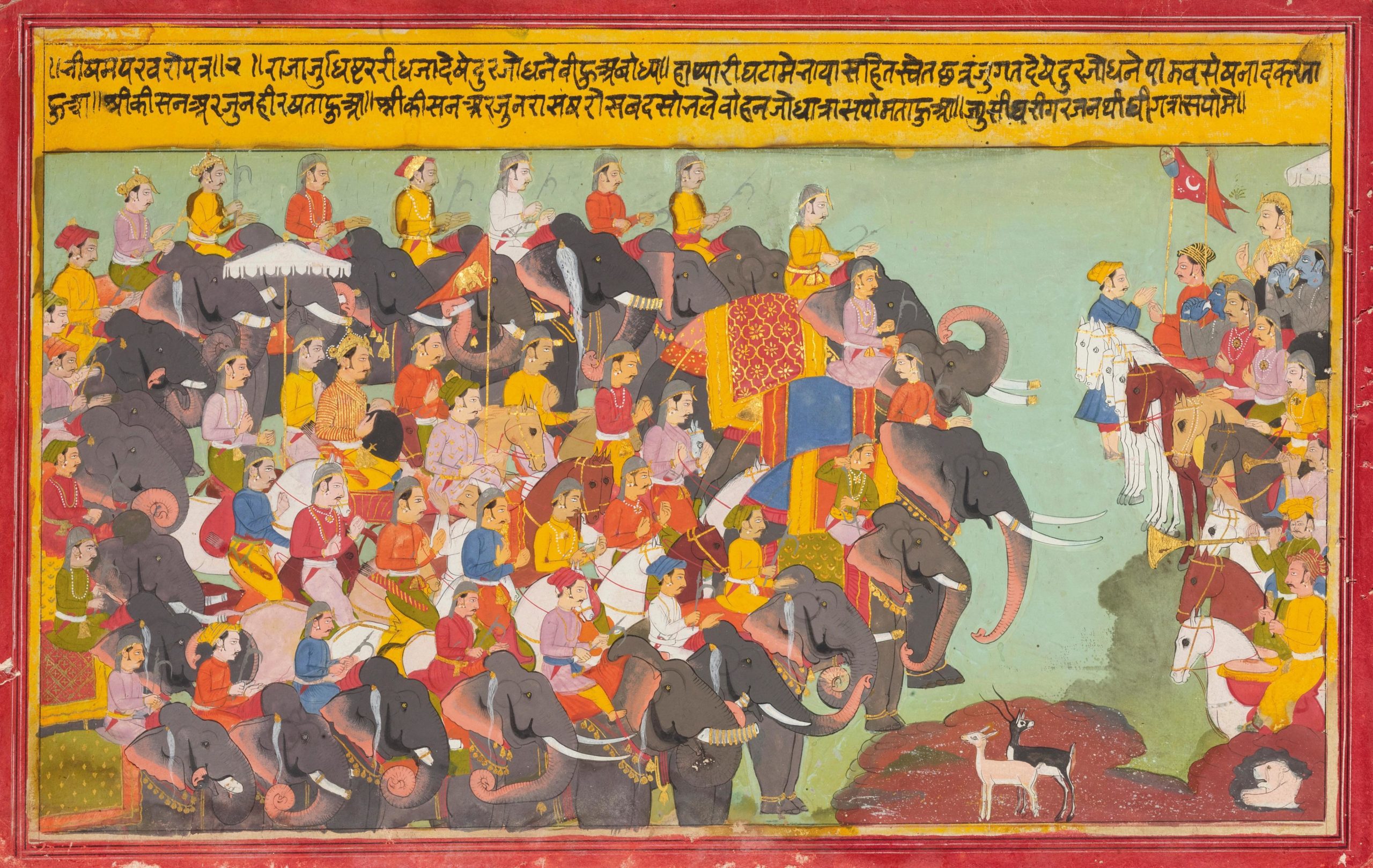
2200 BC to 600 AD War, Political Violence and Rebellion in Ancient India -
400 BC to 1001 AD 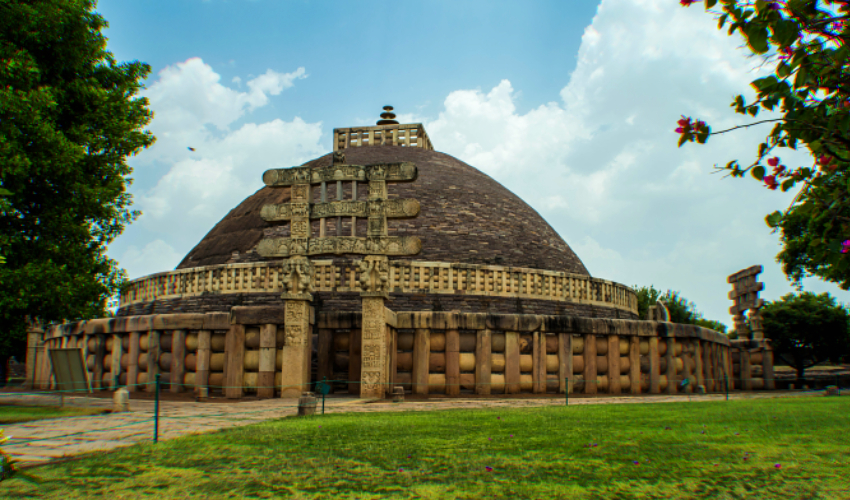
400 BC to 1001 AD The Dissent of the ‘Nastika’ in Early India -
600CE-1200CE 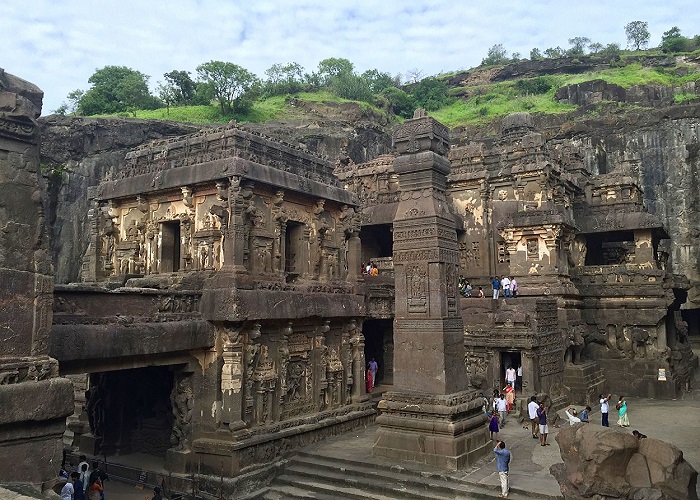
600CE-1200CE The Other Side of the Vindhyas: An Alternative History of Power -
c. 700 - 1400 AD 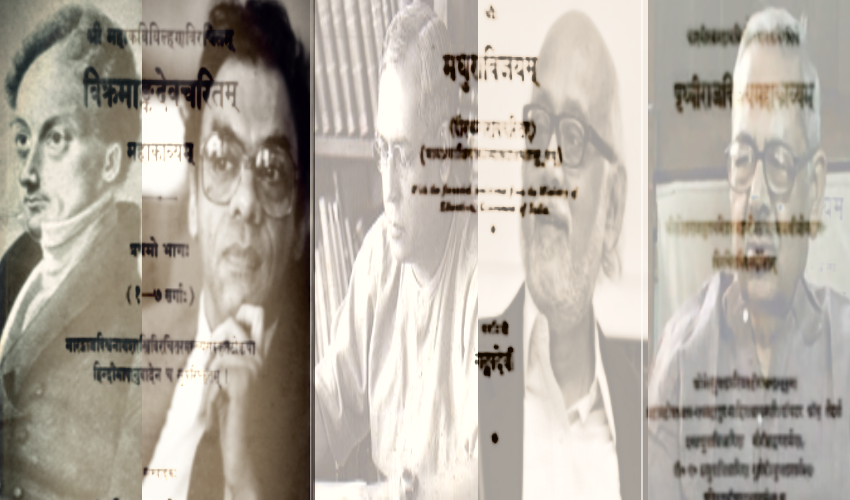
c. 700 - 1400 AD A Historian Recommends: Representing the ‘Other’ in Indian History -
c. 800 - 900 CE 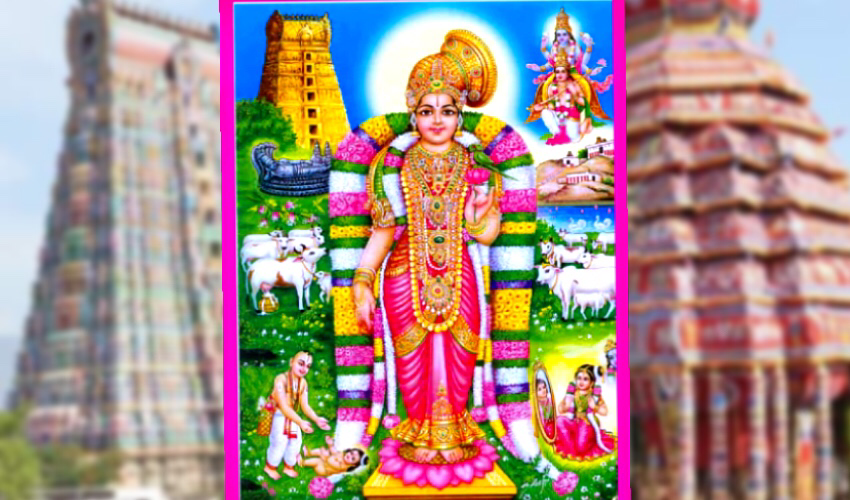
c. 800 - 900 CE ‘Drape me in his scent’: Female Sexuality and Devotion in Andal, the Goddess -
1192 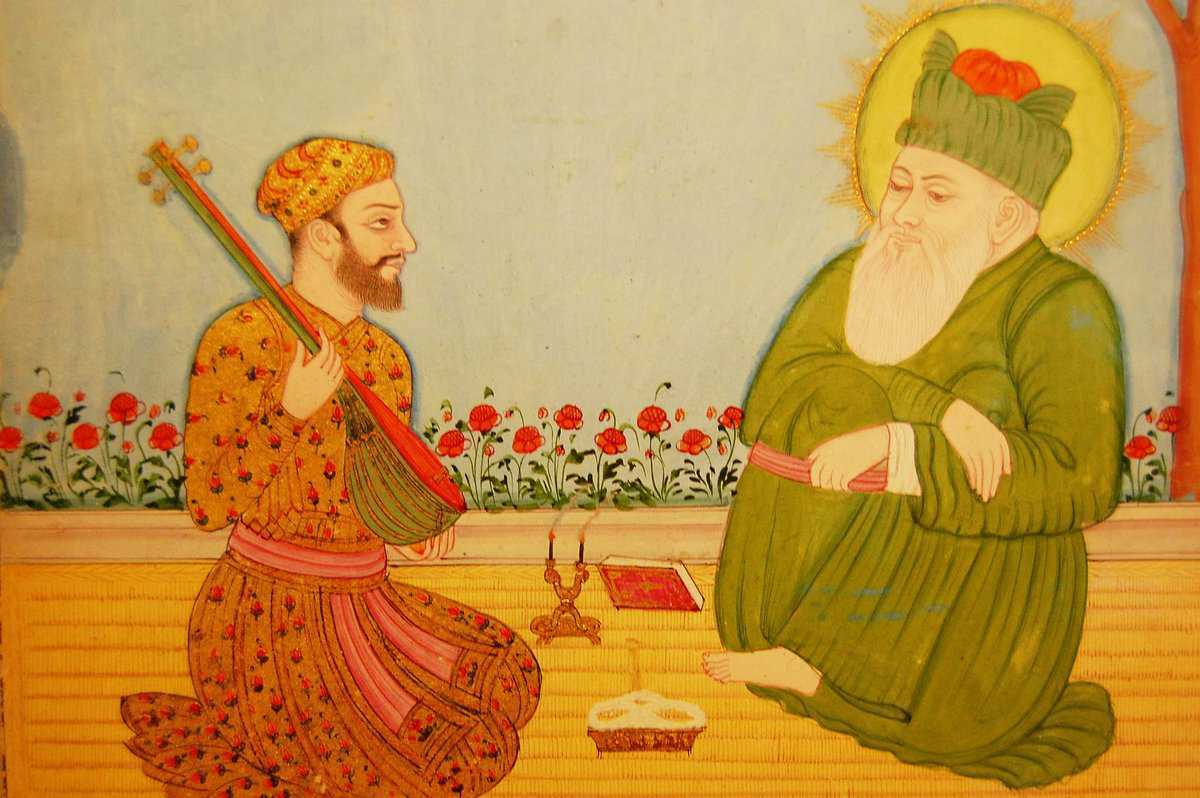
1192 Sufi Silsilahs: The Mystic Orders in India -
1200 - 1850 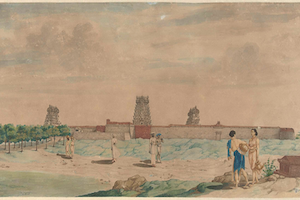
1200 - 1850 Temples, deities, and the law. -
c. 1500 - 1600 AD 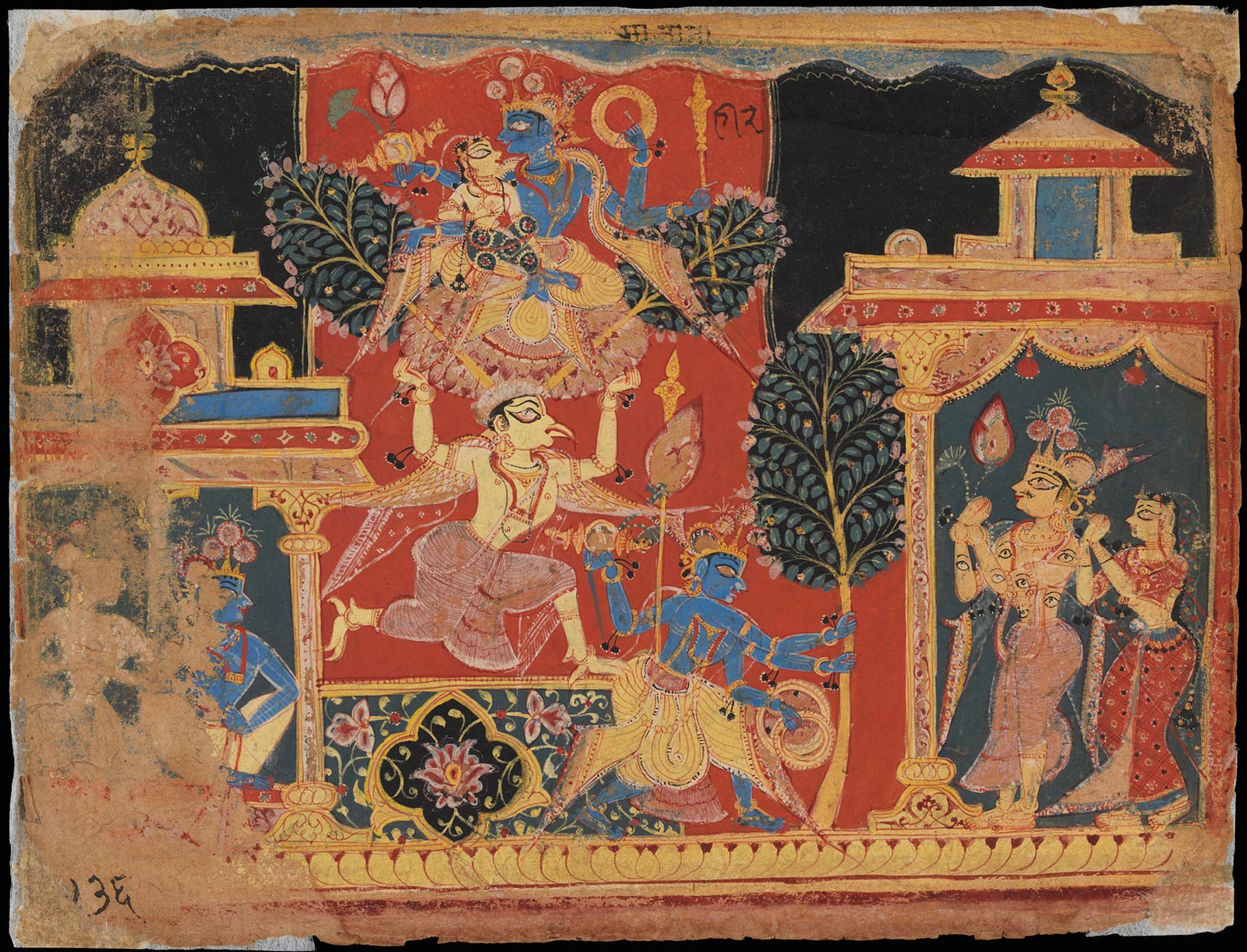
c. 1500 - 1600 AD A Historian Recommends: Religion in Mughal India -
1200-2020 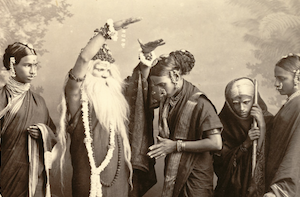
1200-2020 Policing Untouchables and Producing Tamasha in Maharashtra -
1530-1858 
1530-1858 Rajputs, Mughals and the Handguns of Hindustan -
1575 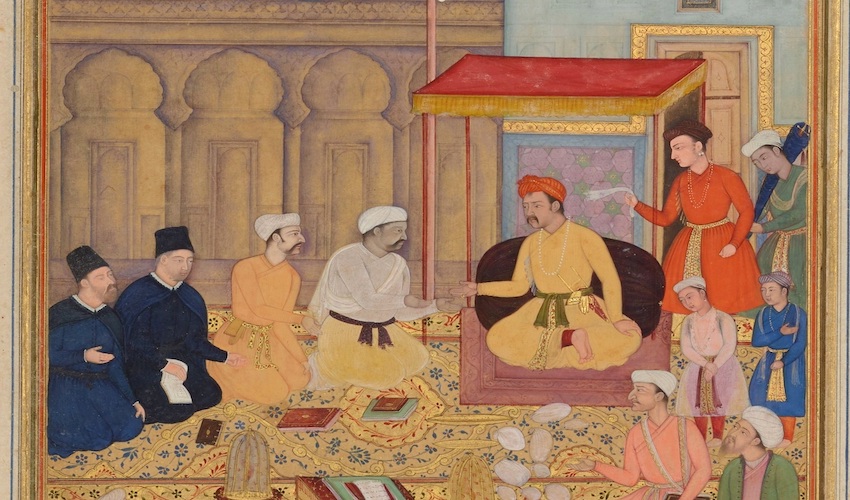
1575 Abdul Qadir Badauni & Abul Fazl: Two Mughal Intellectuals in King Akbar‘s Court -
1579 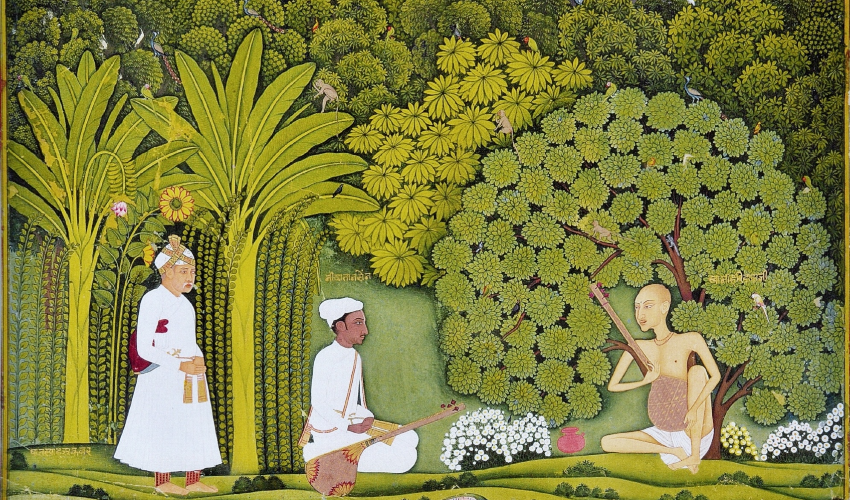
1579 Padshah-i Islam -
1550-1800 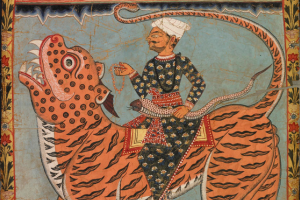
1550-1800 Who are the Bengal Muslims? : Conversion and Islamisation in Bengal -
c. 1600 CE-1900 CE 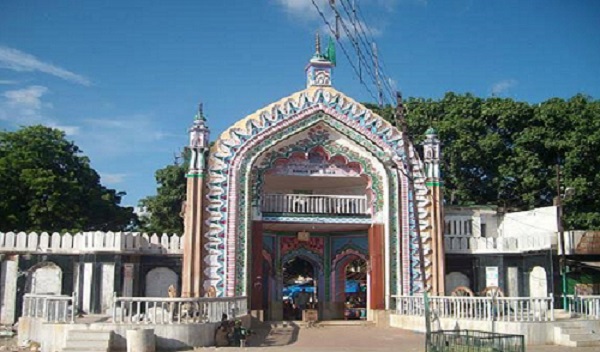
c. 1600 CE-1900 CE The Birth of a Community: UP’s Ghazi Miyan and Narratives of ‘Conquest’ -
1553 - 1900 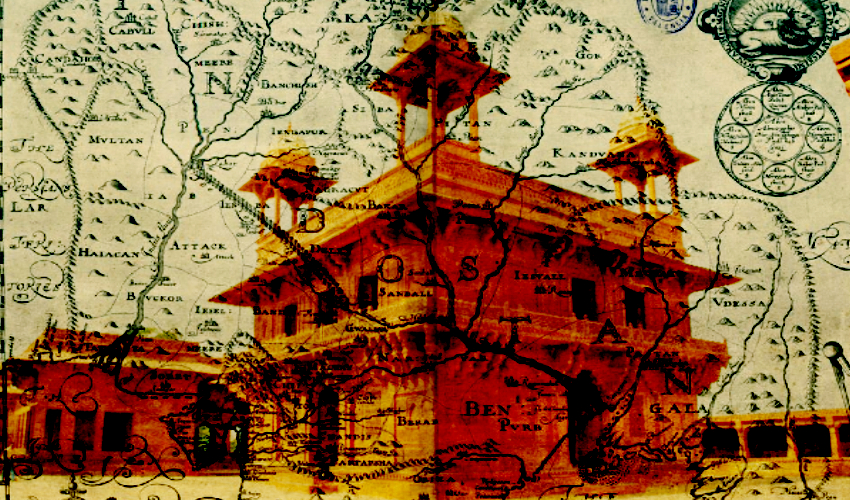
1553 - 1900 What Happened to ‘Hindustan’? -
1630-1680 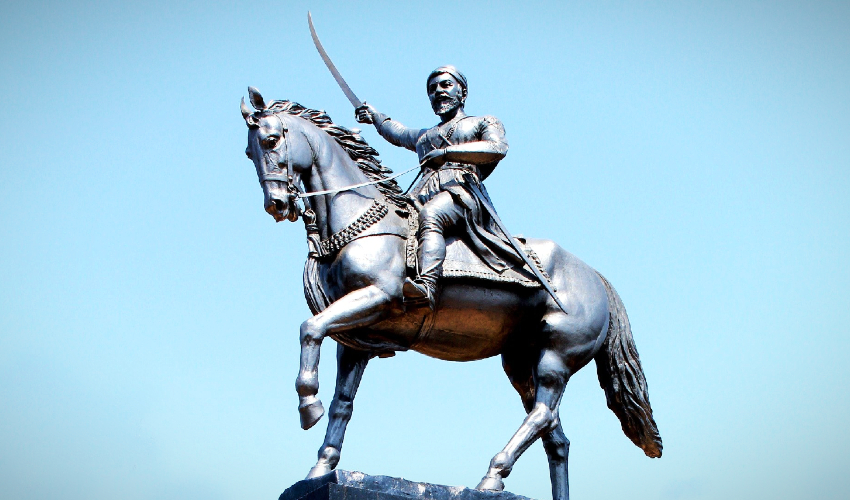
1630-1680 Shivaji: Hindutva Icon or Secular Nationalist? -
1630 -1680 
1630 -1680 Shivaji: His Legacy & His Times -
c. 1724 – 1857 A.D. 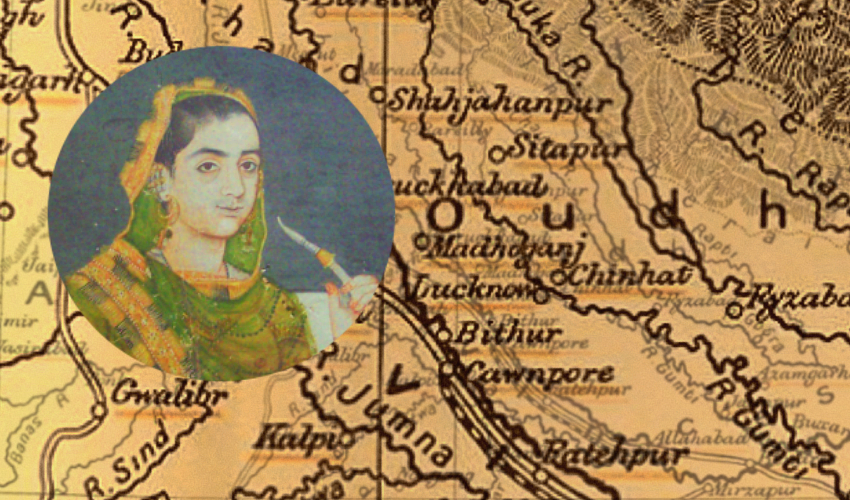
c. 1724 – 1857 A.D. Bahu Begum and the Gendered Struggle for Power -
1818 - Present 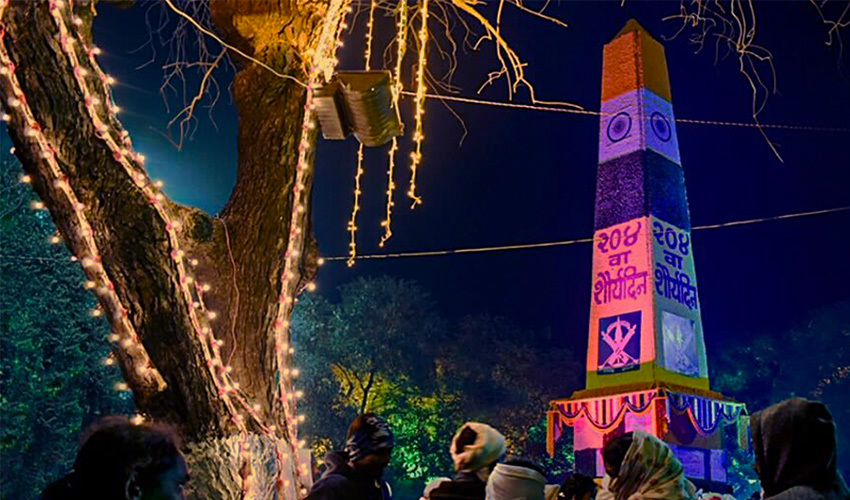
1818 - Present The Contesting Memories of Bhima-Koregaon -
1831 
1831 The Derozians’ India -
1855 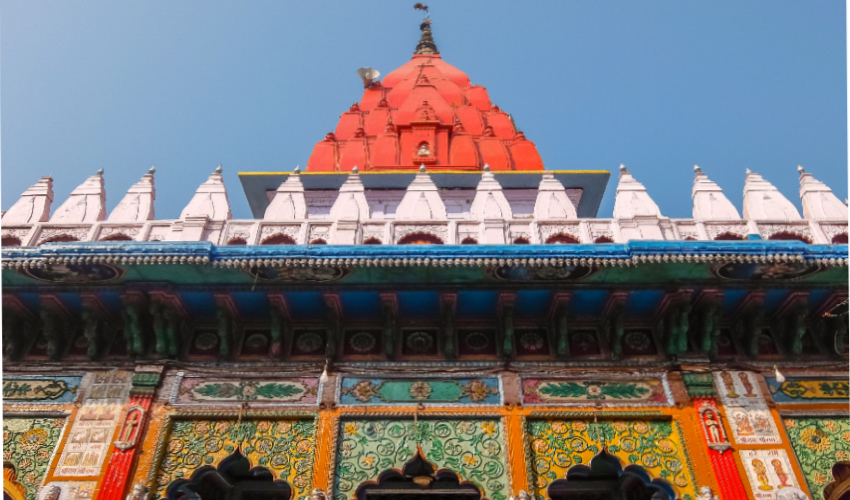
1855 Ayodhya 1855 -
1856 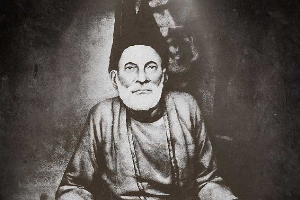
1856 “Worshipping the dead is not an auspicious thing” — Ghalib -
1857 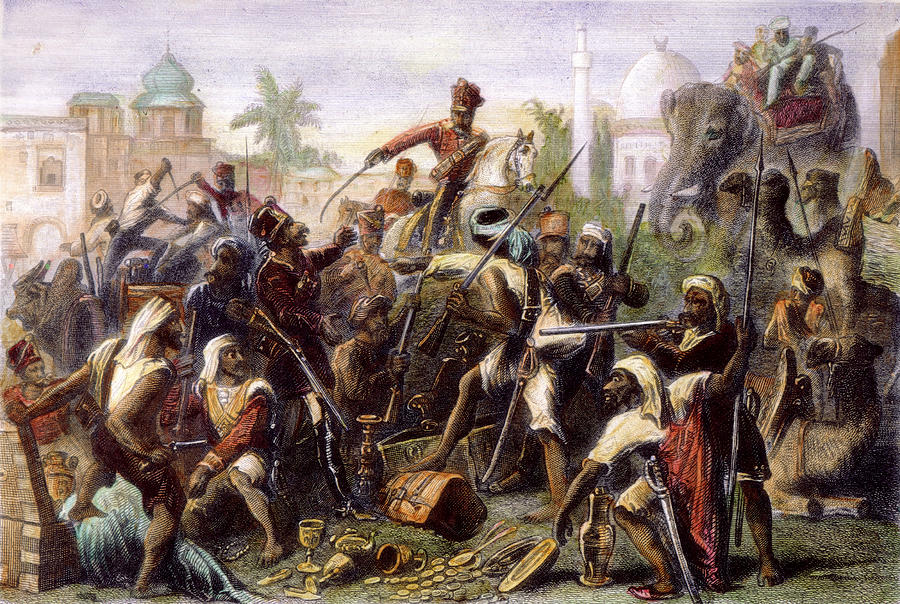
1857 A Subaltern speaks: Dalit women’s counter-history of 1857 -
1858 - 1976 
1858 - 1976 Lifestyle as Resistance: The Curious Case of the Courtesans of Lucknow -
1883 - 1894 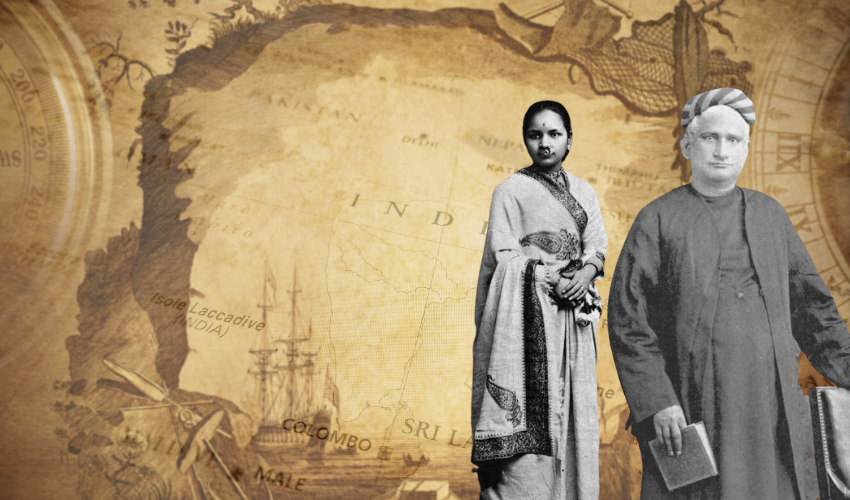
1883 - 1894 The Sea Voyage Question: A Nineteenth century Debate -
1887 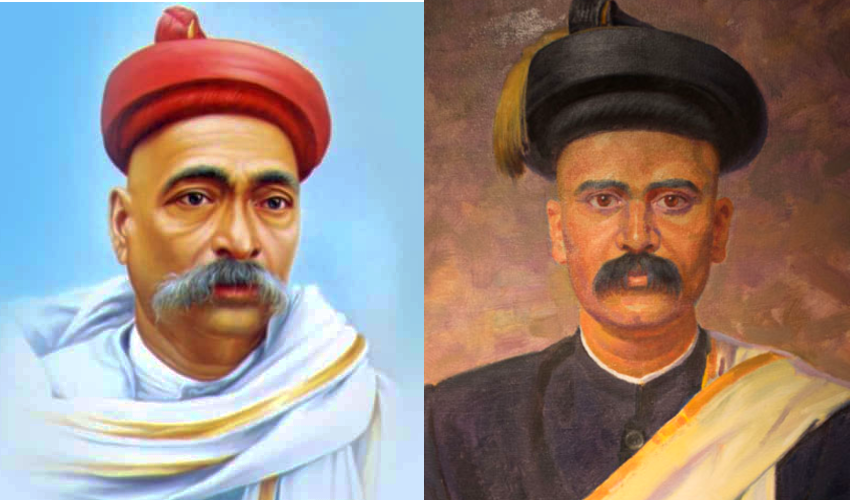
1887 The Great Debaters: Tilak Vs. Agarkar -
1893-1946 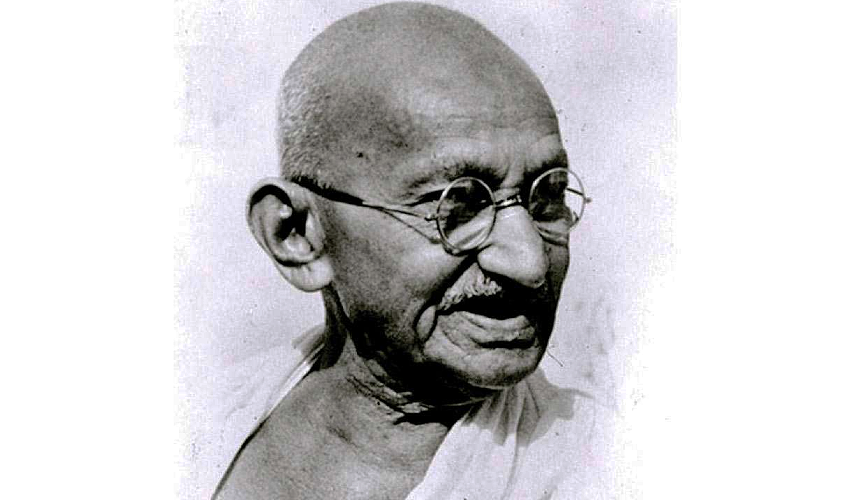
1893-1946 A Historian Recommends: Gandhi Vs. Caste -
1897 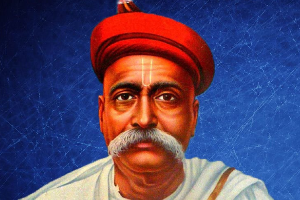
1897 Queen Empress vs. Bal Gangadhar Tilak: An Autopsy -
1913 - 1916 Modern Review 
1913 - 1916 A Young Ambedkar in New York -
1916 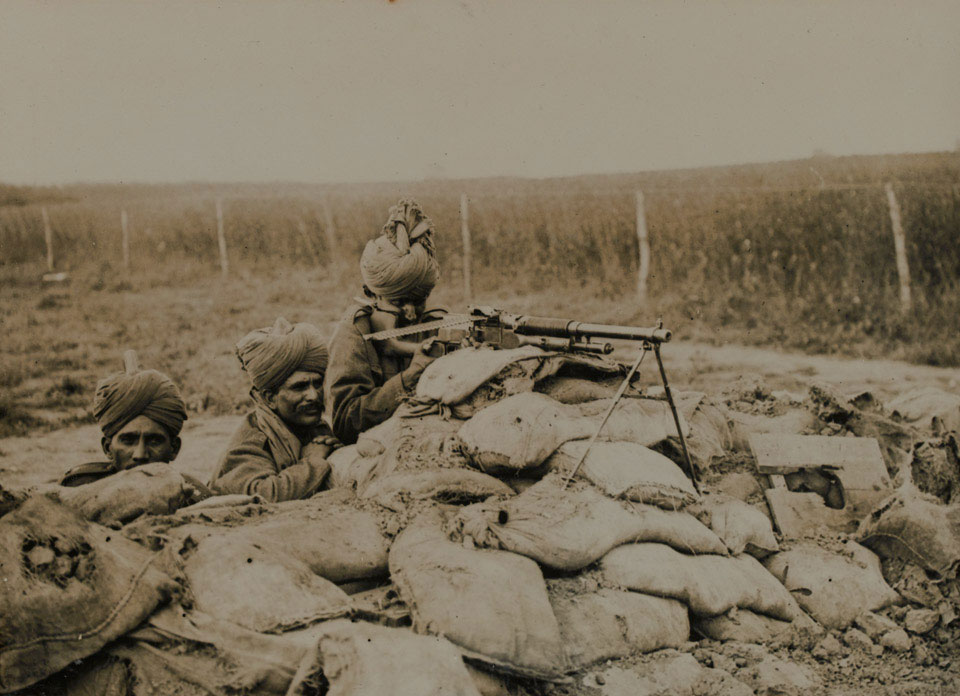
1916 A Rare Account of World War I by an Indian Soldier -
1917 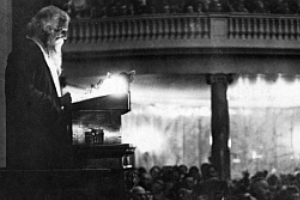
1917 On Nationalism, by Tagore -
1918 - 1919 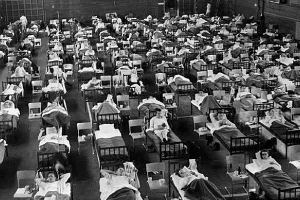
1918 - 1919 What Happened to the Virus That Caused the World’s Deadliest Pandemic? -
1920 - 1947 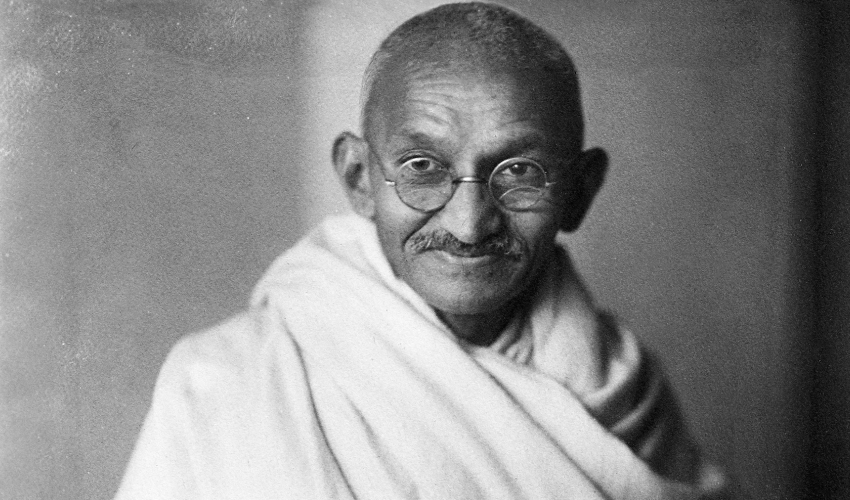
1920 - 1947 How One Should Celebrate Diwali, According to Gandhi -
1921 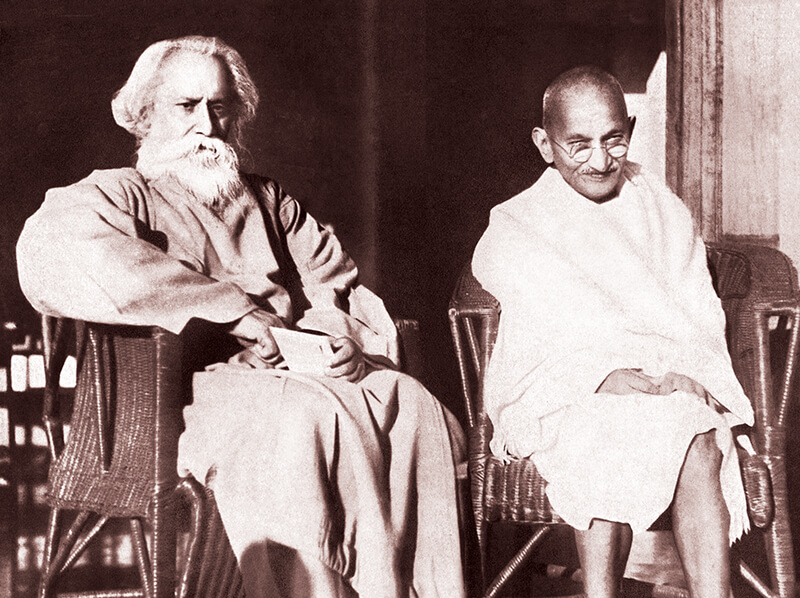
1921 Great Debates: Tagore Vs. Gandhi (1921) -
1921 - 2015 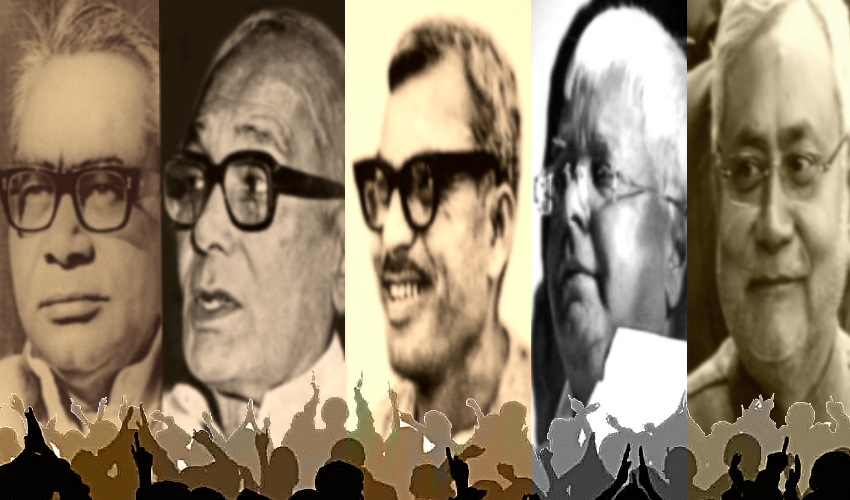
1921 - 2015 A History of Caste Politics and Elections in Bihar -
1915-1921 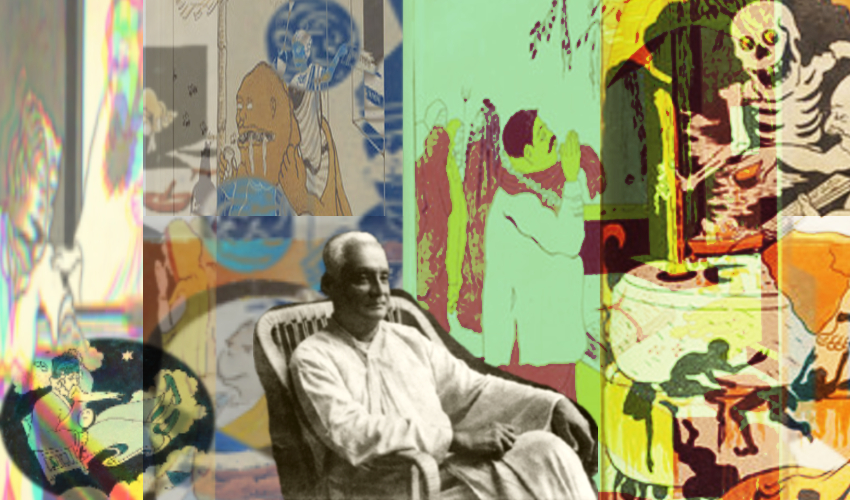
1915-1921 The Satirical Genius of Gaganendranath Tagore -
1924-1937 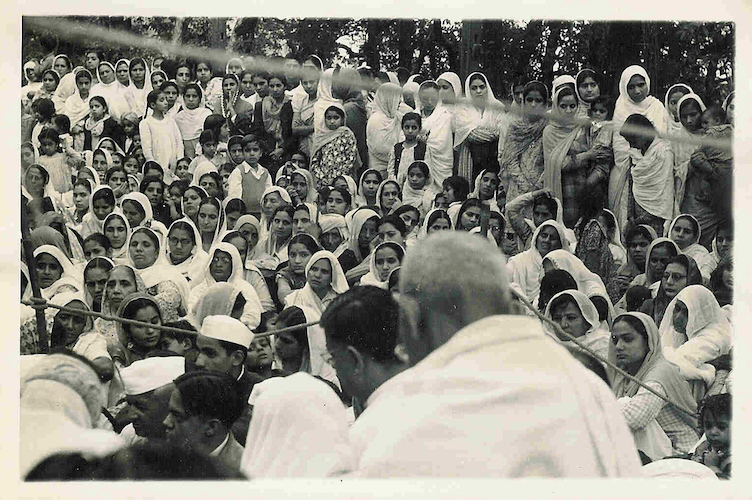
1924-1937 What were Gandhi’s Views on Religious Conversion? -
1900-1950 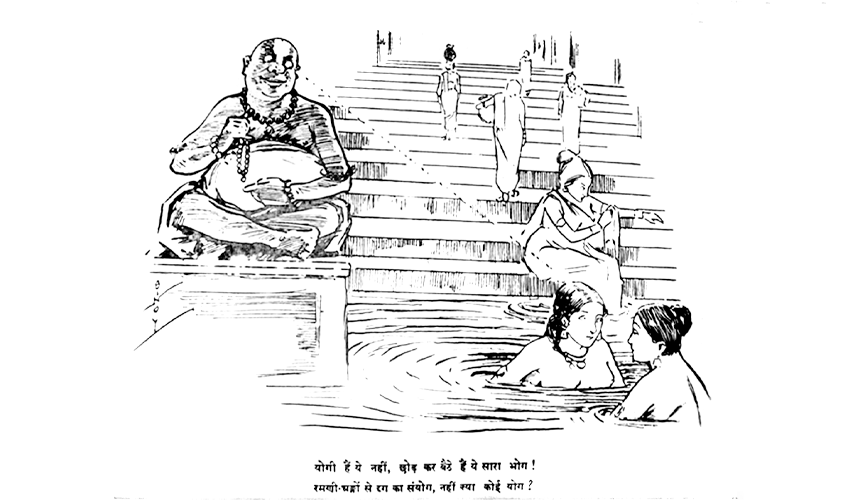
1900-1950 Gazing at the Woman’s Body: Historicising Lust and Lechery in a Patriarchal Society -
1925, 1926 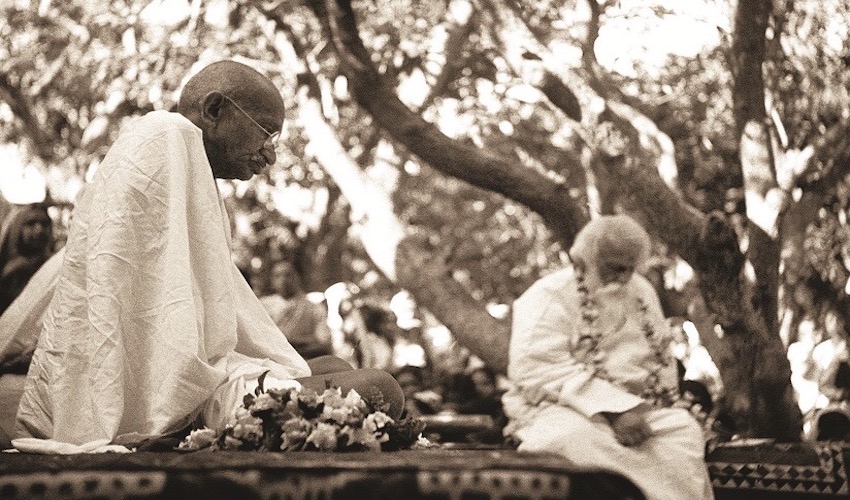
1925, 1926 Great Debates: Tagore vs Gandhi (1925-1926) -
1928 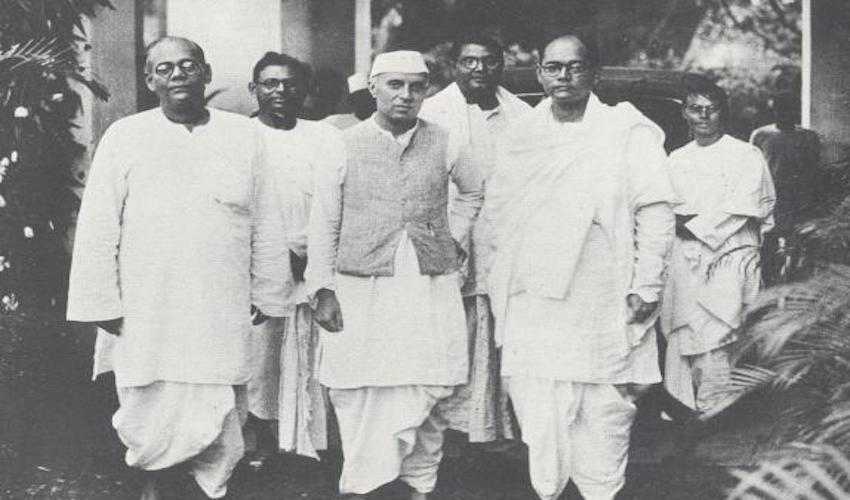
1928 Bhagat Singh’s dilemma: Nehru or Bose? -
1930 Modern Review 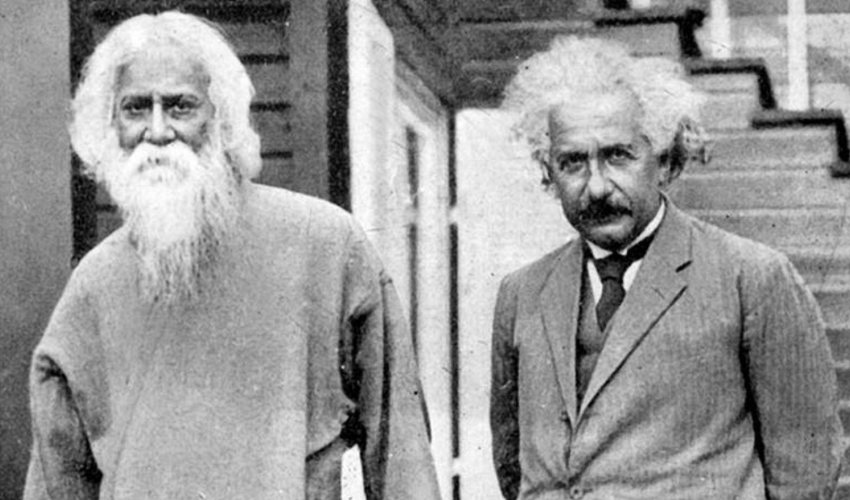
1930 The Modern Review Special: On the Nature of Reality -
1932 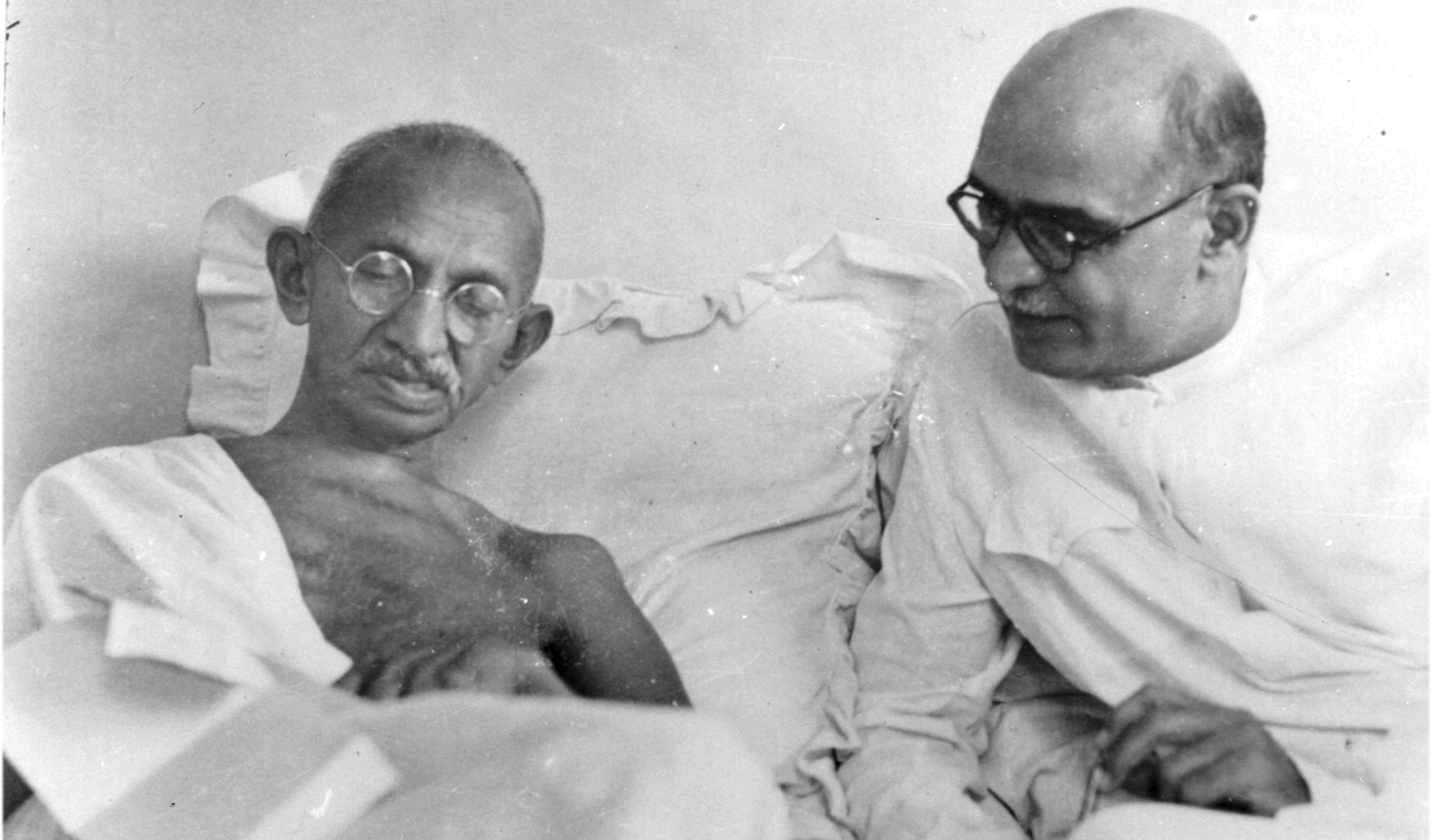
1932 Caste, Gandhi and the Man Beside Gandhi -
1933 - 1991 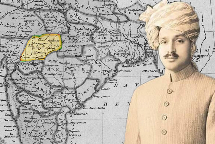
1933 - 1991 Raghubir Sinh: The Prince Who Would Be Historian -
1935 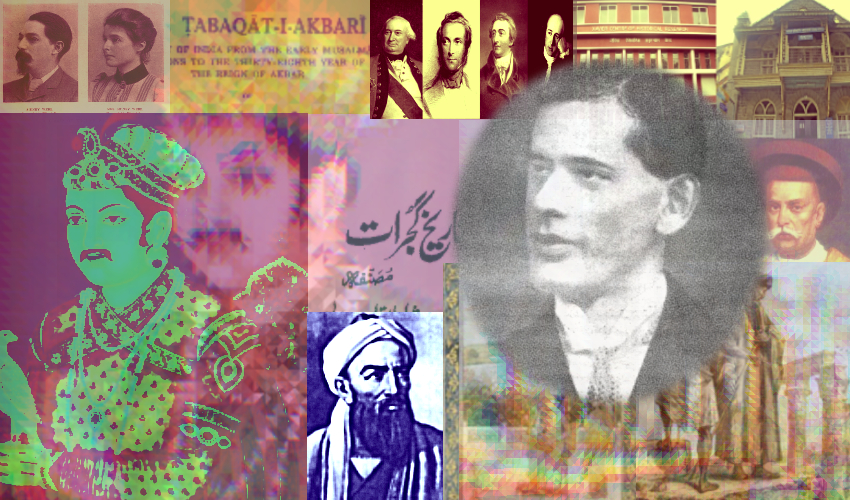
1935 A Historian Recommends: SA Khan’s Timeless Presidential Address -
1865-1928 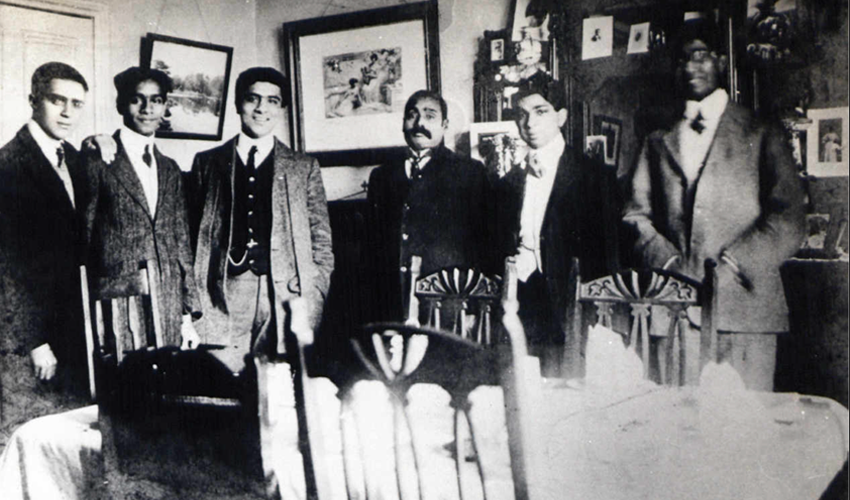
1865-1928 Understanding Lajpat Rai’s Hindu Politics and Secularism -
1935 Modern Review 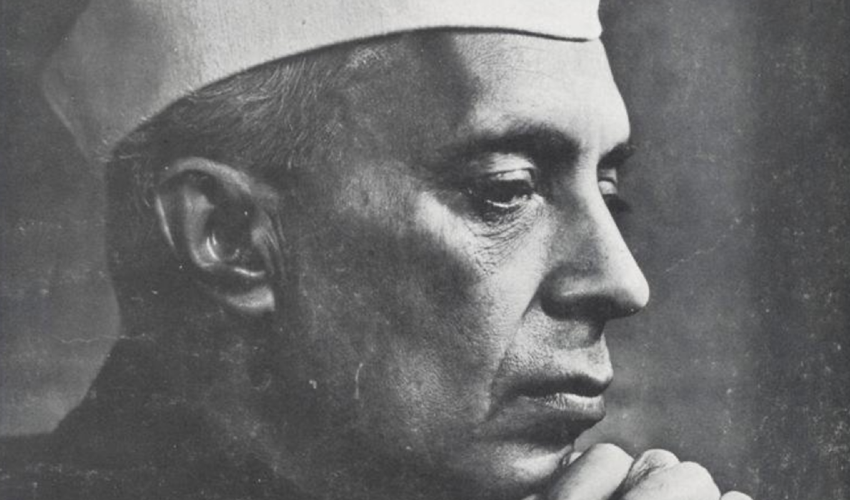
1935 The Modern Review Special: The Mind of a Judge -
1936 Modern Review 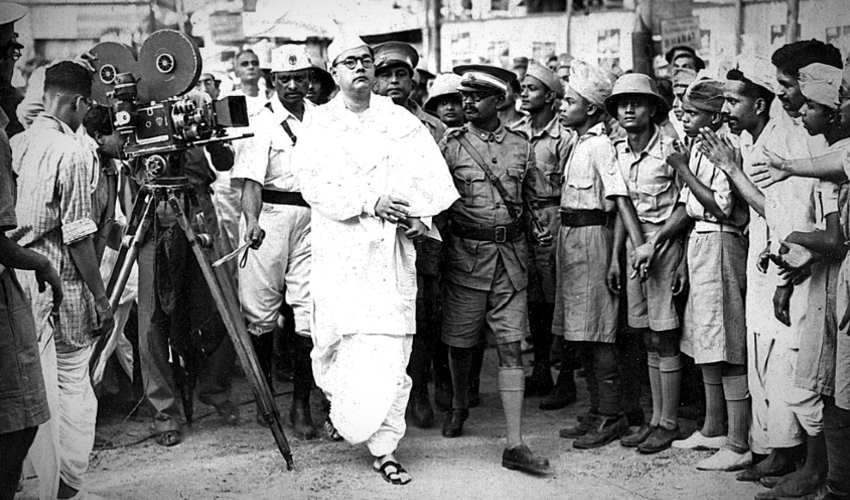
1936 The Modern Review Special: When Netaji Subhas Bose Was Wrongfully Detained for ‘Terrorism’ -
1936 
1936 Annihilation of Caste: Part 1 -
1936 Modern Review 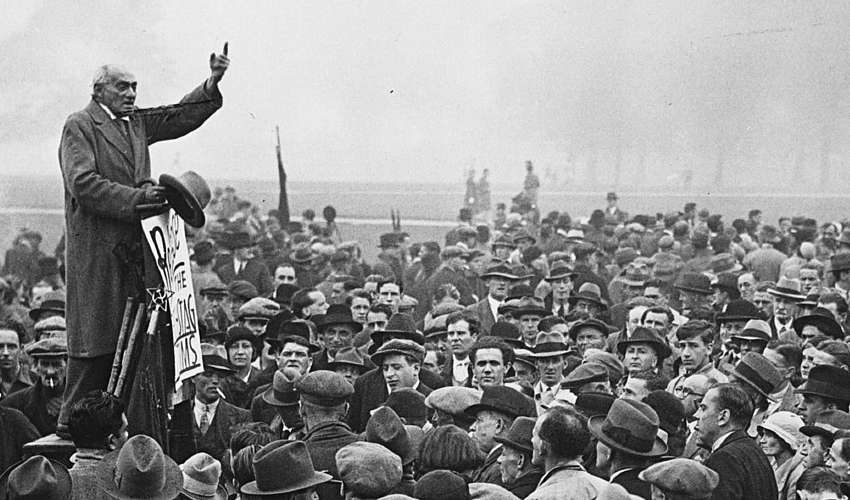
1936 The Modern Review Special: An Indian MP in the British Parliament -
1936 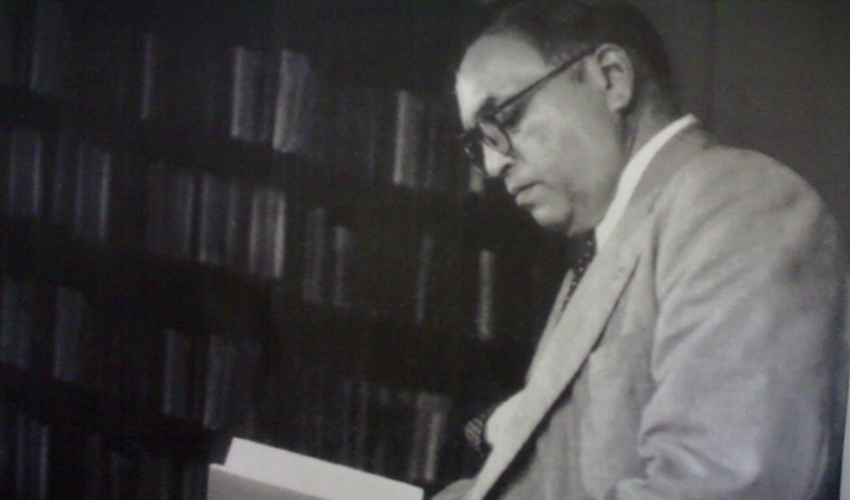
1936 Annihilation of Caste: Part 2 -
1936 
1936 A Reflection of His Age: Munshi Premchand on the True Purpose of Literature -
1936 Modern Review 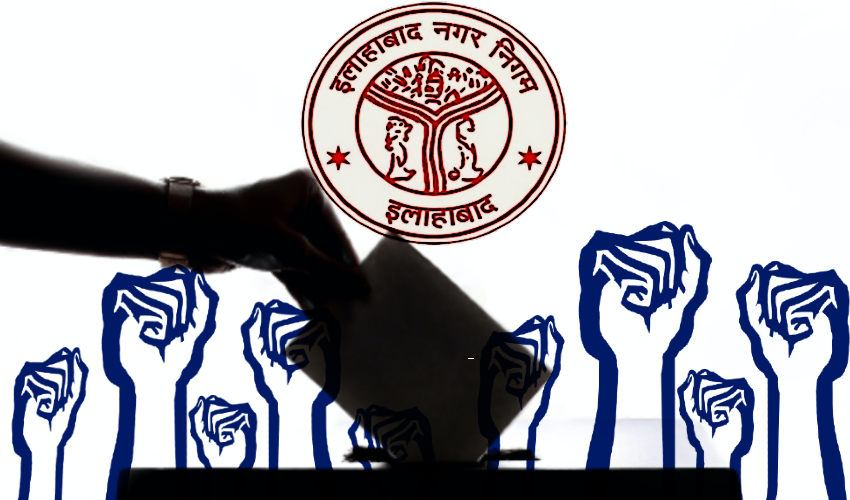
1936 The Modern Review Special: The Defeat of a Dalit Candidate in a 1936 Municipal Election -
1937 Modern Review 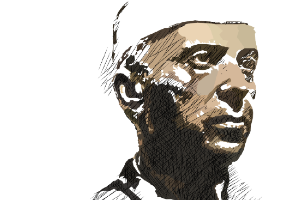
1937 The Modern Review Special: Rashtrapati -
1938 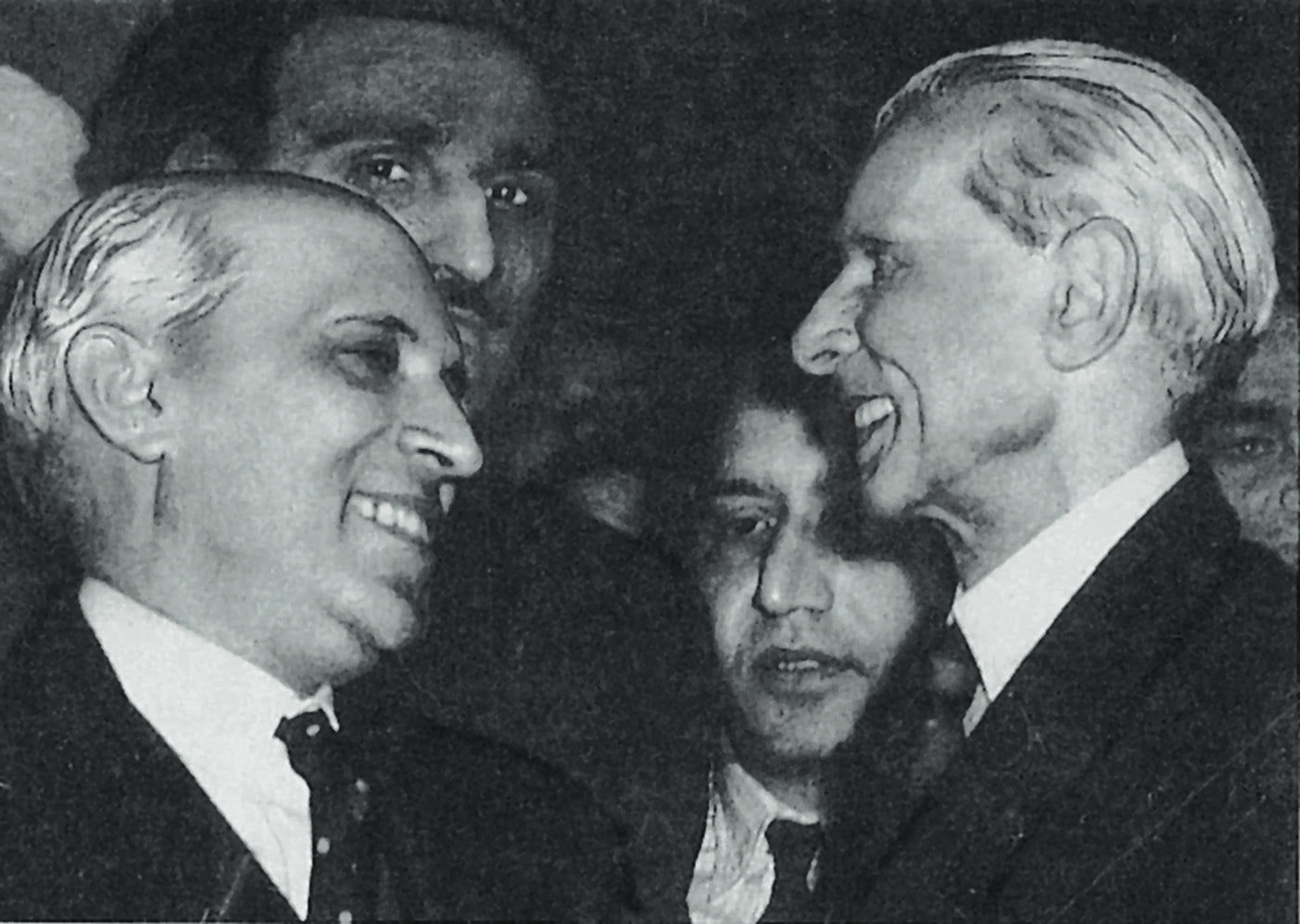
1938 Great Debates: Nehru Vs. Jinnah (1938) -
1942 Modern Review 
1942 IHC Uncovers: A Parallel Government In British India (Part 1) -
1942-1945 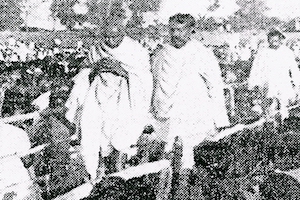
1942-1945 IHC Uncovers: A Parallel Government in British India (Part 2) -
1946 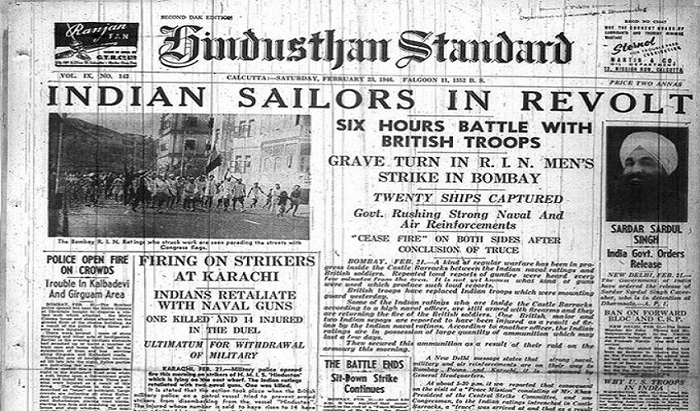
1946 Our Last War of Independence: The Royal Indian Navy Mutiny of 1946 -
1946 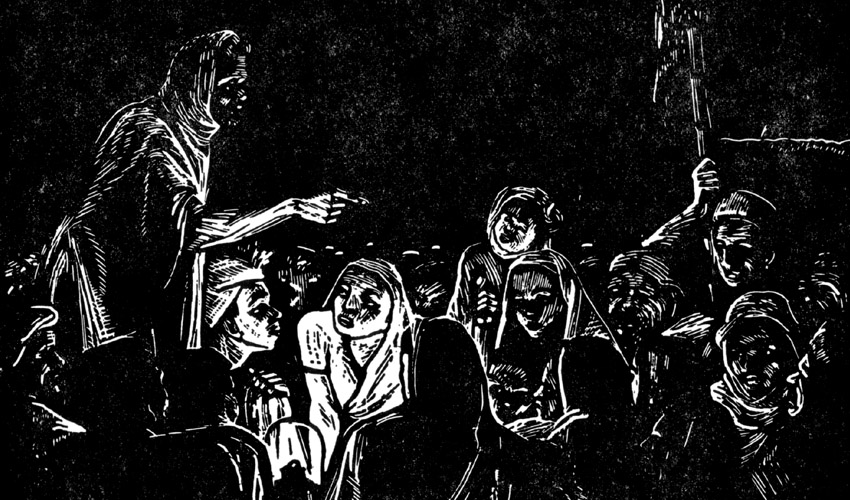
1946 An Artist’s Account of the Tebhaga Movement in Pictures And Prose -
1946 – 1947 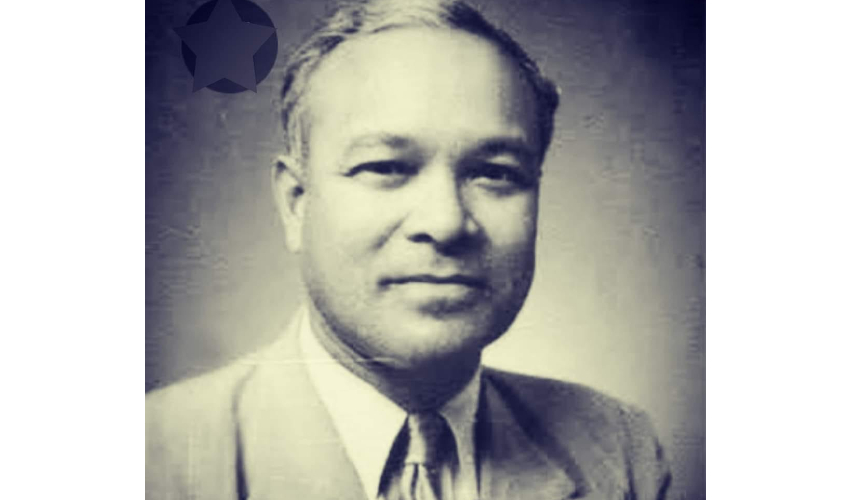
1946 – 1947 “The Most Democratic People on Earth” : An Adivasi Voice in the Constituent Assembly -
1946-1947 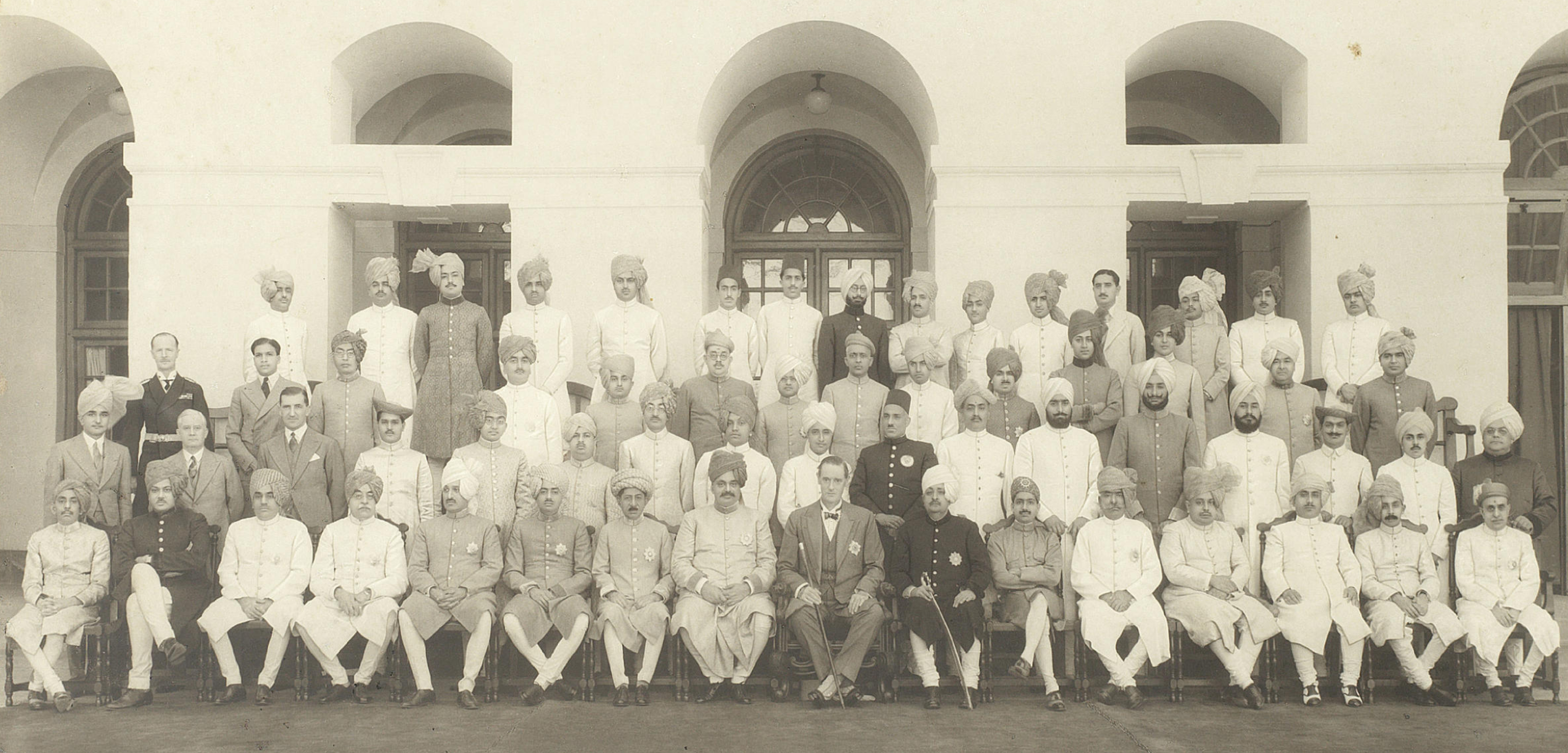
1946-1947 VP Menon and the Birth of Independent India -
1916 - 1947 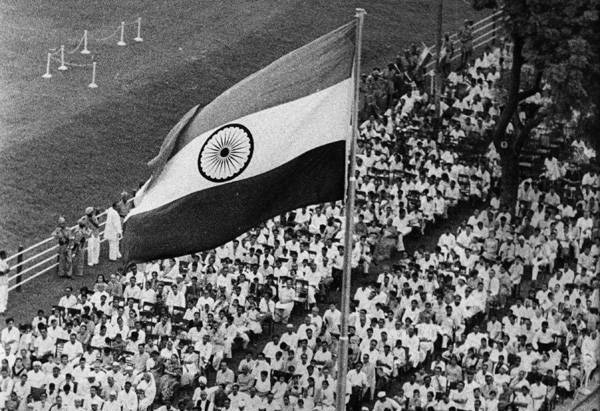
1916 - 1947 8 @ 75: 8 Speeches Independent Indians Must Read -
1947-1951 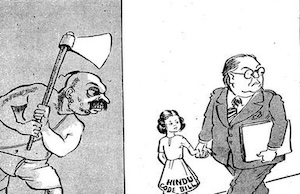
1947-1951 Ambedkar Cartoons: The Joke’s On Us -
1948 
1948 “My Father, Do Not Rest” -
1940-1960 
1940-1960 Integration Myth: A Silenced History of Hyderabad -
1948 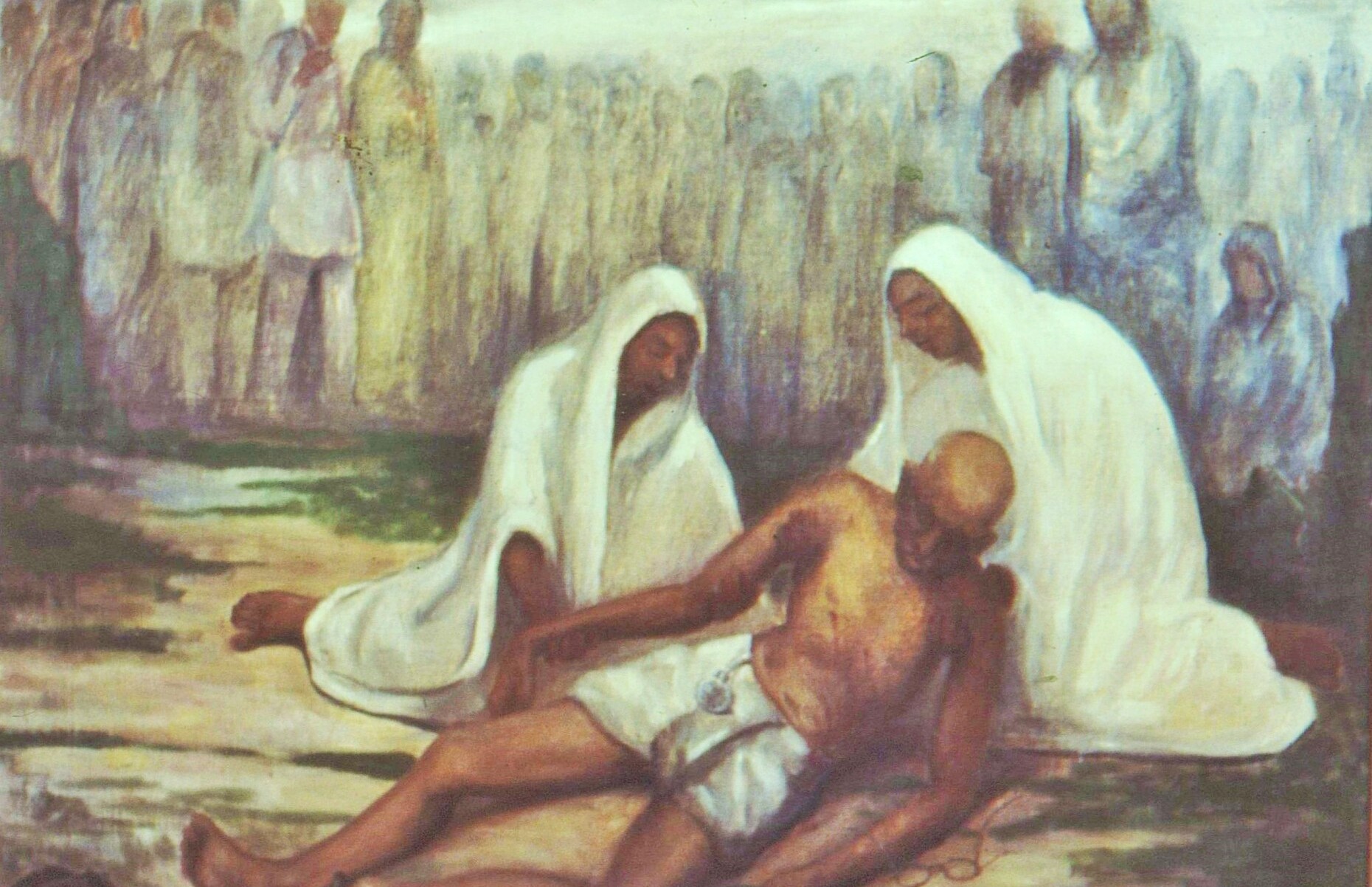
1948 The Assassination of a Mahatma, the Princely States and the ‘Hindu’ Nation -
1949 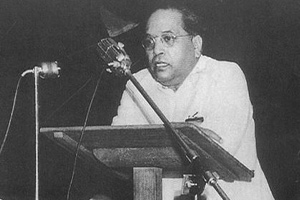
1949 Ambedkar warns against India becoming a ‘Democracy in Form, Dictatorship in Fact’ -
1950 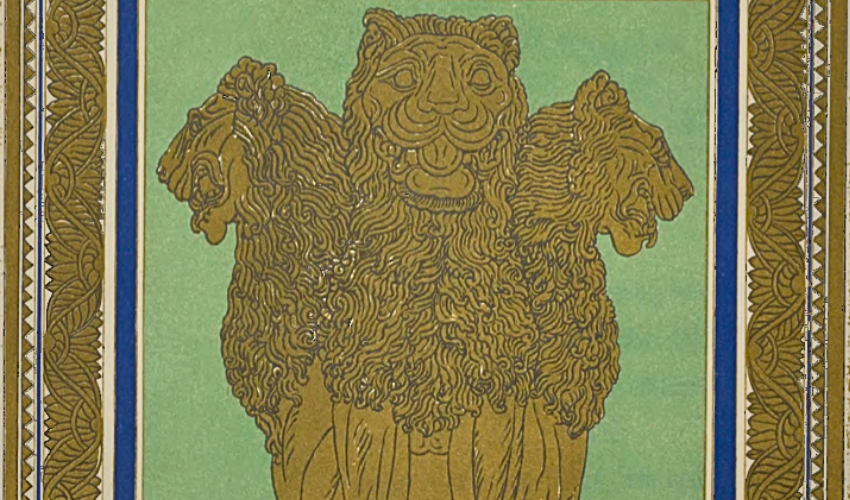
1950 Illustrations from the constitution -
1951 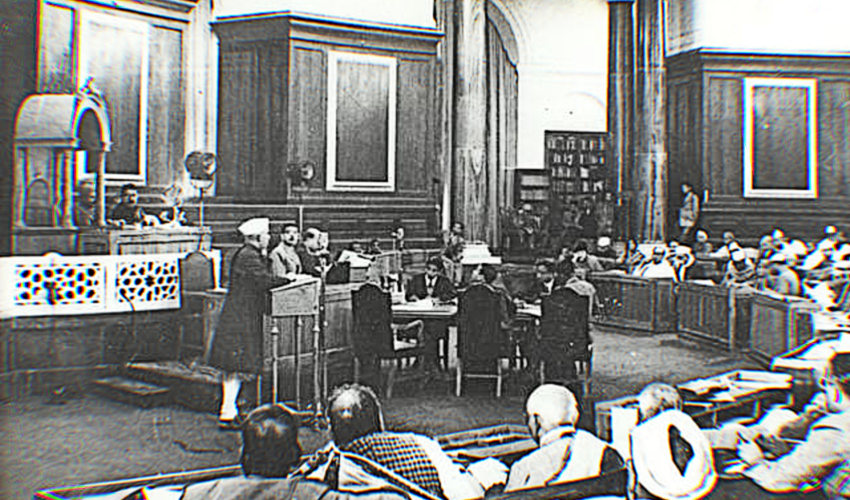
1951 How the First Amendment to the Indian Constitution Circumscribed Our Freedoms & How it was Passed -
1967 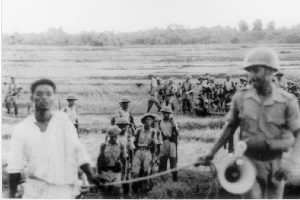
1967 Once Upon A Time In Naxalbari -
1970 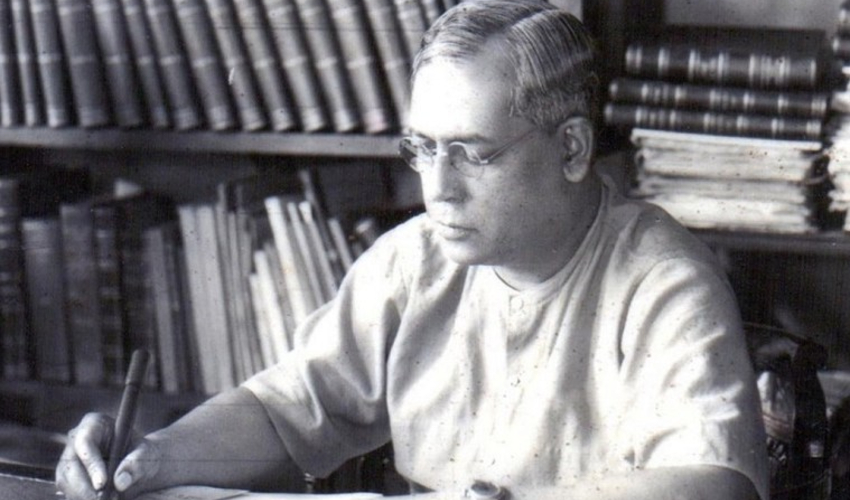
1970 R.C. Majumdar on Shortcomings in Indian Historiography -
1973 - 1993 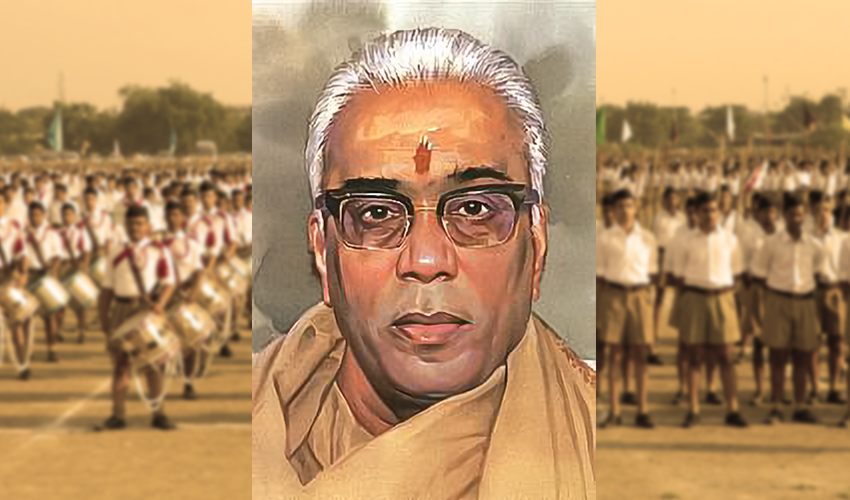
1973 - 1993 Balasaheb Deoras: Kingmaker of the Sangh -
1975 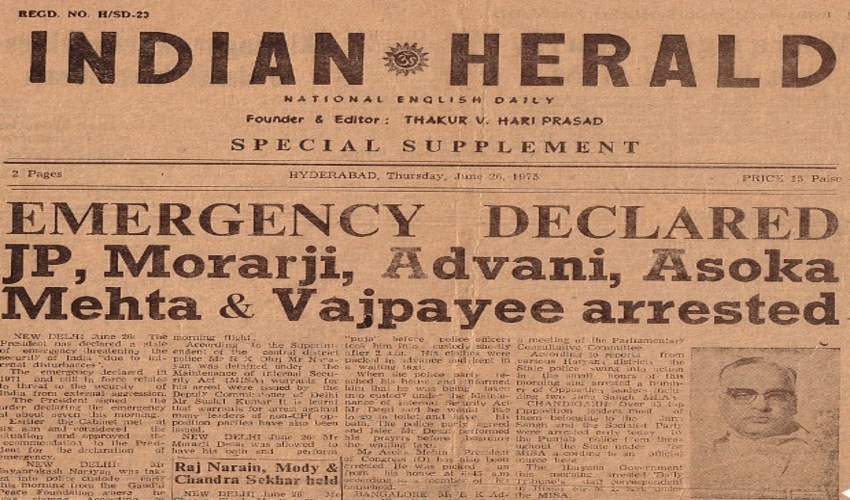
1975 The Emergency Package: Shadow Power -
1975 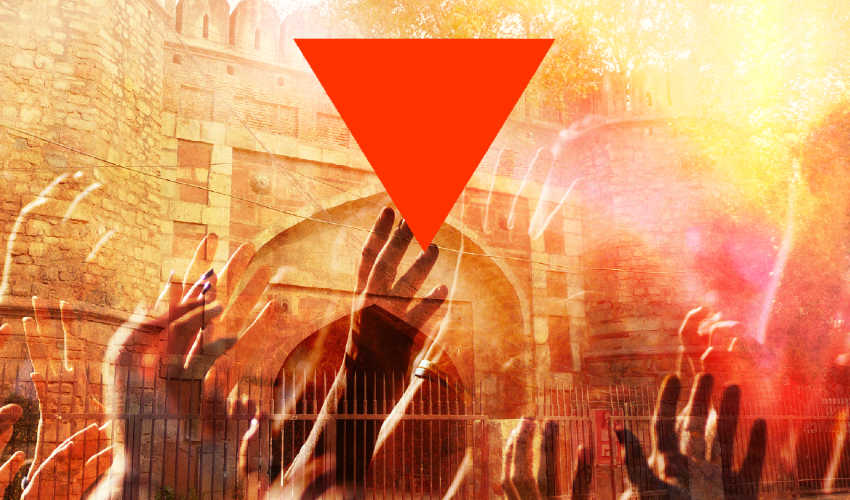
1975 The Emergency Package: The Prehistory of Turkman Gate – Population Control -
1977 – 2011 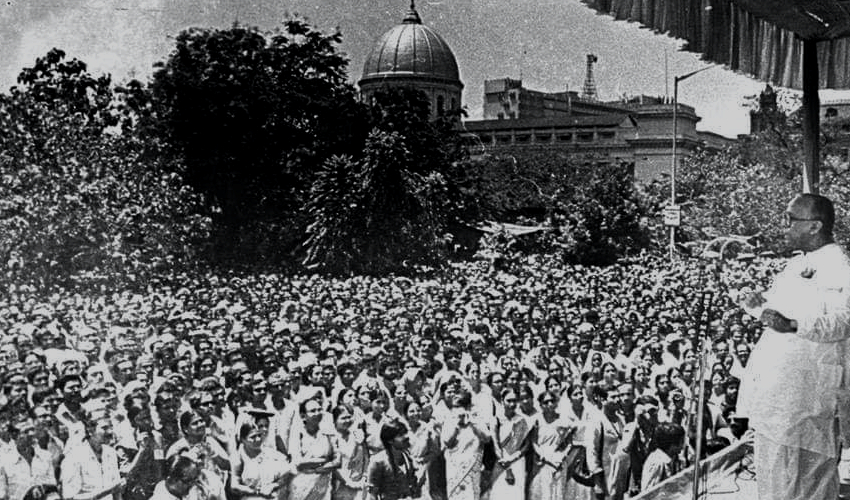
1977 – 2011 Power is an Unforgiving Mistress: Lessons from the Decline of the Left in Bengal -
1984 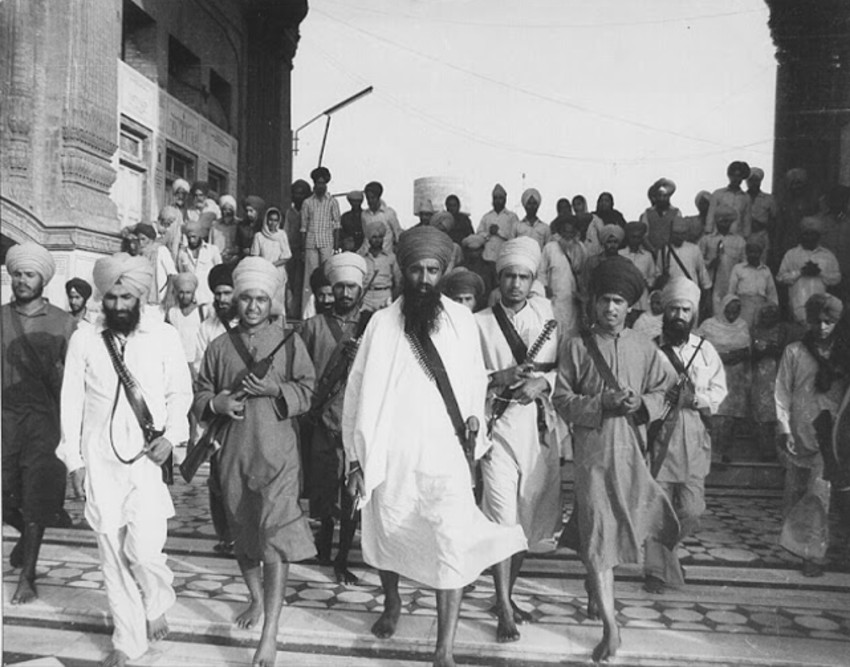
1984 Mrs Gandhi’s Final Folly: Operation Blue Star -
1916-2004 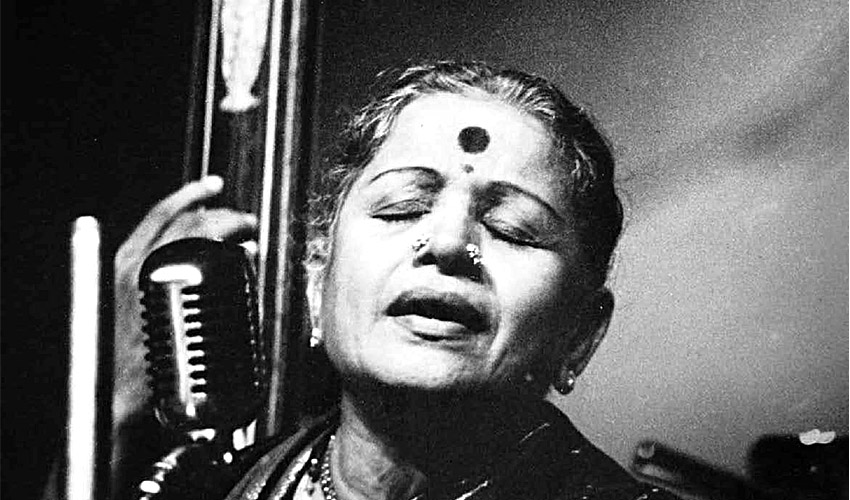
1916-2004 Amjad Ali Khan on M.S. Subbulakshmi: “A Glorious Chapter for Indian Classical Music” -
2008 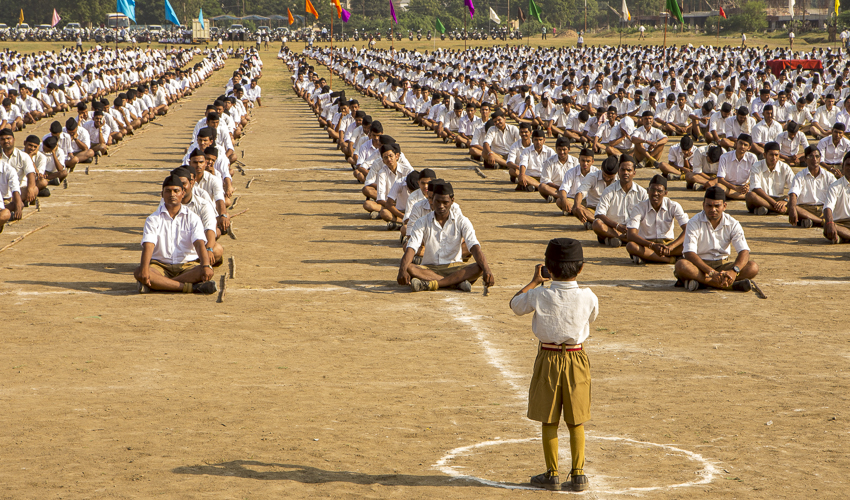
2008 Whose History Textbook Is It Anyway? -
2006 - 2009 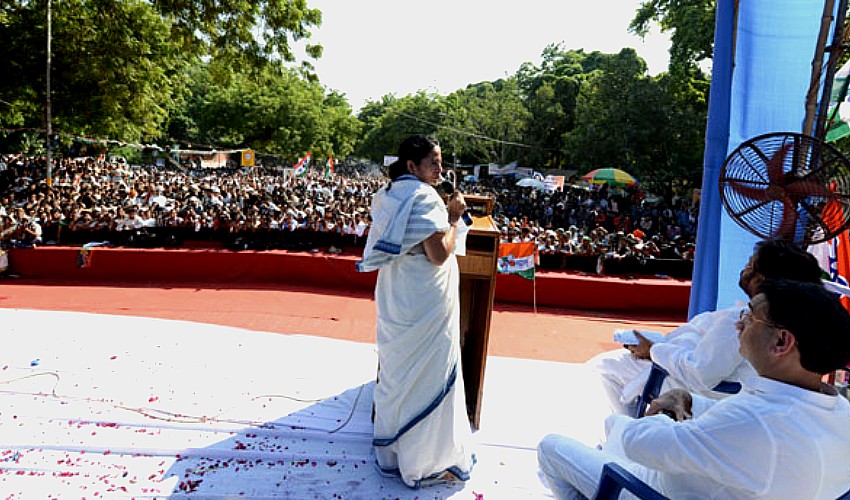
2006 - 2009 Singur-Nandigram-Lalgarh: Movements that Remade Mamata Banerjee -
2020 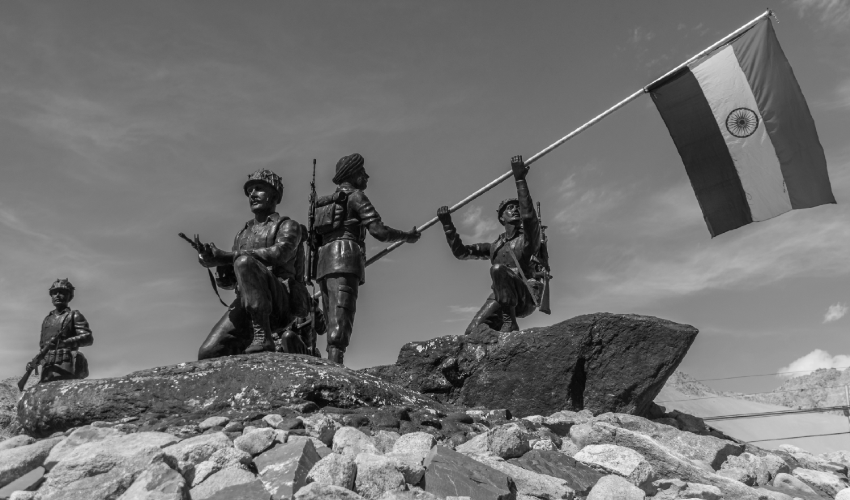
2020 The Indo-China Conflict: 10 Books We Need To Read -
2021 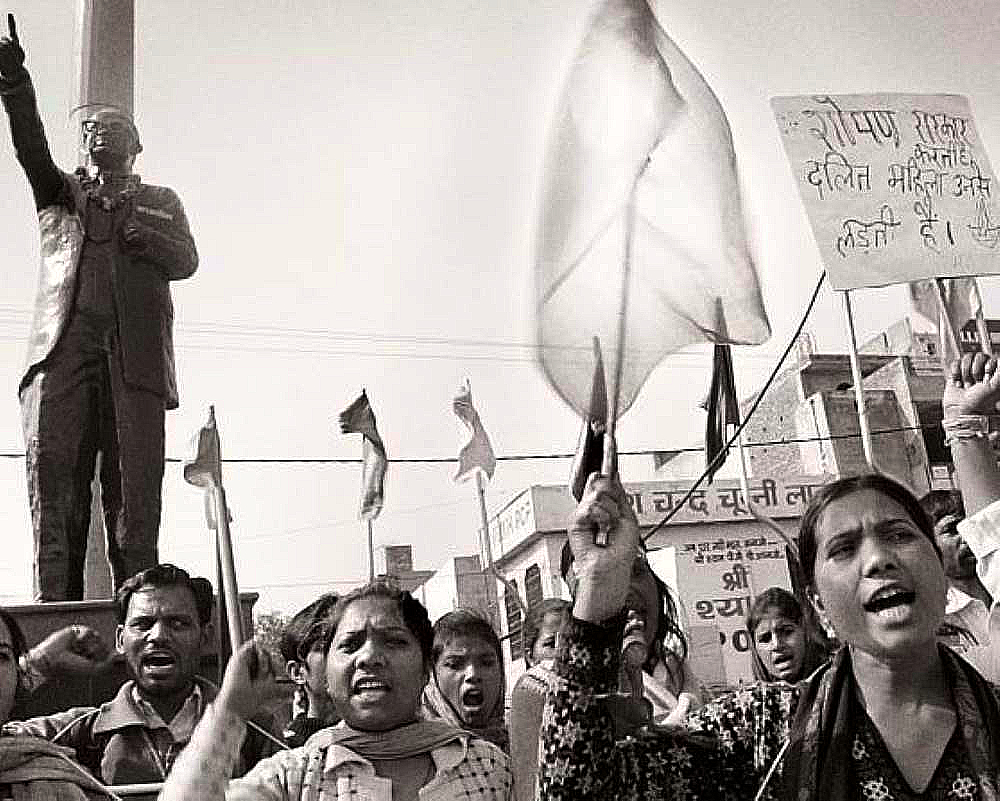
2021 Singing/Writing Liberation: Dalit Women’s Narratives

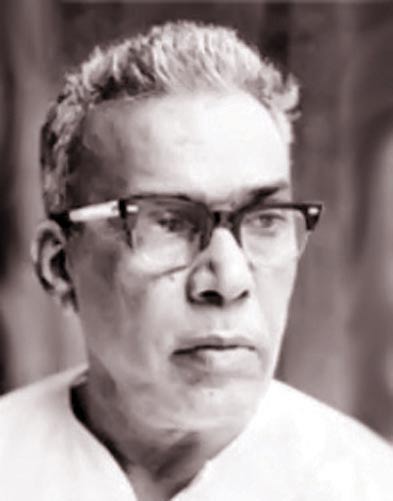

![The Golden Temple, Amritsar. [Credit: sandeepachetan.com, Flickr (CC BY-NC-ND 2.0)]](http://indianhistorycollective.com/wp-content/uploads/2021/06/Gtempke.jpeg)

